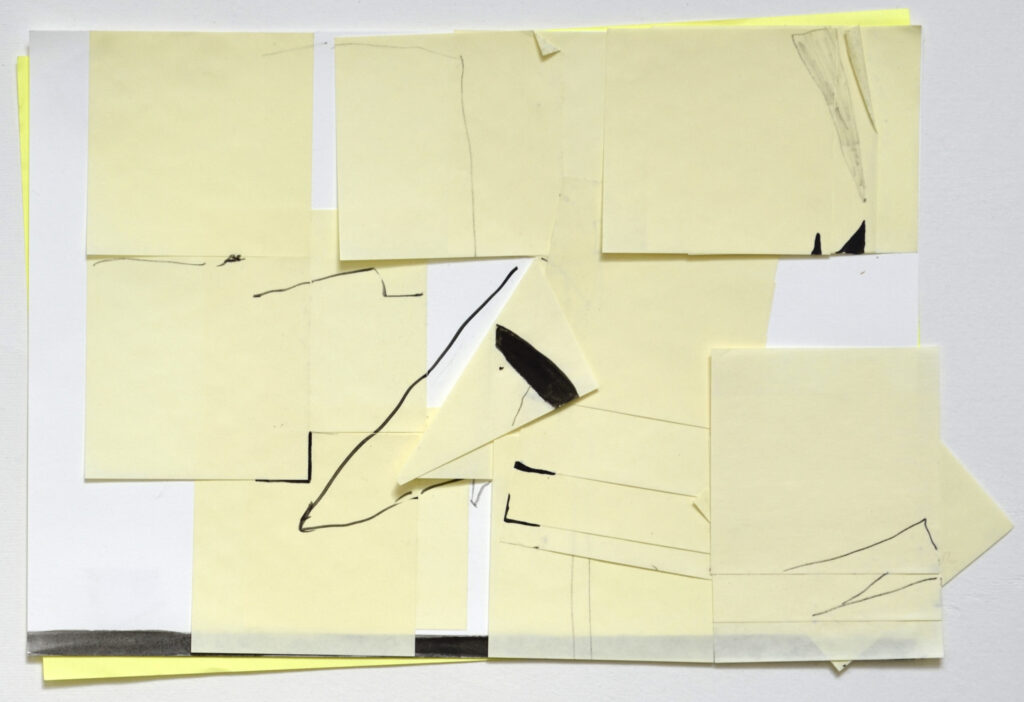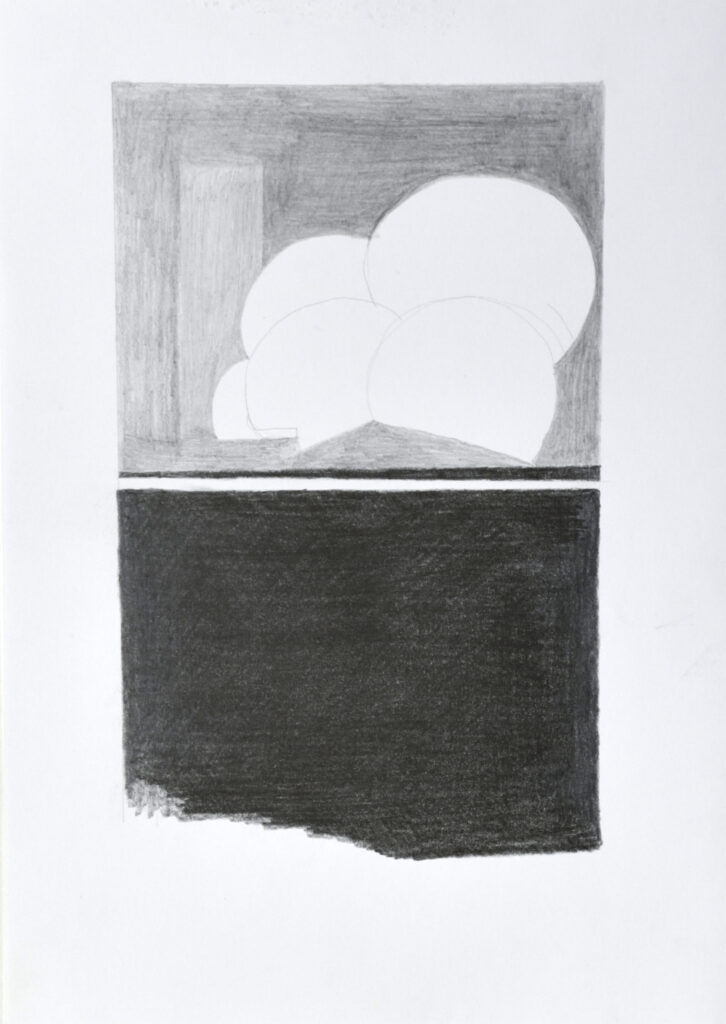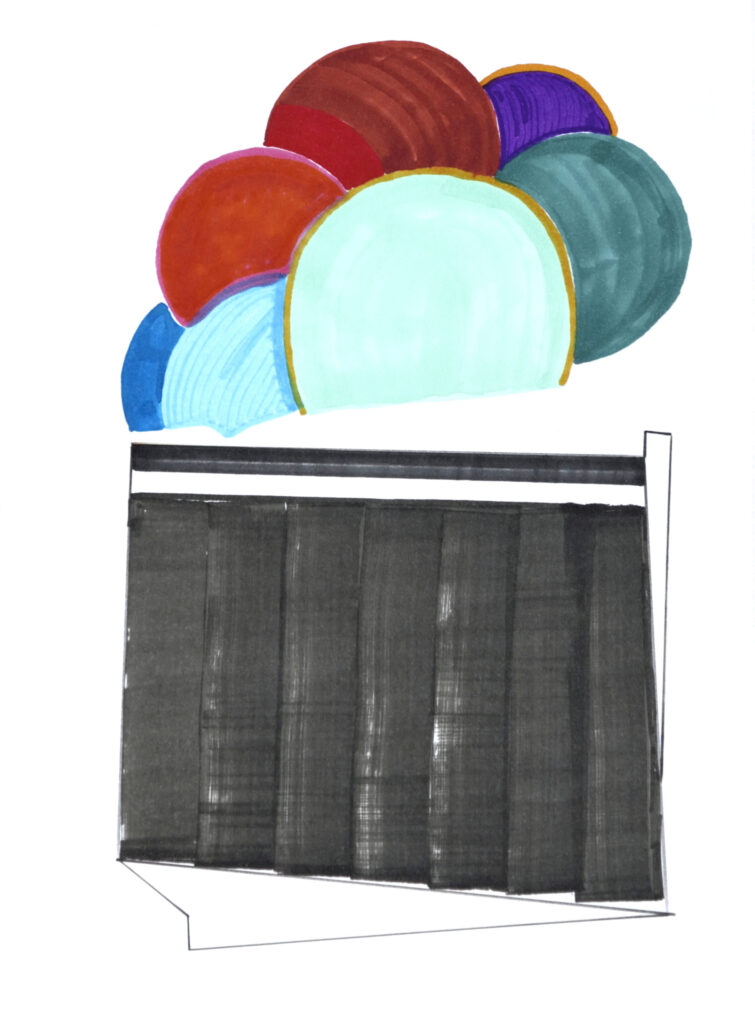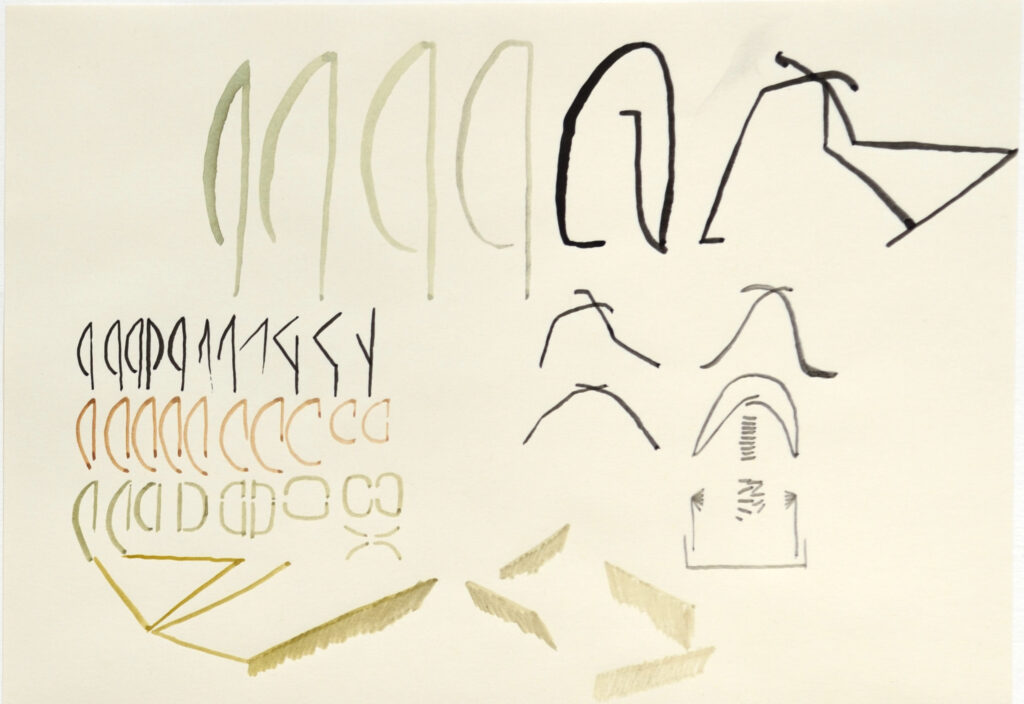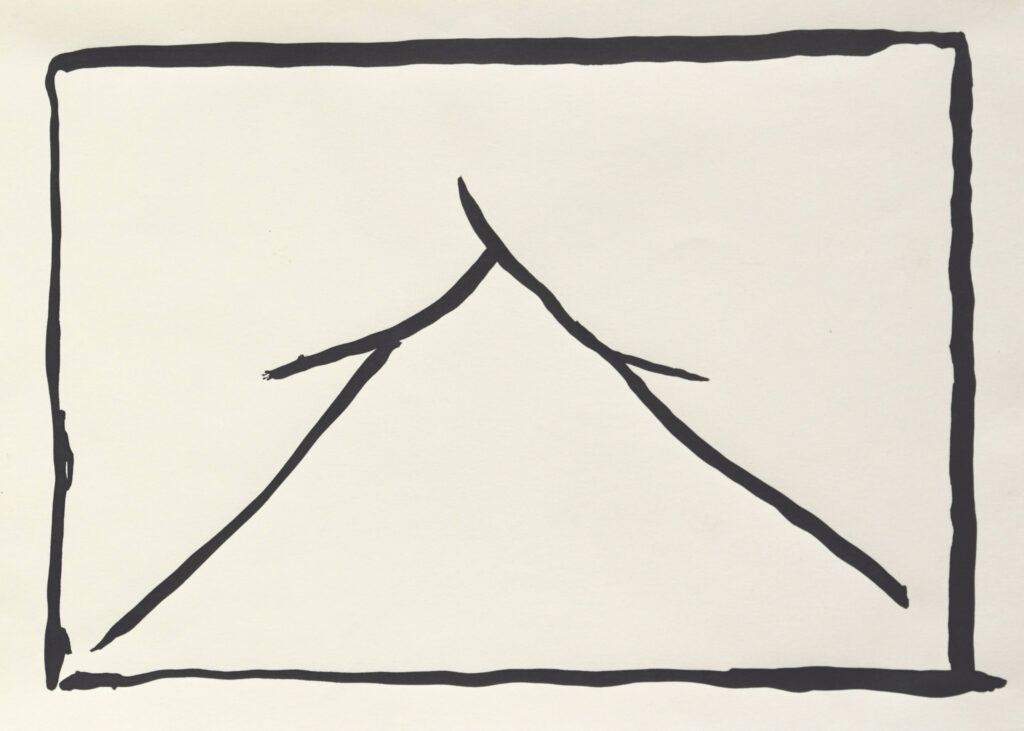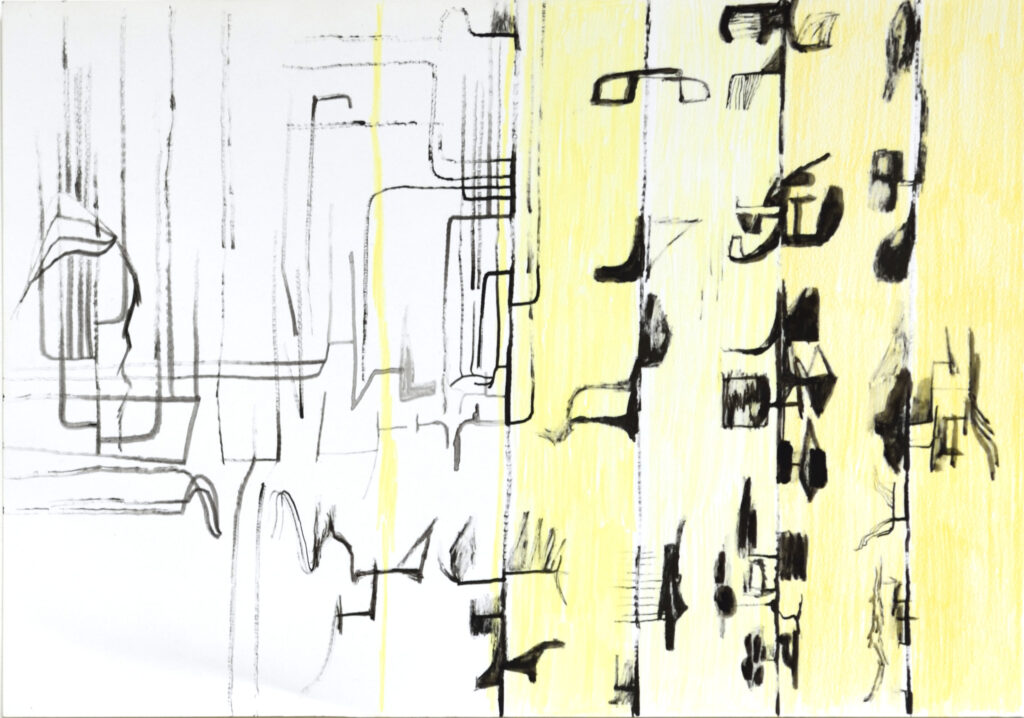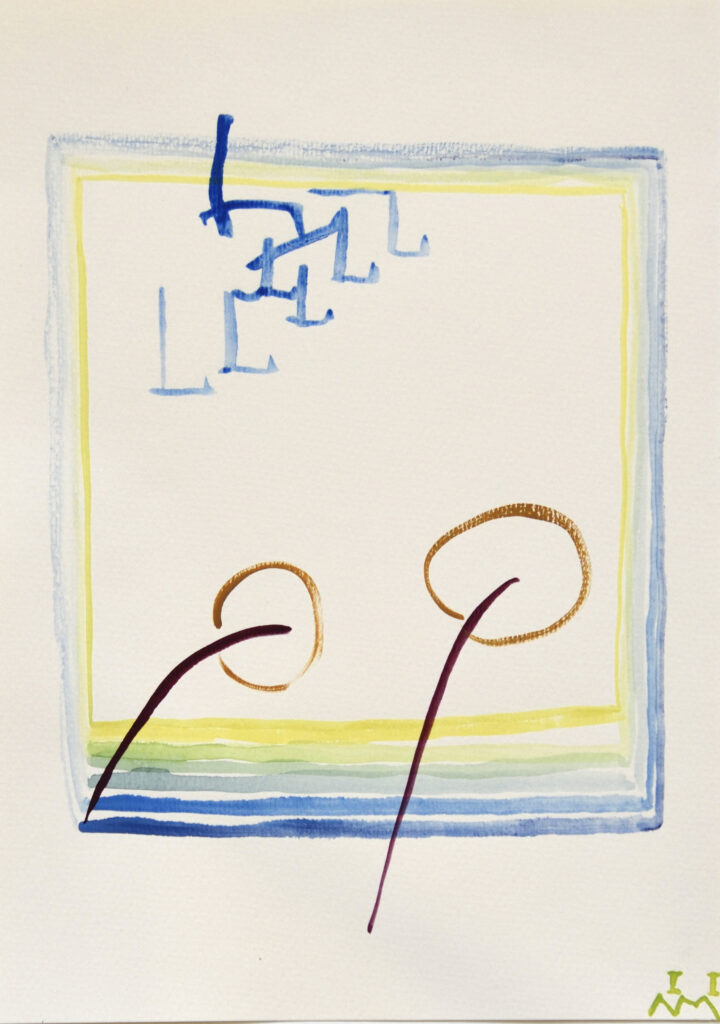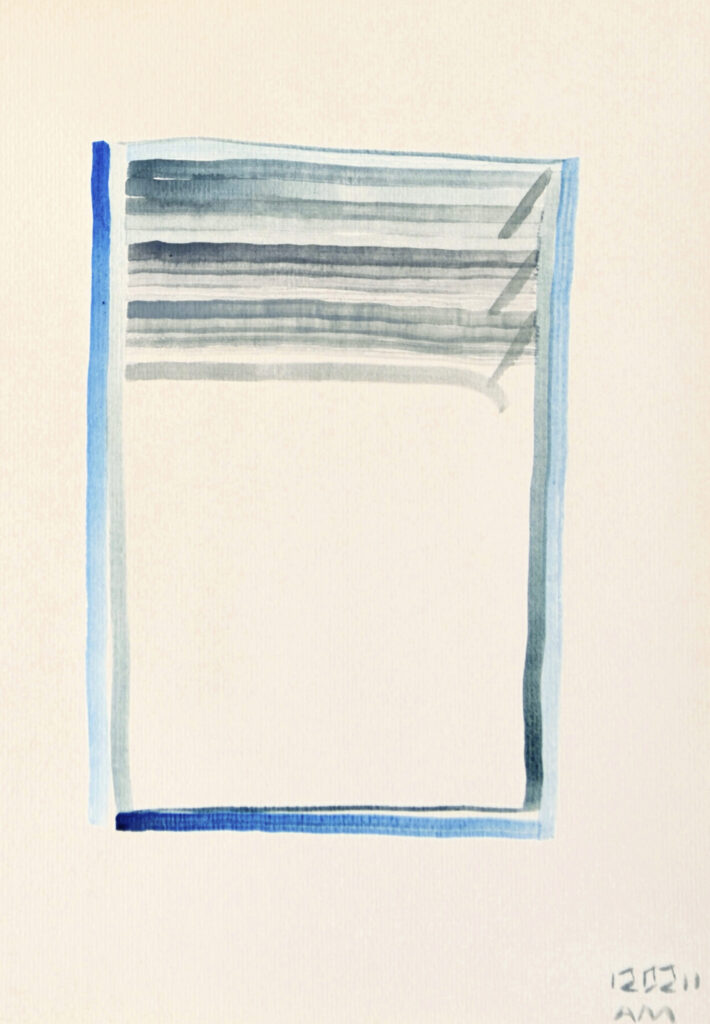2025
Drawings from the series:
„Die Entwurzelten, lo Sradicato, the uprooted – in Gedenken an Ursula Hirschmann“, 2025
„The Ventotene Manifesto, whose full title was For a Free and United Europe. Project for a Manifesto, was drafted on the Italian island of Ventotene, where around a thousand anti-fascists were detained during the war. Its main author was Altiero Spinelli. Born in 1907, Spinelli started his political life in the ranks of the Communist Party of Italy. Because of his position as secretary of the youth branch of this party, in 1927 he found himself sentenced to ten years in prison; this was followed by a further period of confinement (first on the island of Ponza and then on Ventotene)…Another important contributor to the Manifesto was Ernesto Rossi, a founder and leading campaigner of the Giustizia e Libertà (Justice and Freedom) movement and later of the Partito d’Azione (Action Party); in 1937 he, too, had already begun reflecting in depth on the idea of a United States of Europe. The text of the Manifesto is also the result of an extensive, months-long debate with Eugenio Colorni and his wife Ursula Hirschmann, which also saw the participation of a small group of other captives who went on to sign up to the Manifesto…The text of the Manifesto, written by Rossi on cigarette papers, was smuggled out of Ventotene (hidden in a roast chicken) by Ursula Hirschmann, Ada Rossi (Ernesto’s wife) and Spinelli’s sisters Fiorella and Gigliola, who all had access to the island. In July 1941, a typed version began to circulate in Rome and Milan. Before long, the text had travelled much further afield. By early 1942, it had reached both Switzerland and France, where it was brought to the attention of Silvio Trentin, and by 1943 Germany, where a translation by Ursula Hirschmann was distributed in anti-Nazi circles…“
ink on paper, 70 x 70 cm
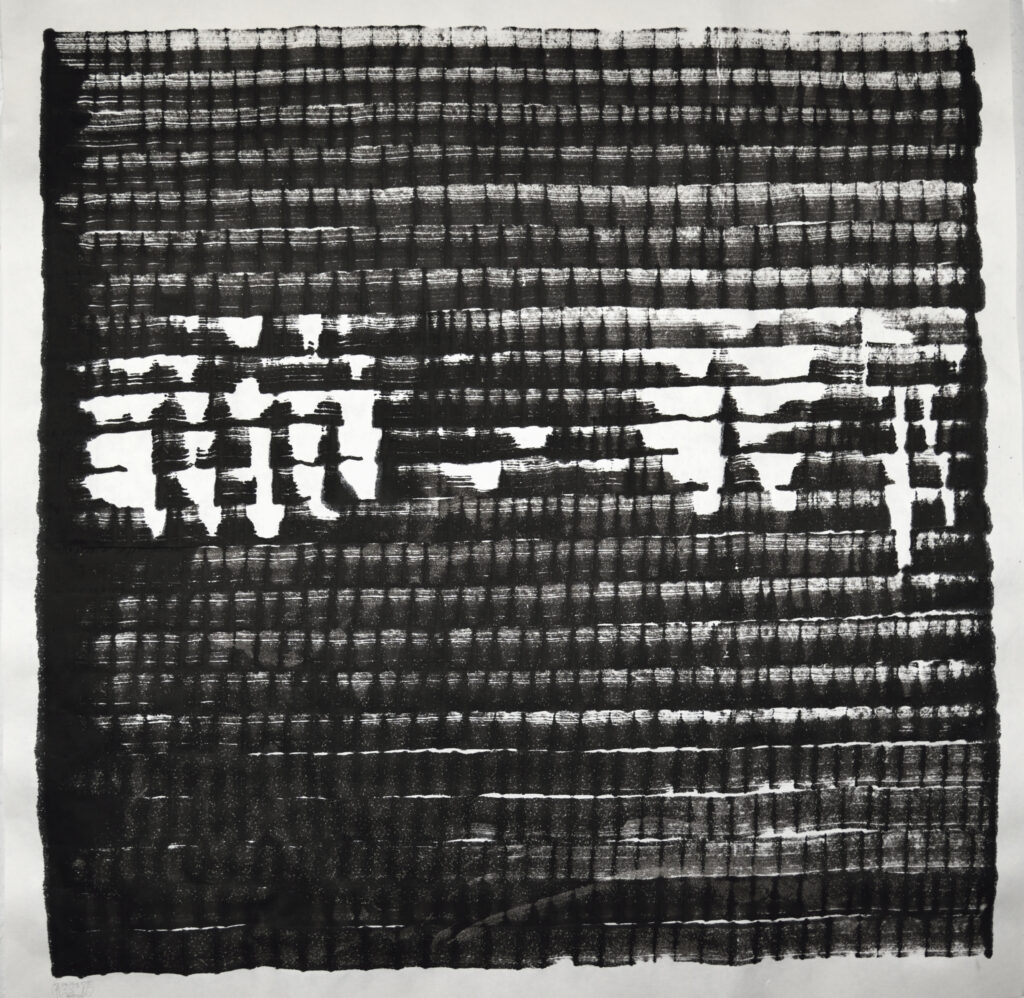

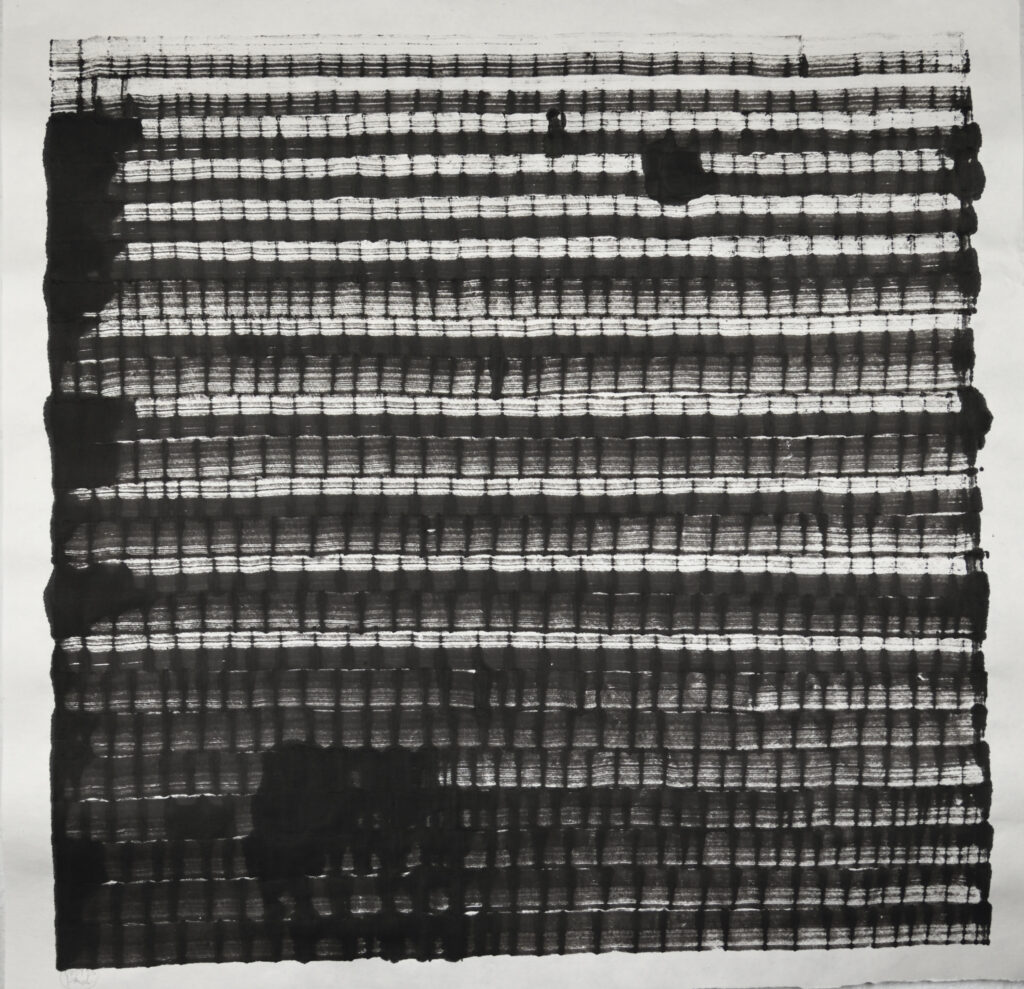
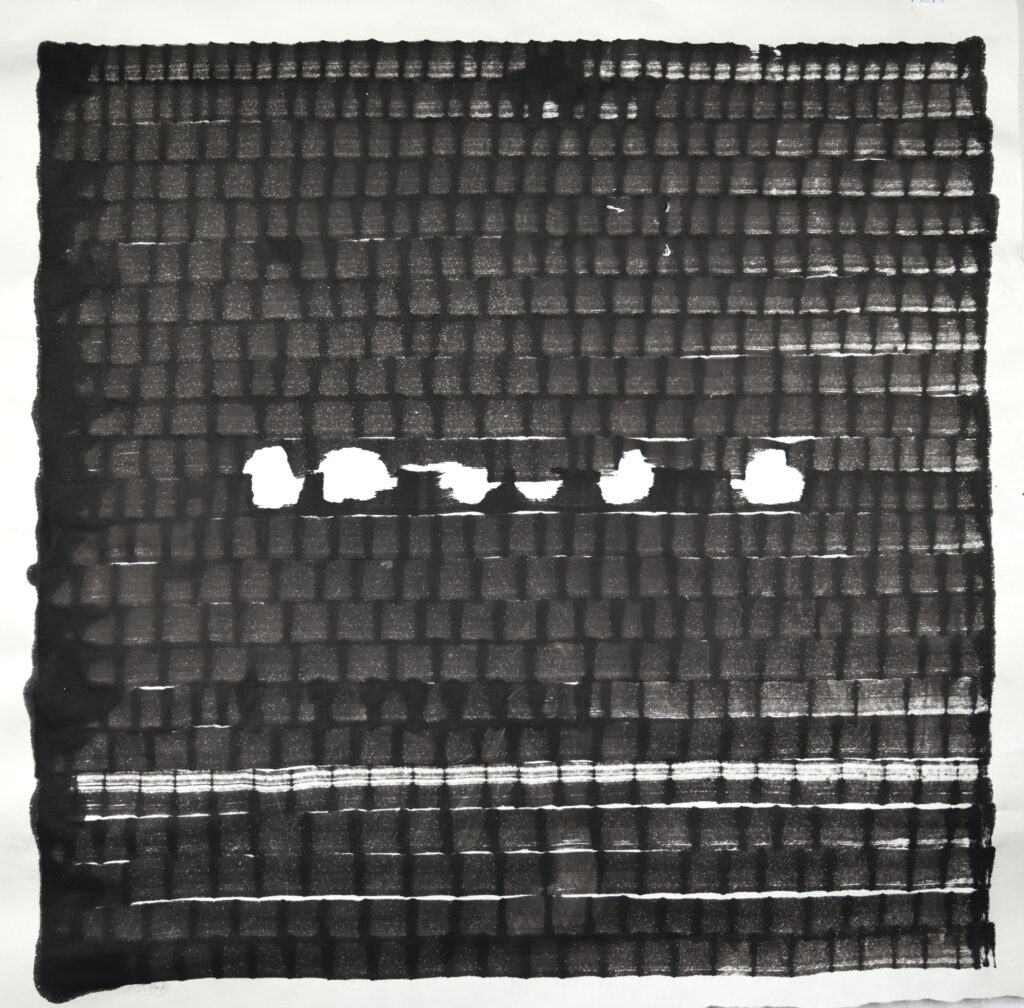
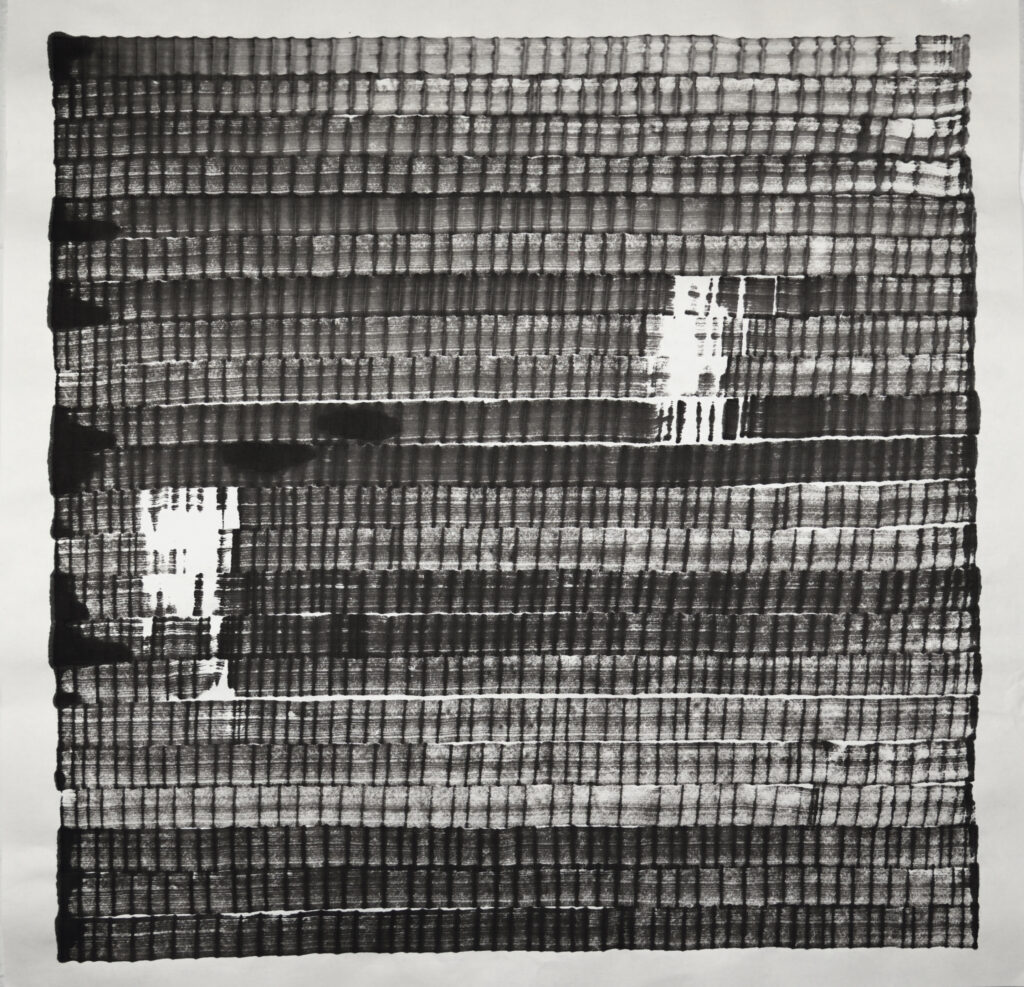

INSEL DER VERBANNTEN // ISLE OF THE EXILED
vom Goldenen Käfig über Gefängnis und Strafkolonie zum Themenresort // from the Golden Cage to prison and penal colony to themed resort
Marc Wellmann (textparts from the catalog INSULA 24/25, Ventotene residency)
VENTOTENE
„…Nach dem Niedergang des Weströmischen Reiches 476 n. Chr. geriet auch der griechische Name der Insel allmählich in Vergessenheit. Erstmals in mittelalterlichen Quellen wurde sie als „Ventotenensis“ bezeichnet, was sich als „windige Insel“ (vom italienischen vento = „Wind“ und tenere = „halten“) übersetzen lässt…“
EN „…After the fall of the Western Roman Empire in 476 AD, the Greek name of the island gradually faded from memory. It was first mentioned in medieval sources as „Ventotenensis,“ which can be translated as „windy island“ (derived from the Italian word vento, meaning „wind,“ and tenere, meaning „to hold“). …“
„…Direkt neben Ventotene befindet sich die fast kreisrunde, unbewohnte felsige Erhebung SANTO STEFANO. 1796 wurde dort unter König Ferdinand IV. der Grundstein für ein hufeisenförmiges Gefängnis nach der damals modernen panoptischen Bauweise gelegt, die eine Überwachung der Gefangenen von einem zentralen Beobachtungspunkt aus ermöglichte. In den folgenden Jahrhunderten waren dort vor allem Schwerverbrecher und politische Gefangene inhaftiert, darunter Kämpfer des Risorgimento wie die Anti-Royalisten Luigi Settembrini (1813–1876) und Carmine Crocco (1830–1905) sowie der Anarchist Gaetano Bresci (1869–1901), der 1900 den italienischen König Umberto I. erschossen hatte….“
EN „…Adjacent to Ventotene lies the nearly circular, uninhabited rocky island of Santo Stefano. In 1796, under King Ferdinand IV, construction began on a horseshoeshaped prison designed in the then modern panoptic style, which allowed for prisoners to be observed from a central observation point. Over the centuries, the prison primarily housed serious criminals and political prisoners, including Risorgimento fighters such as the antiroyalists Luigi Settembrini (1813-1876) and Carmine Crocco (1830-1905), as well as the anarchist Gaetano Bresci (1869-1901), who assassinated King Umberto I of Italy in 1900. …“
A series of approximately 7 drawings were created on site:
„Isola Santo Stefano“, 2024, 14,8 x 21 cm, ink on ricepaper
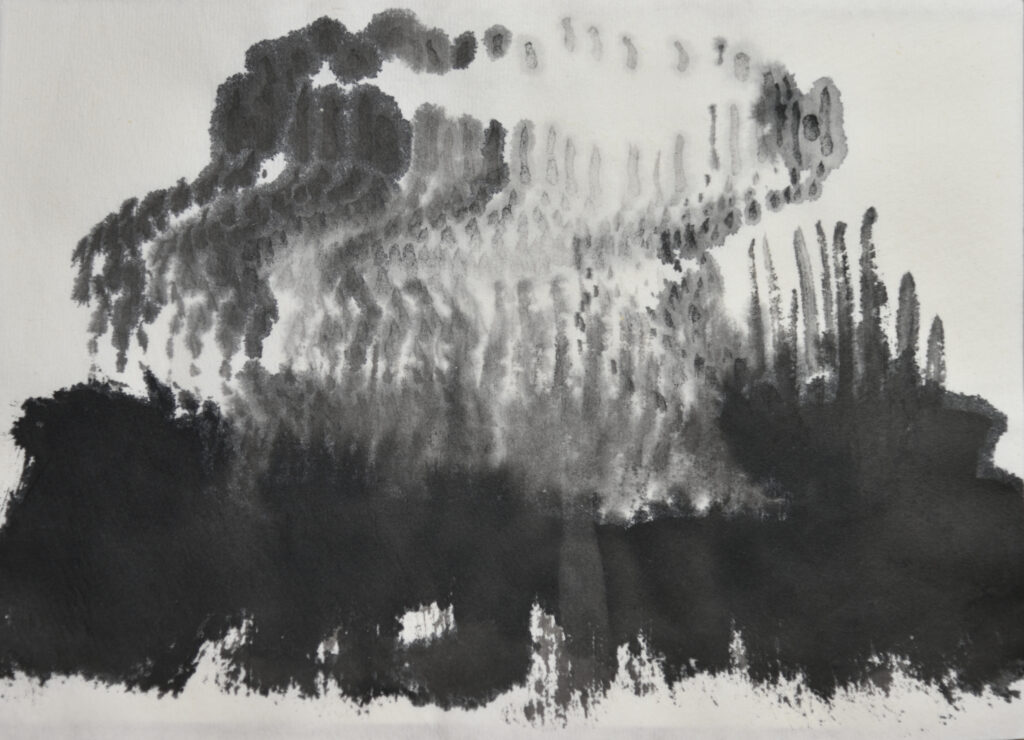
„Isolo Scoglio la Nave, Nave die Fuori, Scoglitiello (Spiaggia Cala Nave)“, 2024, 14,8 x 21 cm, ink on ricepaper
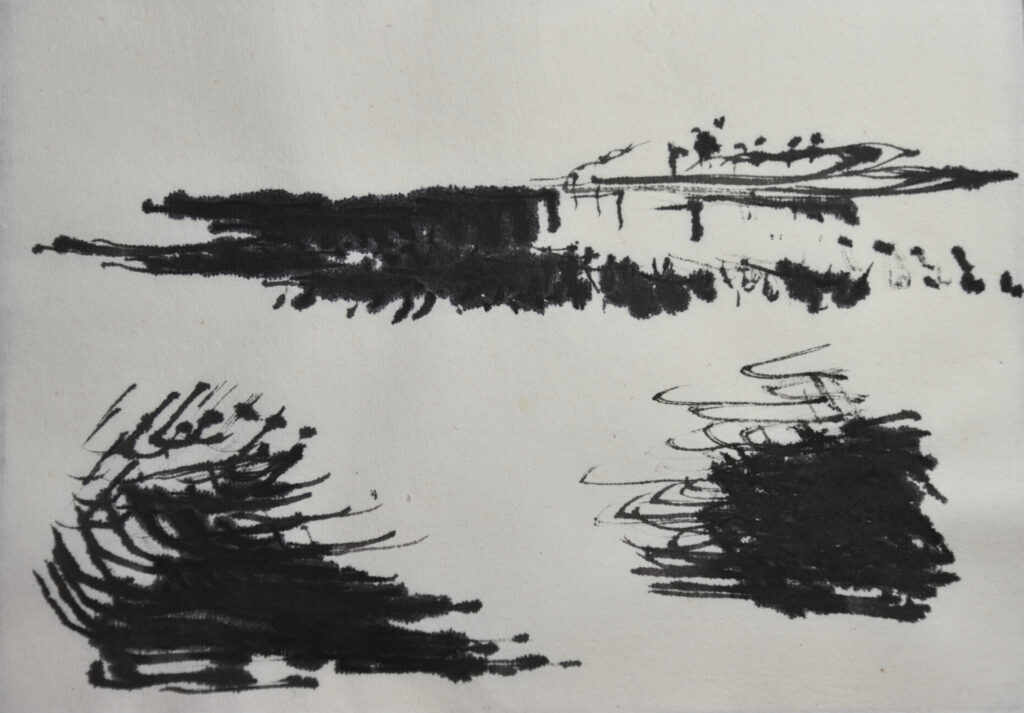
„Grotta dei Passeri (Cala Rossano)“, 2024, 14,8 x 21 cm, ink on ricepaper
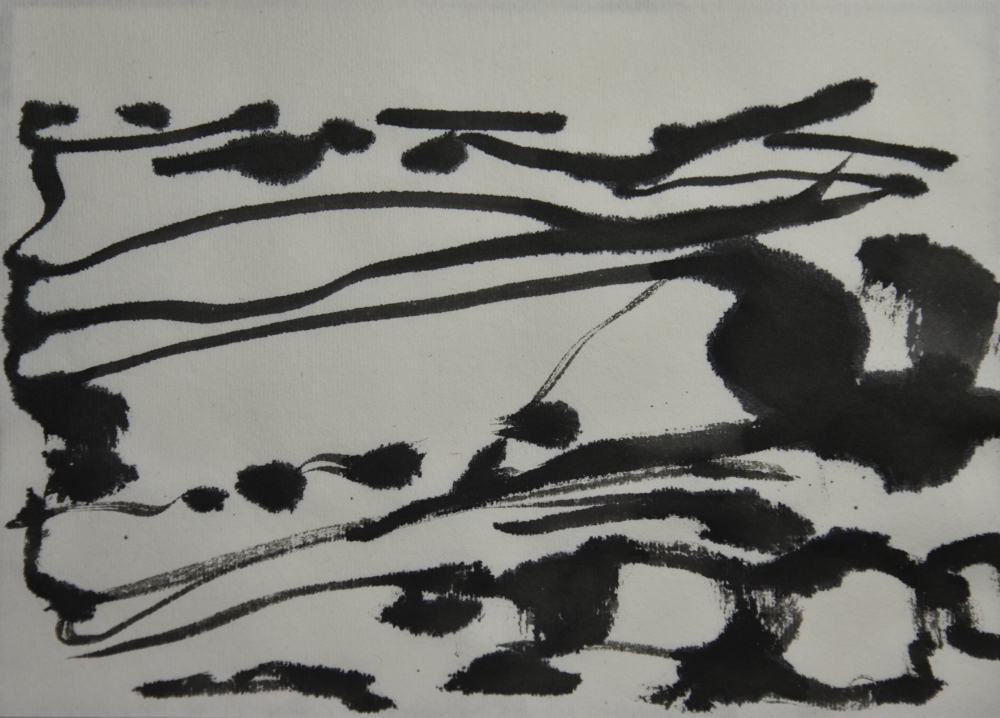
„Costa rocciosa: Il Rosso (Romanello di Battaglia)“, 1-4, 2024, 21x 14,8 cm, ink and prickly pear juice on paper

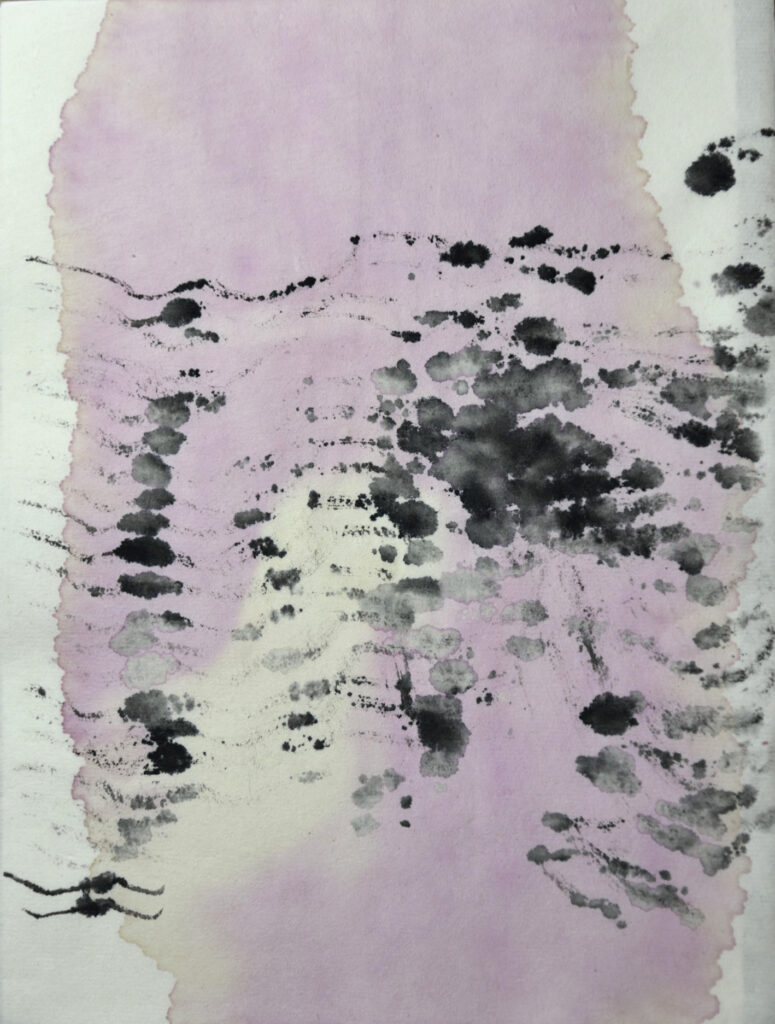
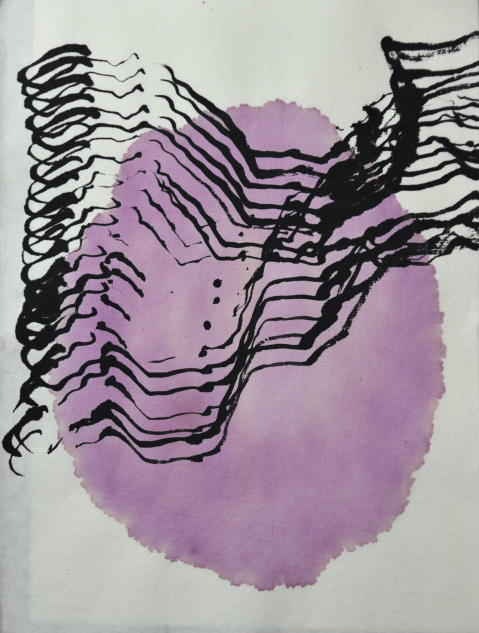

Von Abbruchkante bis Rocksaum
08.03.-10.05.2025
DUO- Ausstellung, Galerie Roter Pavillon, Kunstverein zu Bad Doberan e.V.
„Abbruchkante“, Tusche auf Papier, 140 x 140 cm, 2025

Wenn die Sirenen heulen (Symptome)
kuratiert von Dirk Teschner & Anne Mundo
28.09.-20.10.2024 SchauFenster, Berlin
(ENGLISH Version below)
Lockdownsolo, Zeichnung, Teil der videografischen Performance „My holidays 2020 – Promenade Solitaire – Solo, Juli 2020“,
Solo-Intervention im Max Liebermann Haus der Stiftung Brandenburger Tor, Tusche auf Papier, 175 x 350 cm
Das Drängen und Ausbrechen in den Raum hinein bezeichnet Anne Mundo in dieser Arbeit.
„Lockdownsolo“ entstand während des ersten Corona Lockdowns, als die Bevölkerung ihre Wohnung nur zu lebensnotwendigen Einholungen verlassen durfte. Die auf Zeitungen ausgelegten Papierrollen bezeichnet Anne Mundo schreitend mit einem Kalligrafiepinsel und japanischer Tusche. Sie zieht den Pinsel neben sich her, während sie blickend auf die Wandenden, und durch diese begrenzt, an ihnen entlanggeht. Fünf mal schreitet sie den Raum an seinen Begrenzungen ab, zeichnend, nach und nach seine Mitte erreichend, bis sie sich selber (optisch) einschließt im gezeichneten Raum. Es gibt einen Moment des Innehaltens, einen Moment der Realisation, einen Moment des Still Stehens, gleichzeitig fließt die Tusche. Mundo zeichnet einen Bogen und macht somit einen großen Satz aus dem Bild hinaus, ins Bildnerisch- räumliche Außerhalb, und findet damit den Ausgang ins Freie.
Das Eingeschlossensein spiegelt hier die traumatische Situation einer Person als Sinnbild für die damalige Situation vieler Menschen, die in ihrer eigenen häuslichen Umgebung, in ihren eigenen 4 Wänden, in Bedrängnis geraten sind.
EN
Lockdownsolo, drawing, part of the videographic performance: „My holidays 2020 – Promenade solitaire – Solo, Juli 2020“
Solo-Intervention at Max Liebermann House of the Brandenburger Tor Foundation, Ink on paper, 175 x 350 cm
„Lockdownsolo“ was created through the first Corona lockdown, during which the population was only partially allowed to leave their homes. She marks the rolls of paper laid out on newspapers with a calligraphy brush and Japanese ink. She drags the brush alongside her as she looks at the ends of the walls and walks through this border, along them. Anne walks through the space to its limits for 5 times, drawing little by little, reaching its center, until she (optically) encloses herself in the drawn space. There is a moment of interiority, a moment of realization, while the ink flows. She makes bow and a big leap out of the picture into the artistic and spatial outside and thus finds the exit into the open air.
Being trapped here reflects the traumatic situation of a person as a symbol of the situation of many people at the time who were in distress in their own home environment, within their own four walls.
DE
Dr. Niovi Zampouka beschreibt in Ihrer Rede zur Ausstellung die Zeichnung so:
In ihrer Arbeit Lockdownsolo, die während des Corona-Lockdowns entstand, sperrt sich Anne Mundo in ihrem eigenen Kunstwerk ein. Den Wänden eines imaginären Raums entlang schreitend und einen Kalligrafiepinsel neben sich herziehend, der ihren Weg exakt dokumentiert, verschafft sie durch die graphische Fixierung einer immer enger werdenden räumlichen Abgrenzung eine Topographie des Eingeschlossenseins und der Isolation, den Abdruck eines erstickenden Gemütszustands, das Enzephalogramm eines sich-im-Kreis- drehenden, an die Wände des Schädels immer wieder stoßenden Gedankens. Linien und Klekse registrieren Momente der Bewegung und der Stagnation. Nach und nach die Mitte des Raums erreichend, verschiebt der Pinsel die Raumbegrenzungen, das Kunstwerk wird zum Käfig. Nach einem Moment des Innehaltens und der Ambivalenz, ist dennoch der Ausweg ins Freie einen Pinselstrich entfernt. „Die Wiederholung ändert nichts an dem sich wiederholenden Objekt, sie ändert aber etwas im Geist, der sie betrachtet“, hat der britische Philosoph David Hume geschrieben.
EN
In her speech on the exhibition, Niovi Zampouka describes the drawing as follows:
In her work Lockdownsolo, created during the coronavirus lockdown, Anne Mundo imprisons herself in her own artwork. Walking along the walls of an imaginary room, dragging a calligraphy brush beside her that precisely documents her path, she creates a topography of confinement and isolation through the graphic fixation of an ever-narrowing spatial boundary, the imprint of a suffocating state of mind, the encephalogram of a thought spinning in circles, repeatedly bumping into the walls of the skull. Lines and blots register moments of movement and stagnation. Gradually reaching the center of the room, the brush shifts the spatial boundaries, and the artwork becomes a cage. After a moment of pause and ambivalence, the escape to the outdoors is nevertheless a brushstroke away. "Repetition changes nothing in the repeating object, but it changes something in the mind that contemplates it," wrote the British philosopher David Hume.
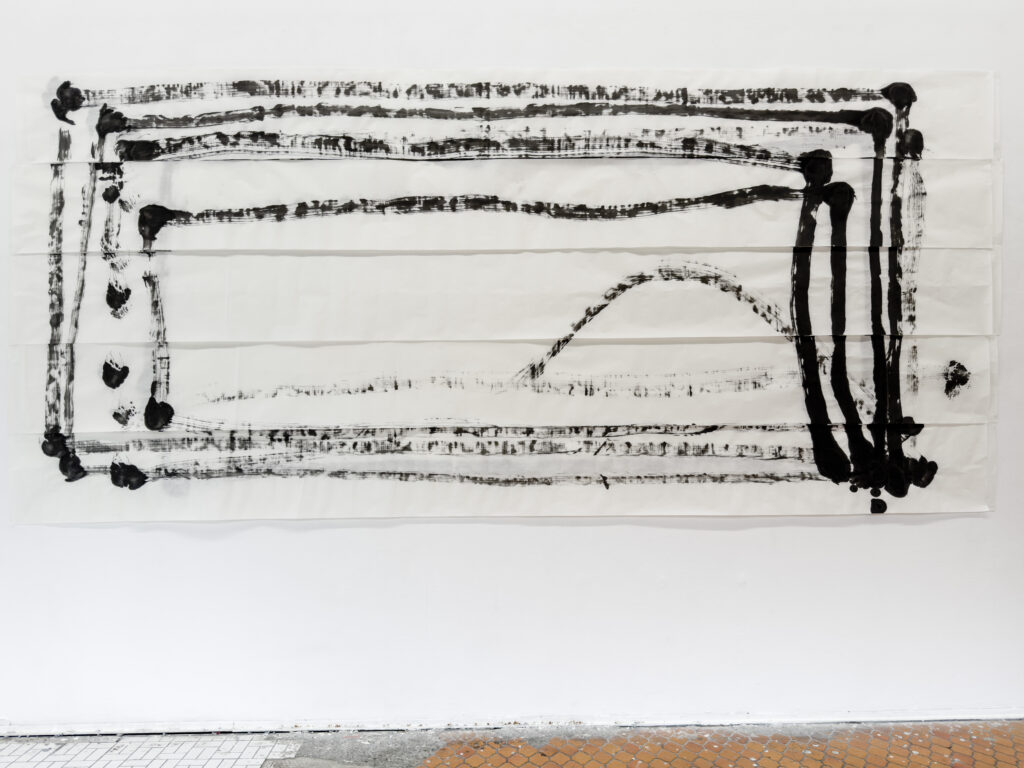
100+1 Jahre DIN A4 –ein verspäteter Geburtstagsgruß an ein Weltformat
130 Positionen, zusammengestellt von Jan Brokof und Jan Kage
14.10.-22.10.2023 SCHAU FENSTER, Lobeckstraße 30-35, Berlin
Abb.: „F-91 W, Nr. 3 (Casio Weckalarm)“, 2022, Zeichnung aus der Reihe: „Alarm! Signale – Warnungen und Tendenzen“, Japanische Tusche auf Papier, Rote Beete, DinA4
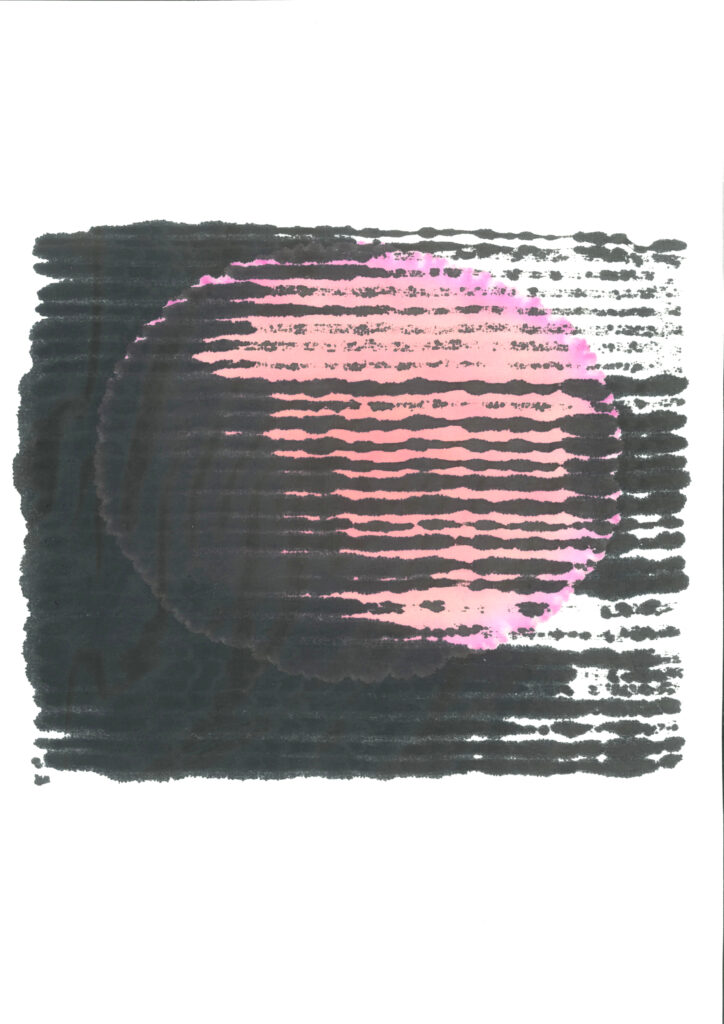
Wenn die Sirenen heulen (it`s on us)
AUSSTELLUNGSREIHE kuratiert von Dirk Teschner & Anne Mundo
09.09.-13.10.2023 Galerie Sexauer www.sexauer.eu
„Alarm 24 (1,2,3)“, Arbeiten aus der Zeichnungsreihe:
Alarm! Signale – Warnungen und Tendenzen, Tusche auf Papier, Rote Beete, 30 x 40 cm, 2022/23
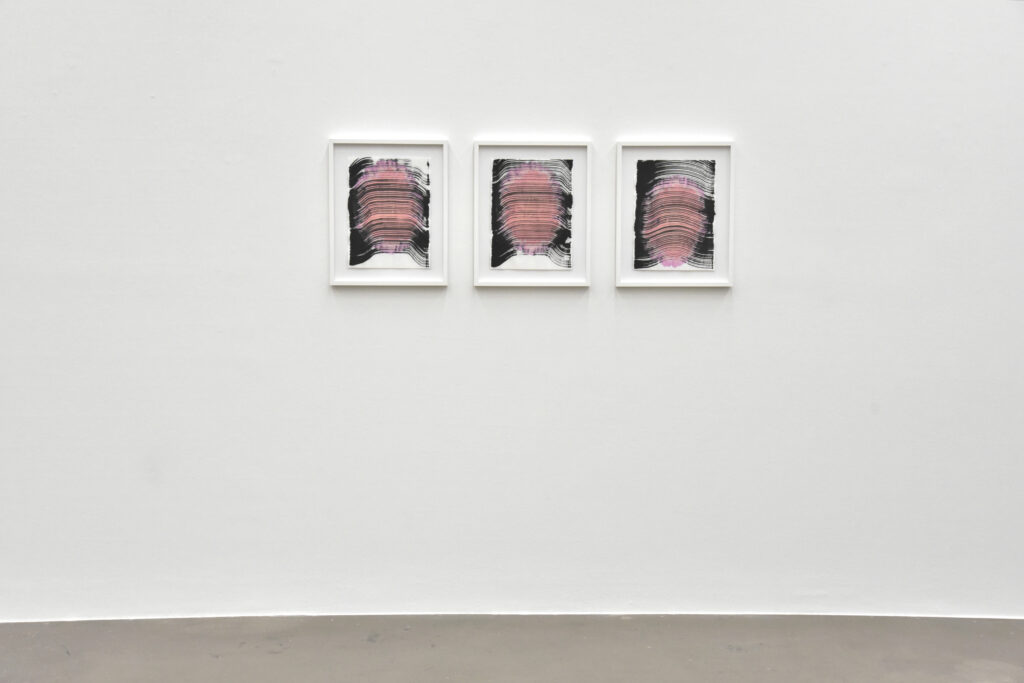

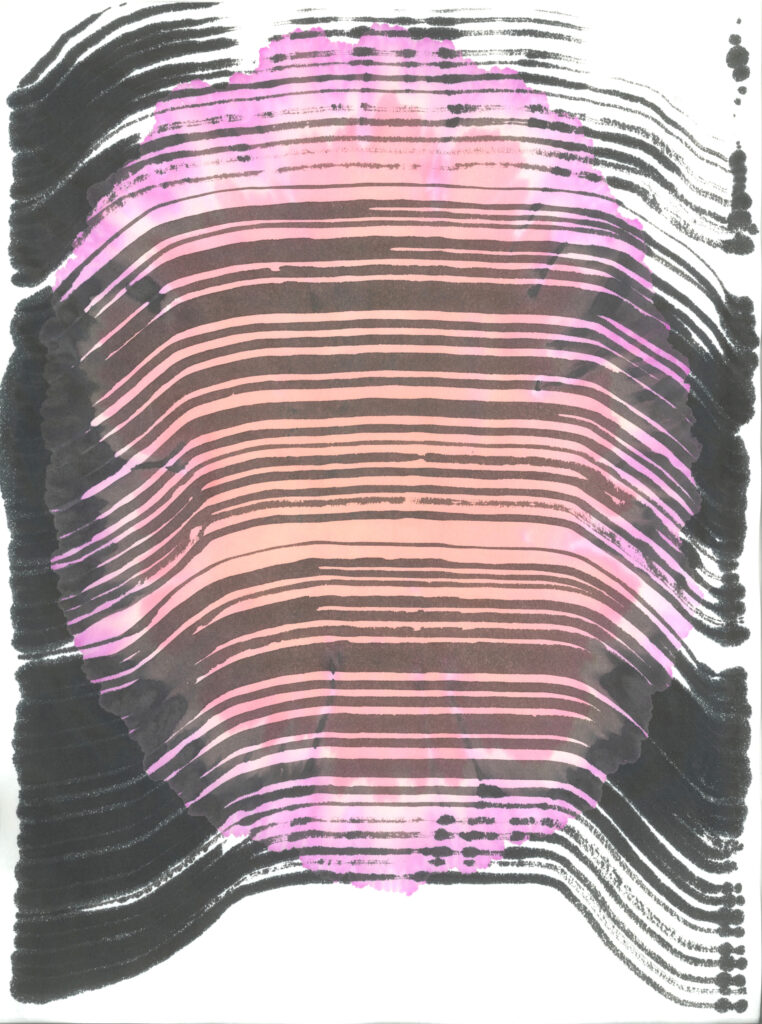
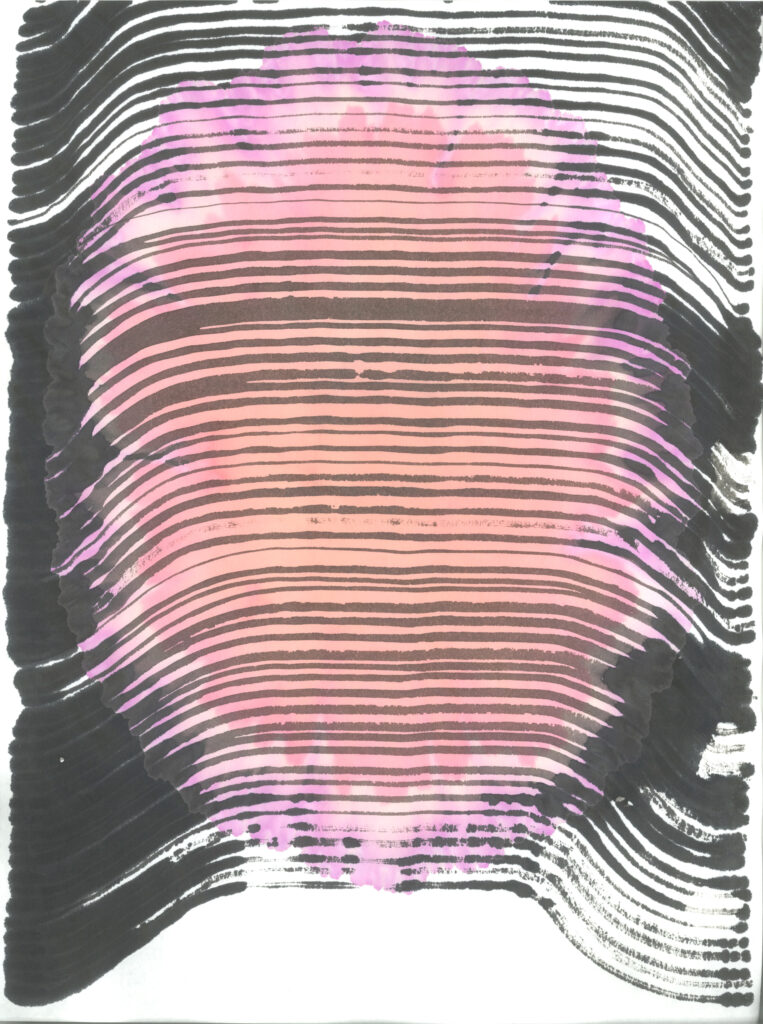
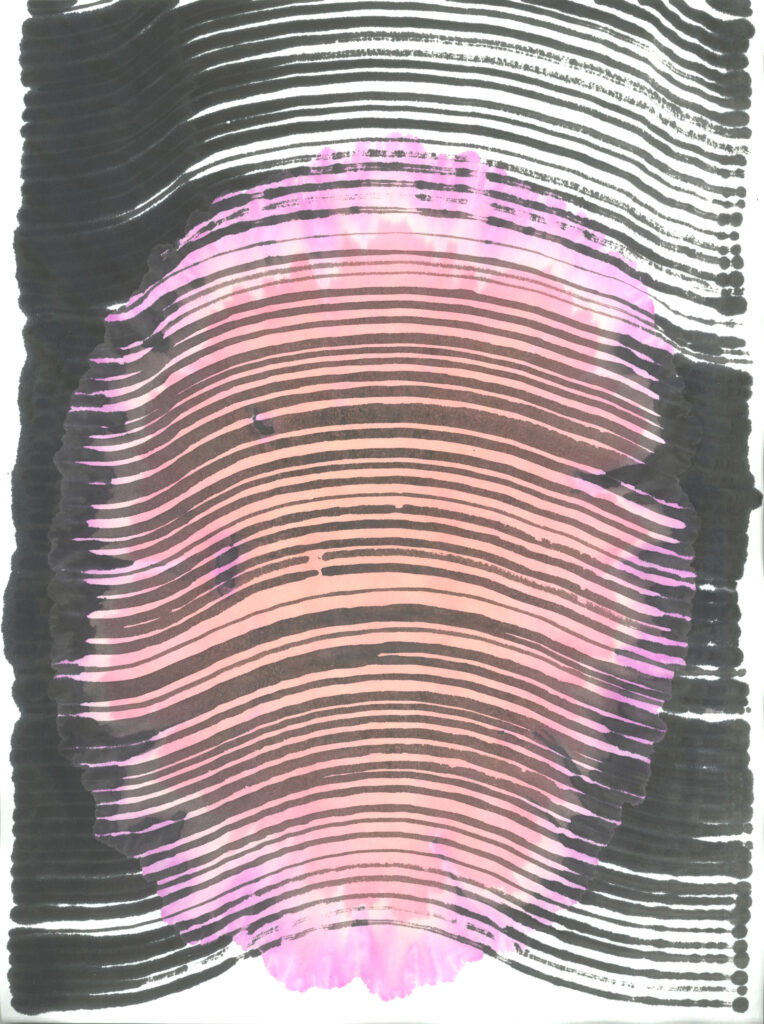
Wenn die Sirenen heulen (it`s on us)
AUSSTELLUNGSREIHE kuratiert von Dirk Teschner & Anne Mundo
27.08.-29.09.2023 Weltecho Galerie, Chemnitz
Ansichten Anne Mundo, Arbeiten aus der Zeichnungsreihe:
(Zng.1-6) Alarm! Signale – Warnungen und Tendenzen,Tusche auf Papier, Rote Beete, 30 x 40 cm, 2022/23
(Zng.7) Verkohlte Herzen 2, Tusche auf Papier, 70 x 70 cm, 2023


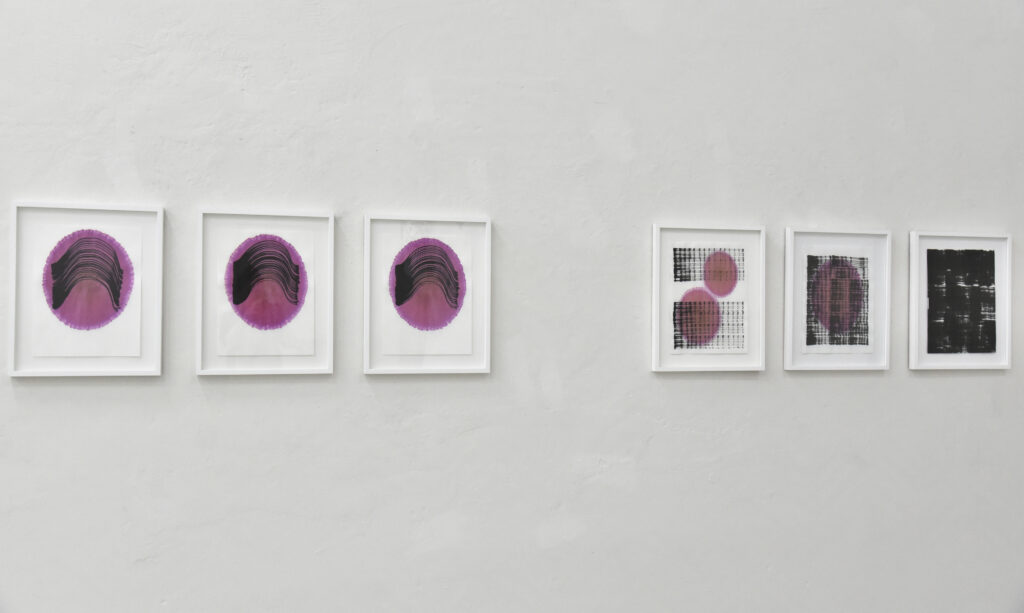
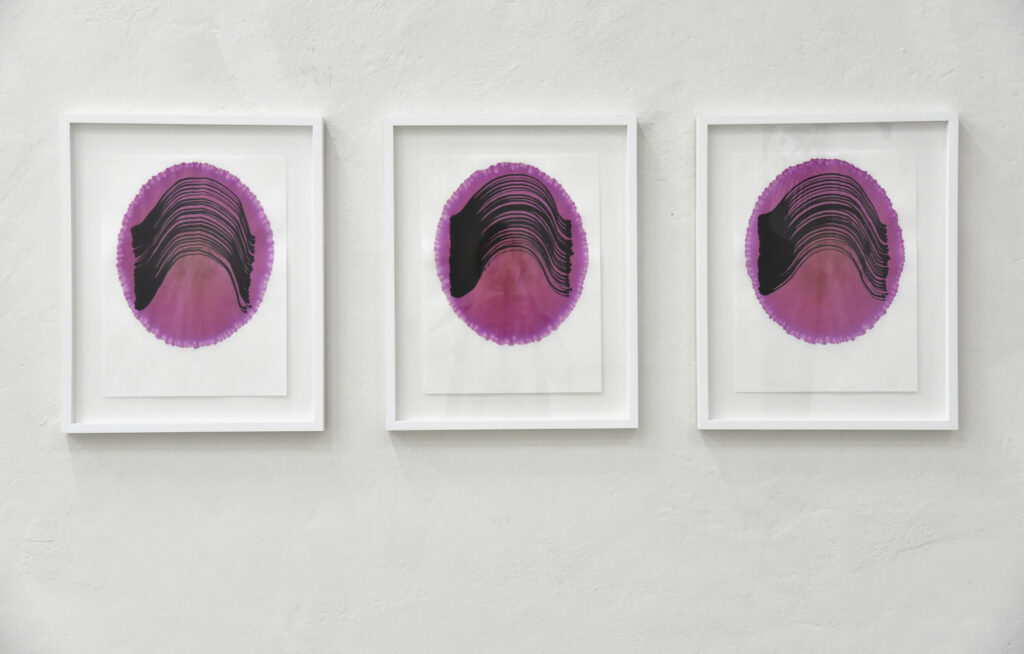

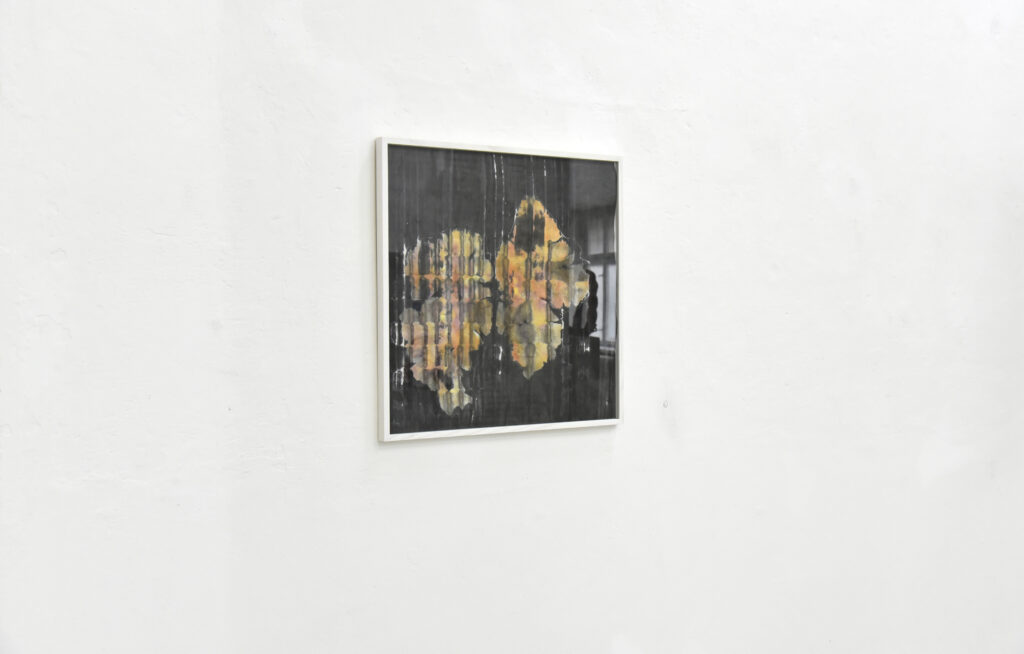
Von Blatt zu Blatt – Wege der Zeichnung
12.07.-17.09.2023
Gruppenausstellung in der Galerie Parterre, Berlin
Dr. Anita Kühnel (Kunsthistorikerin), für den Katalog zur Ausstellung:
Über den Weg der bildhaften Darstellung von Landschaftseindrücken hat sich Anne Mundo dem Wesenhaften ihrer Strukturen zugewandt und davon angeregt schließlich ihre freien Formrhythmen gefunden. Seit einigen Jahren arbeitet sie mit Pinsel und Tuschen auf Japanpapier, zunächst nur in Schwarz. Die Dynamik kalligraphischer Zeichen ist inzwischen einer Entschiedenheit in der auf elementare Formen reduzierten Bildsprache gewichen, die das Persönliche mit universeller Symbolik zu verweben vermag, die Kraft farbiger Kontraste mit der Stille meditativer Innerlichkeit.
Dr. Anita Kühnel (art historian), about the works of Anne, can be read in the exhibition catalog:
Via the path of the pictorial representation of landscape impressions, Anne Mundo has turned to the essence of their structures and, inspired by this, finally found her free form rhythms. For several years she has been working with brush and ink on Japanese paper, initially only in black. The dynamics of calligraphic signs has now given way to a decisiveness in the visual language reduced to elementary forms, which is able to interweave the personal with universal symbolism, the power of colorful contrasts with the silence of meditative inwardness.
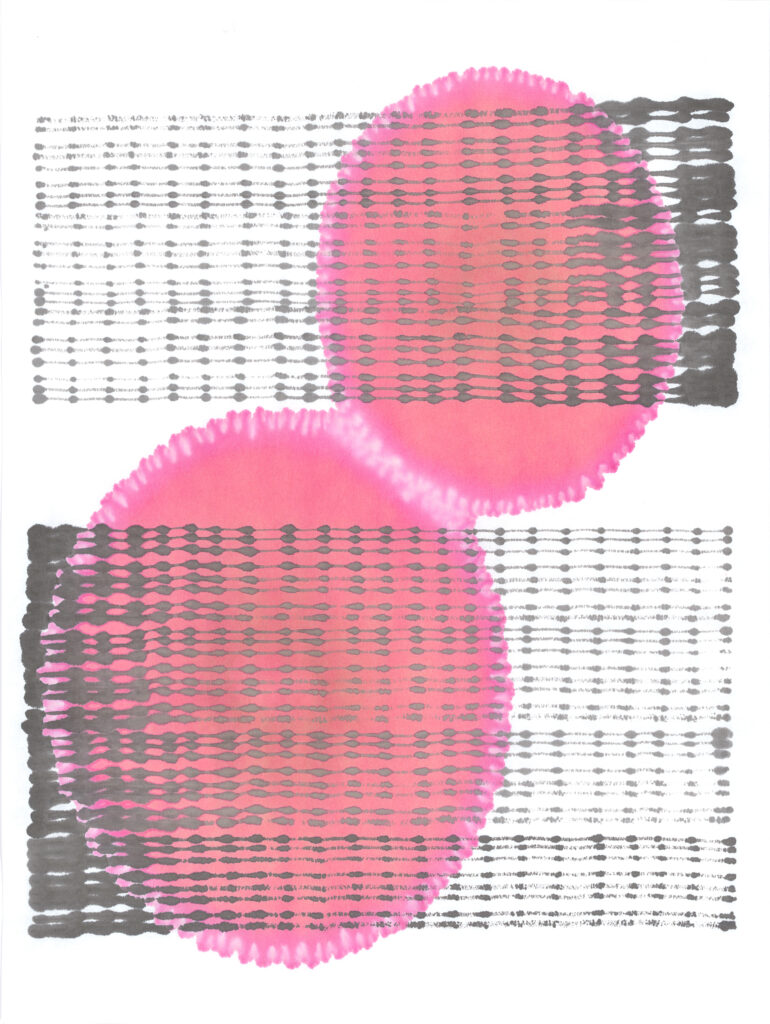
Arca Linea
05.06.-16.09.2023
SOLO Exhibition ( Drawings, Video), Galerie Güstrow
(…) Die Linie spricht in der Sprache der Linie. Sie hat Rhytmus, Energie, Wucht, Zartheit, Verlangen und Musikalität. (Jan-Philipp Frühsorge, Auszüge aus der Rede) https://annemundo.de/ings/
The line speaks the language of the line. It has rhythm, energy, impact, delicacy, desire and musicality. (...)
(…) Als ich mit Anne vor einigen Wochen begann über diese Ausstellung zu sprechen und nach Dingen fragte, die sie in ihrer Arbeit beschäftigt haben, tauchten verschiedene Begriffe auf, Hinweise, Spuren, Worte, wie zum Beispiel Alarm, Ritual, Heilung oder Arca.
Arca Linea, ist der Titel dieser Ausstellung und die Vorstellung, dass die Linie eine Arche sei, oder dass man sich die Arche aus Linien vorstellen muss, gefiel mir. Bekanntermassen diente nach biblischer Vorstellung die Arche der nach der Sintflut verbliebenen Menschheit als Schutz und Überlebensraum. Es hat etwas tröstliches sich die Kunst als Arche zu imaginieren, als der Ort, der allen Widrigkeiten und Unwettern trotzt, der angesichts der Katastrophe die Menschen und die Tiere vereint und zu neuen Ufern führt. Das neue und unbekannte sind stets die treibenden Energien der Kunst gewesen, sich auf das einzulassen, was noch nicht absehbar ist, dem der Horizont noch keine Linie gegeben hat. Zu hoffen und zu glauben an das, was eben noch nicht von der Taube mit dem Ölzweig kündet.
Anne Mundos Zeichnungen sind Linienabenteuer und Tusche-Erkundungen. Es gehört zu den Beschreibungskonventionen der Kunstgeschichte, der Linie alles zuzumuten. Mit ihr beginnt es und man möchte fast glauben, mit ihr würde es auch irgendwann enden…Man spekuliert besser über sie als das man sie festzurren kann. Das unerschöpflichste, subtilste, das dauerhafteste und zugleich wandelbarste Instrument jenes ästhetischen Gebildes, das wir Zeichnung nennen.(…)
(...)When I started talking to Anne about this exhibition a few weeks ago and asked about things that concerned her in her work, various terms, clues, traces, words such as alarm, ritual, healing or arca emerged.
Arca Linea is the title of this exhibition and I liked the idea that the line is an ark, or that you have to imagine the ark made of lines. As is well known, according to the biblical idea, the ark served as protection and survival space for the humanity that remained after the flood. There is something comforting about imagining art as an ark, as the place that defies all adversity and storms, that unites people and animals in the face of catastrophe and leads to new shores. The new and unknown have always been the driving energies of art, to get involved with what is not yet foreseeable, for which the horizon has not yet given a line. To hope and to believe in what does not yet announce the dove with the olive branch.
Anne Mundo's drawings are line adventures and ink explorations. It is one of the descriptive conventions of art history to expect everything from the line. It begins with her and one would almost like to believe that it would also end with her at some point... It's better to speculate about her than to pin her down. The most inexhaustible, the most subtle, the most durable and at the same time the most changeable instrument of that aesthetic structure that we call drawing.(...)
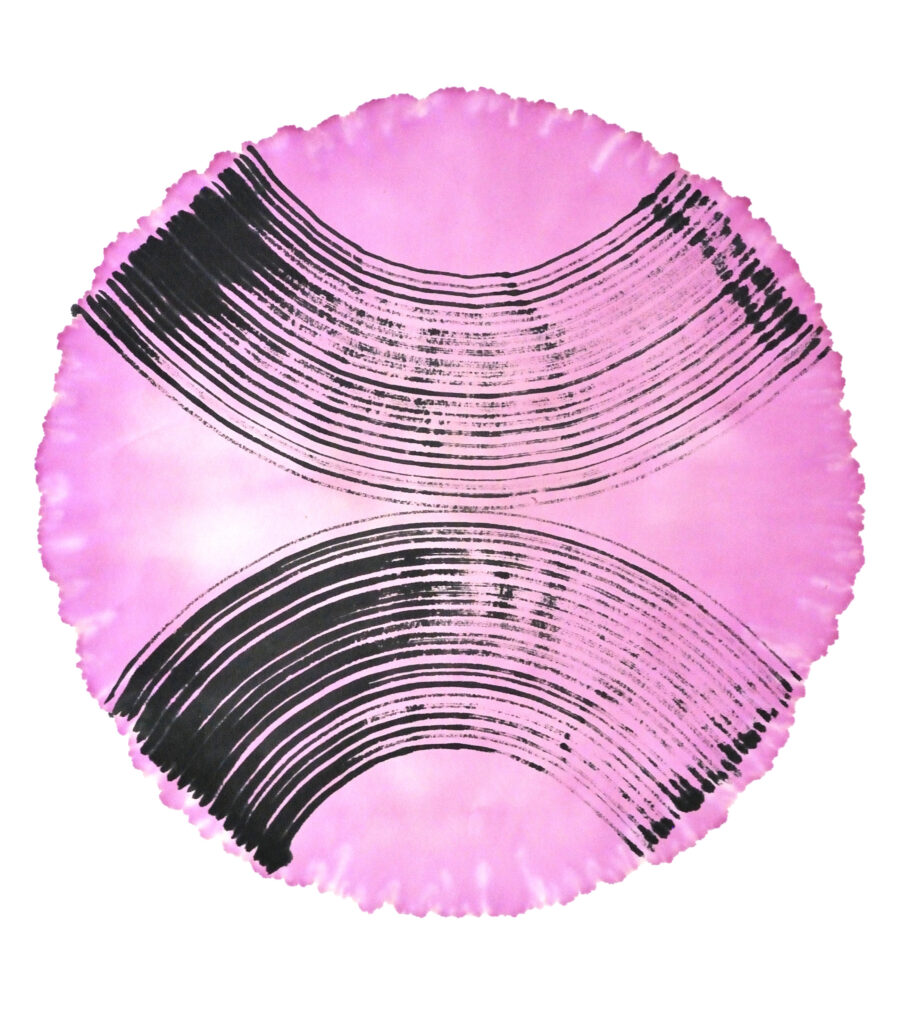
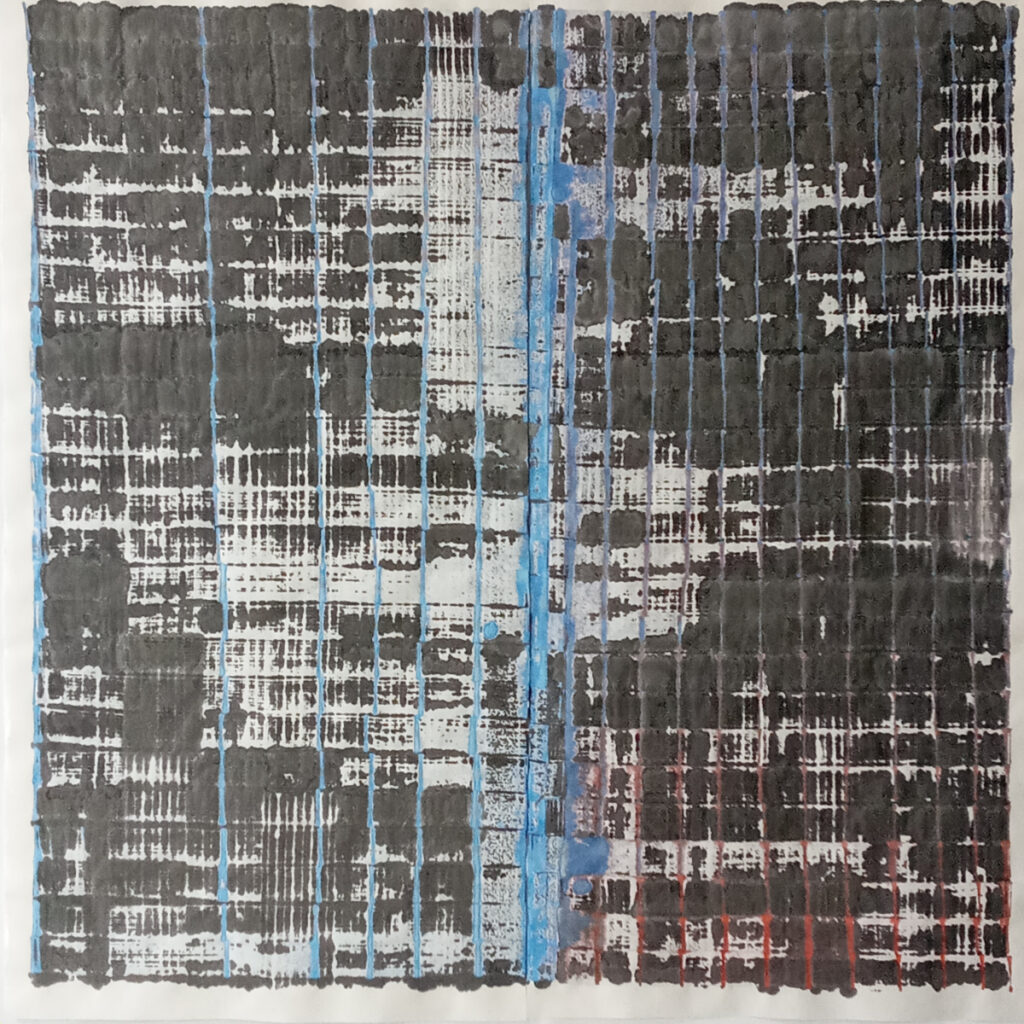
My holidays 2020 – Promenade Solitaire – Solo, Juli 2020 (Videoarbeit / videografische Performance), 4´34 min. Lockdown Intervention in der Coronazeit im Max Liebermann Haus der Stiftung Brandenburger Tor, Pariser Platz, Berlin.
Die Zeichnung „Lockdownsolo“ ist der aufgezeichnete Weg, den ich mit dem Pinsel auf Papier innerhalb der Begrenzungen durch die Wände im Raum gehe. Ein verkörpertes Eingeschlossen sein mit Ausweg.
The drawing "Lockdownsolo" is the recorded path that I go with the brush on paper within the confines of the walls in the room. An embodied imprisonment with a way out.
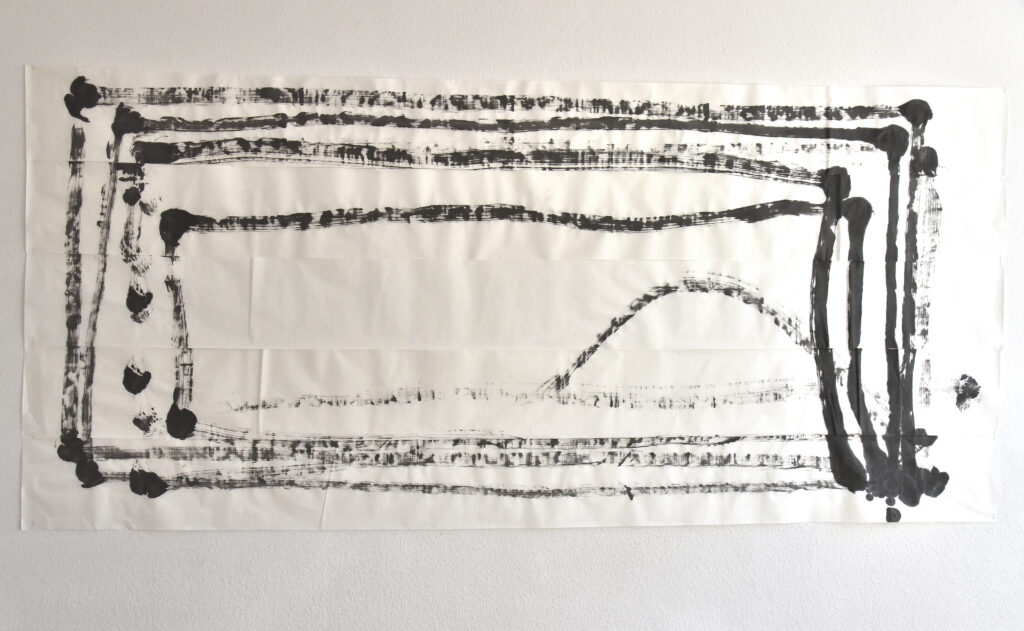
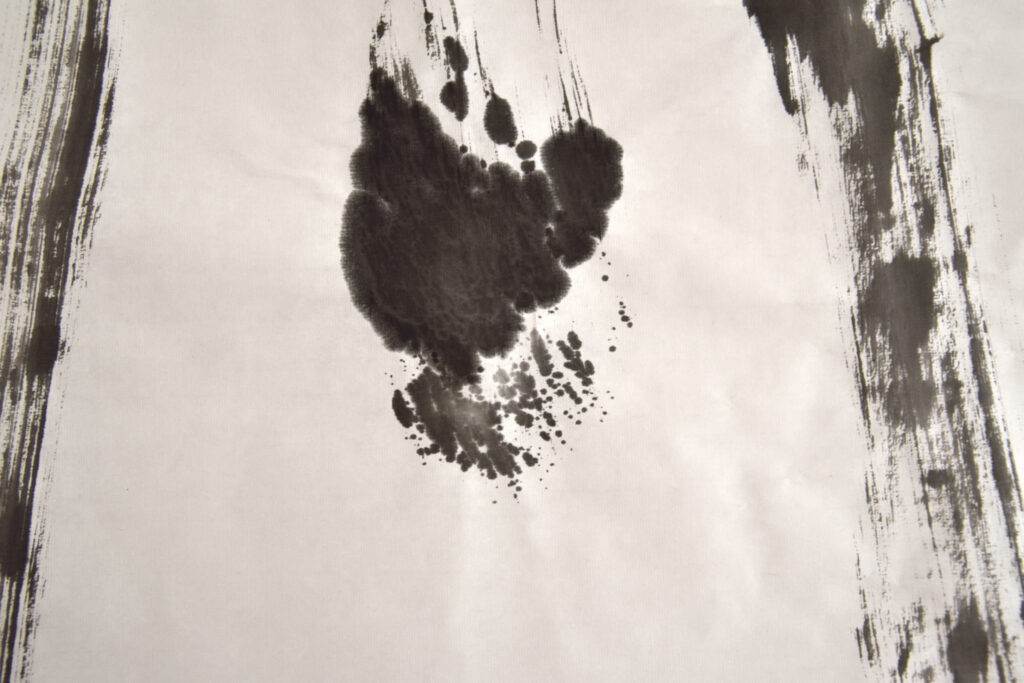
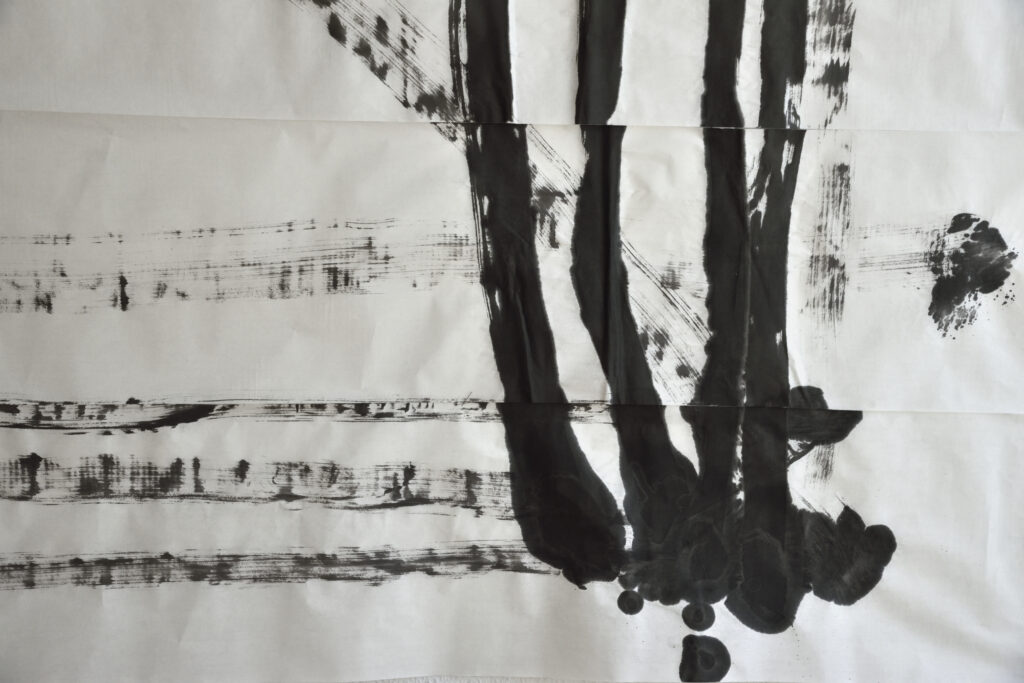
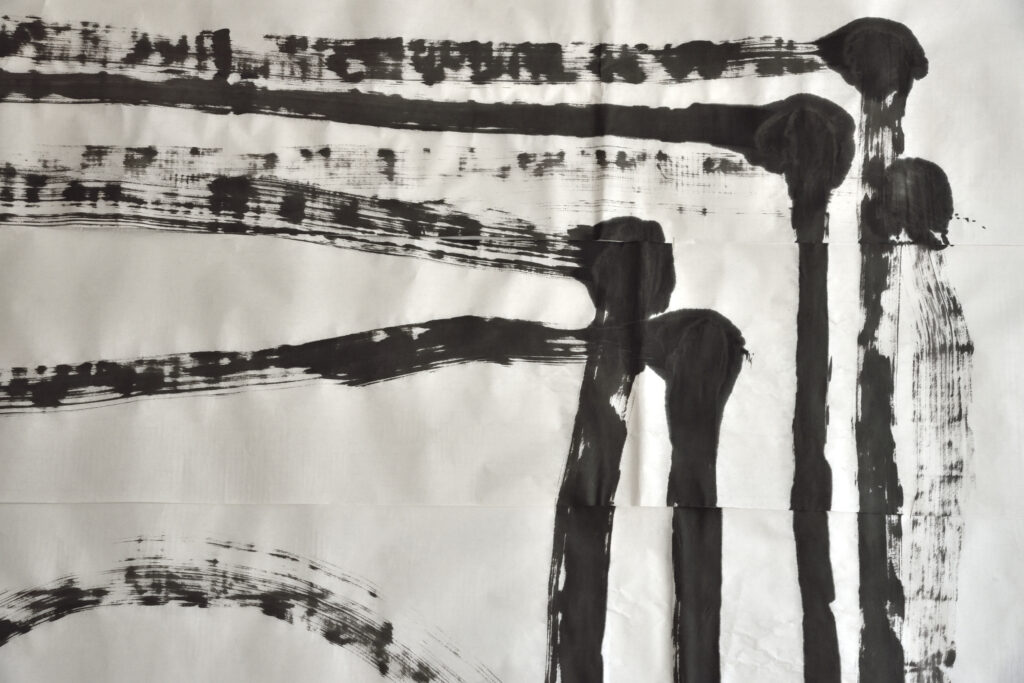
Mindful music
Abstract Ink-Drawings, variations of apricot-melon (deutsch-japanische Freundschaft)

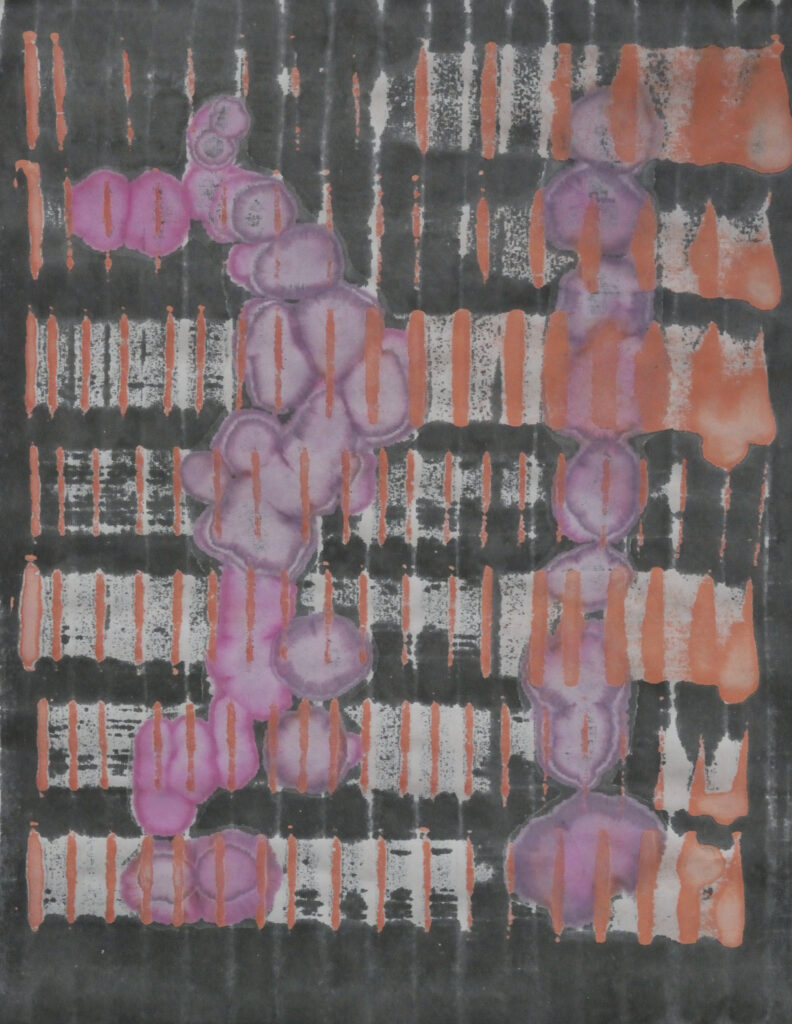
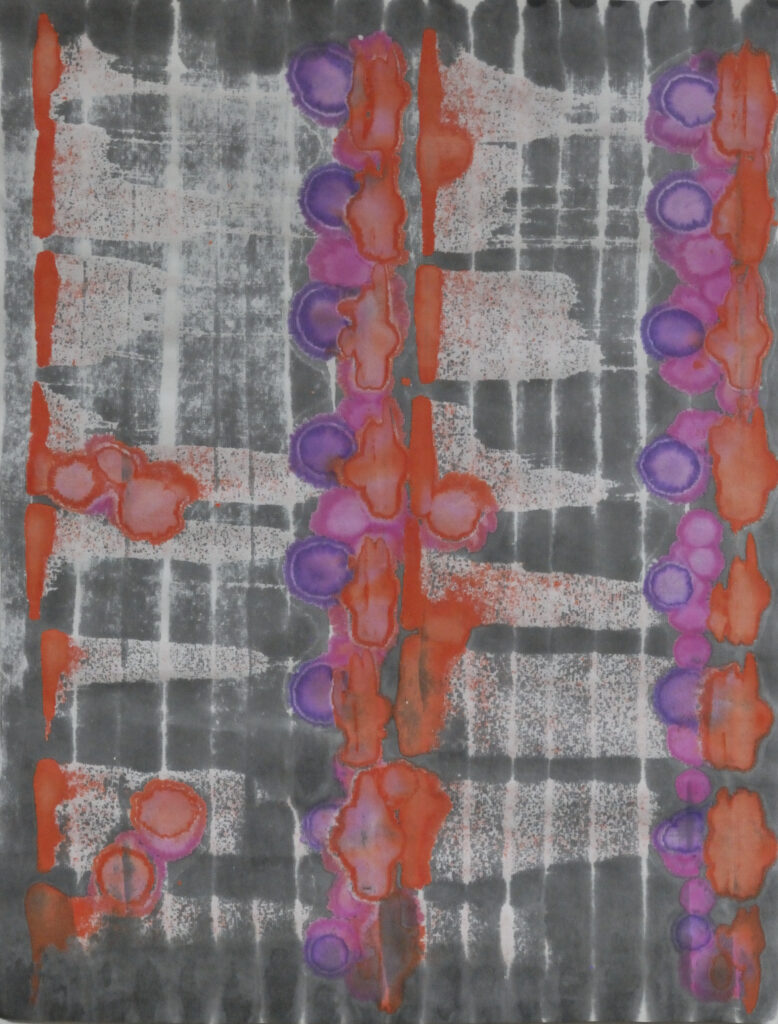

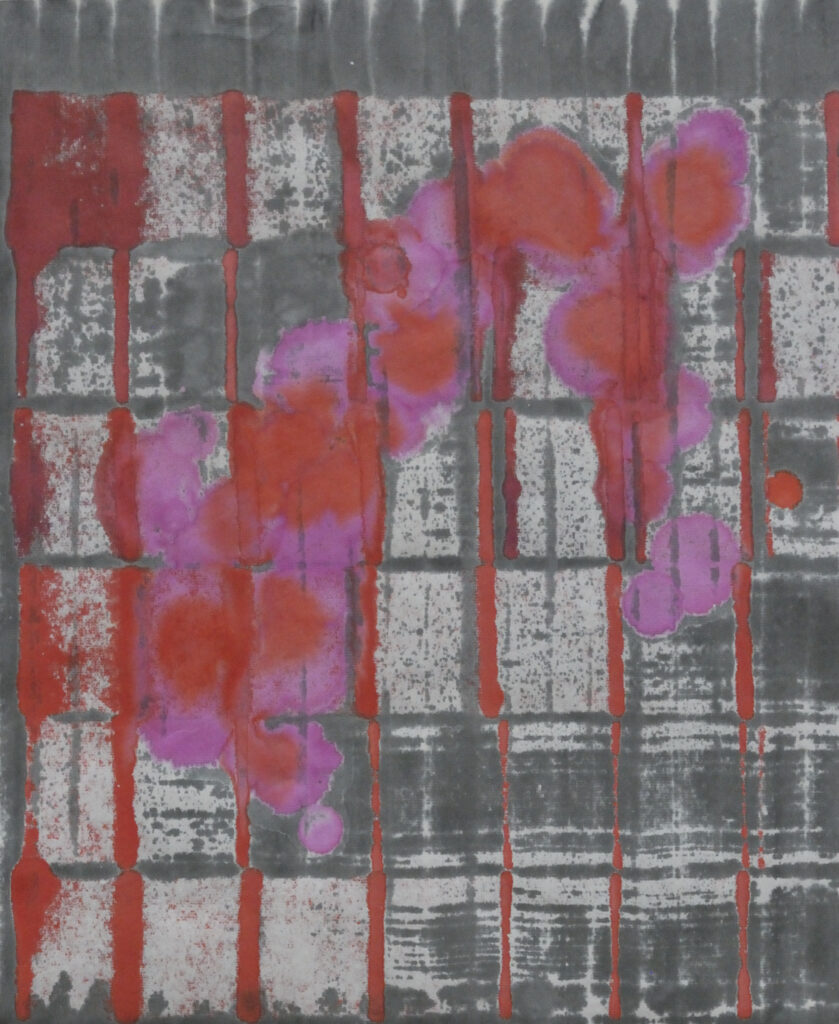

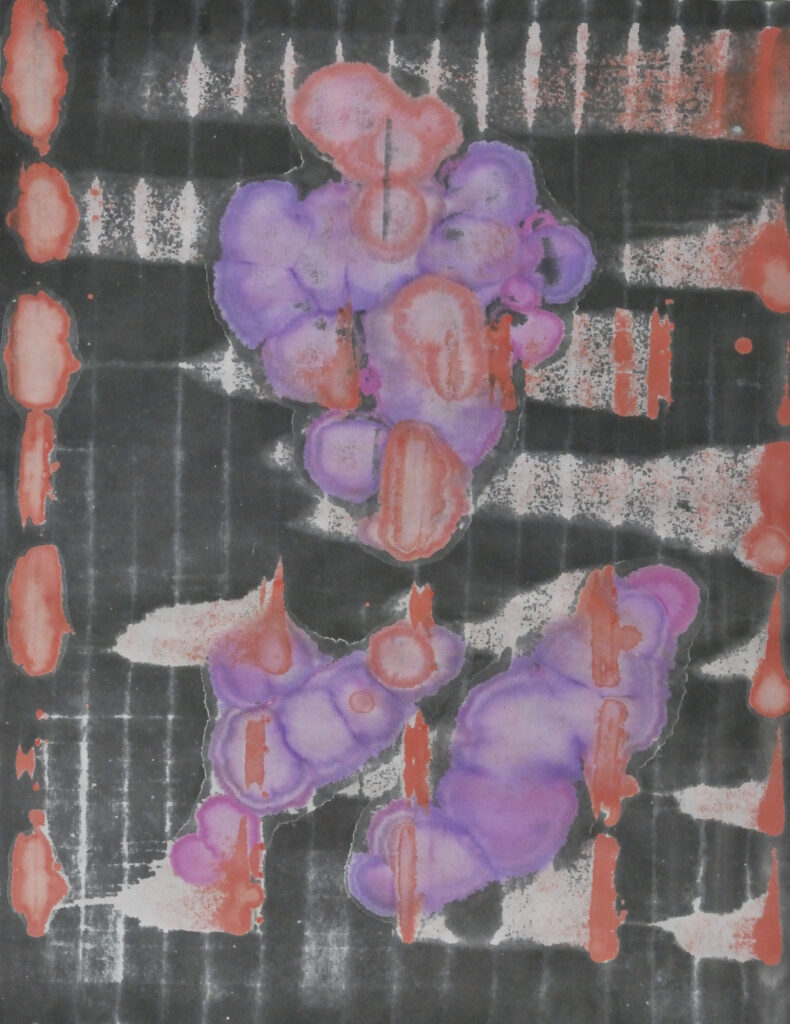
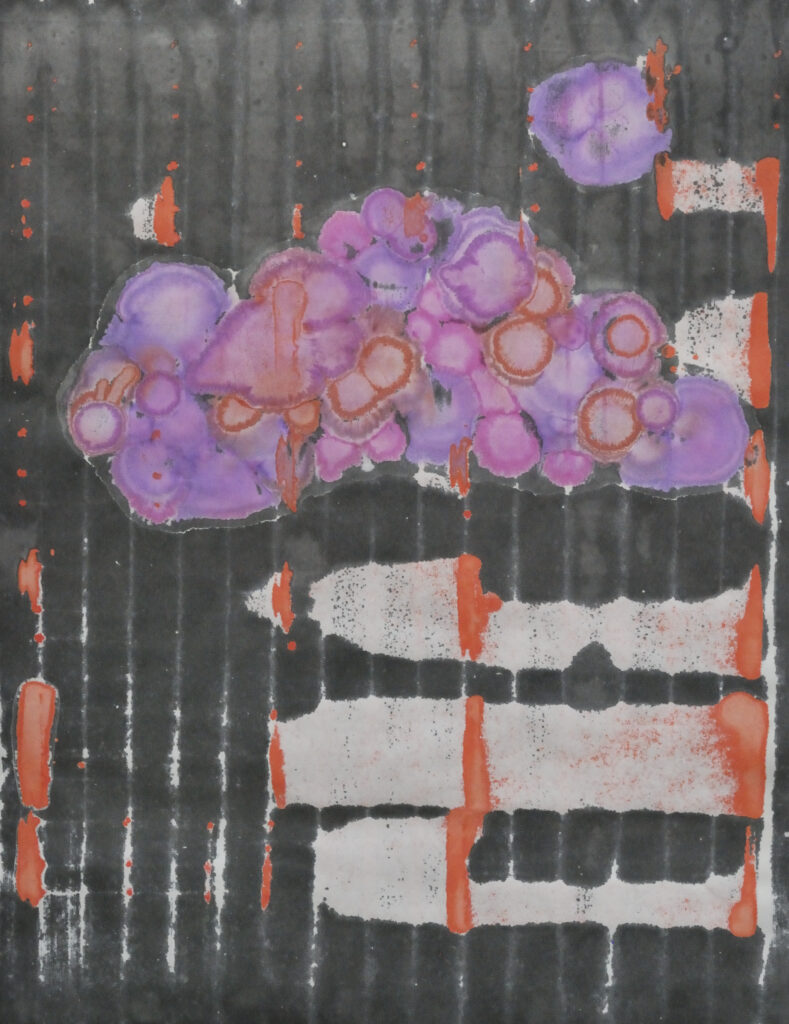
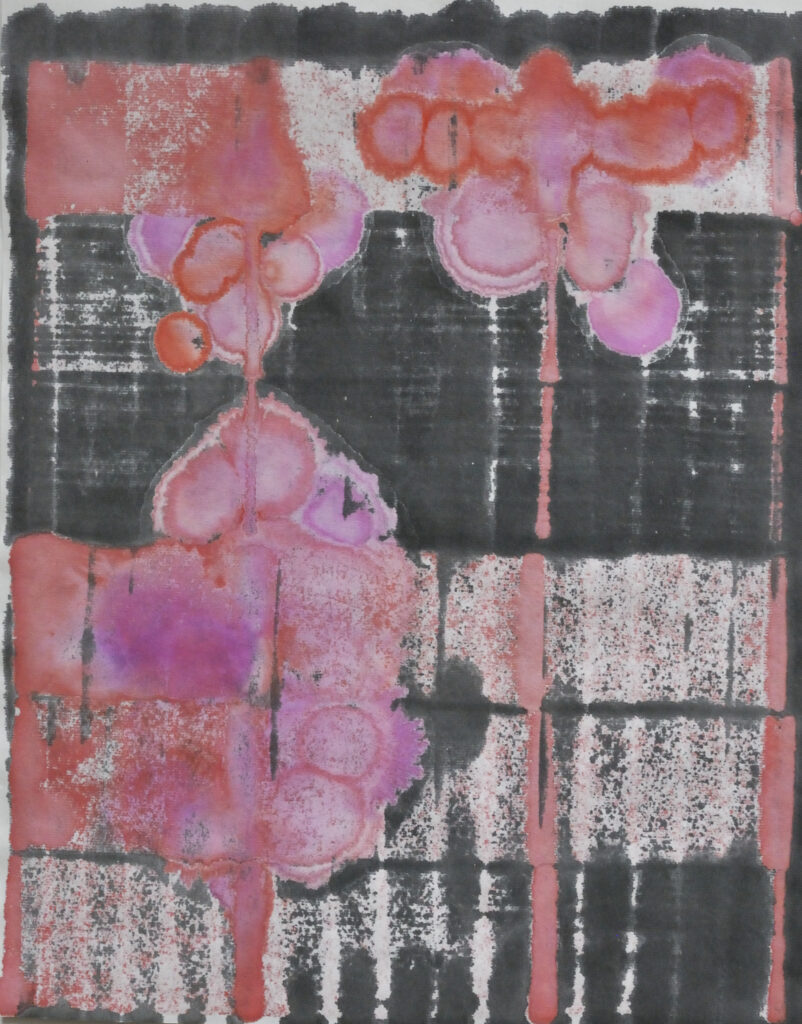
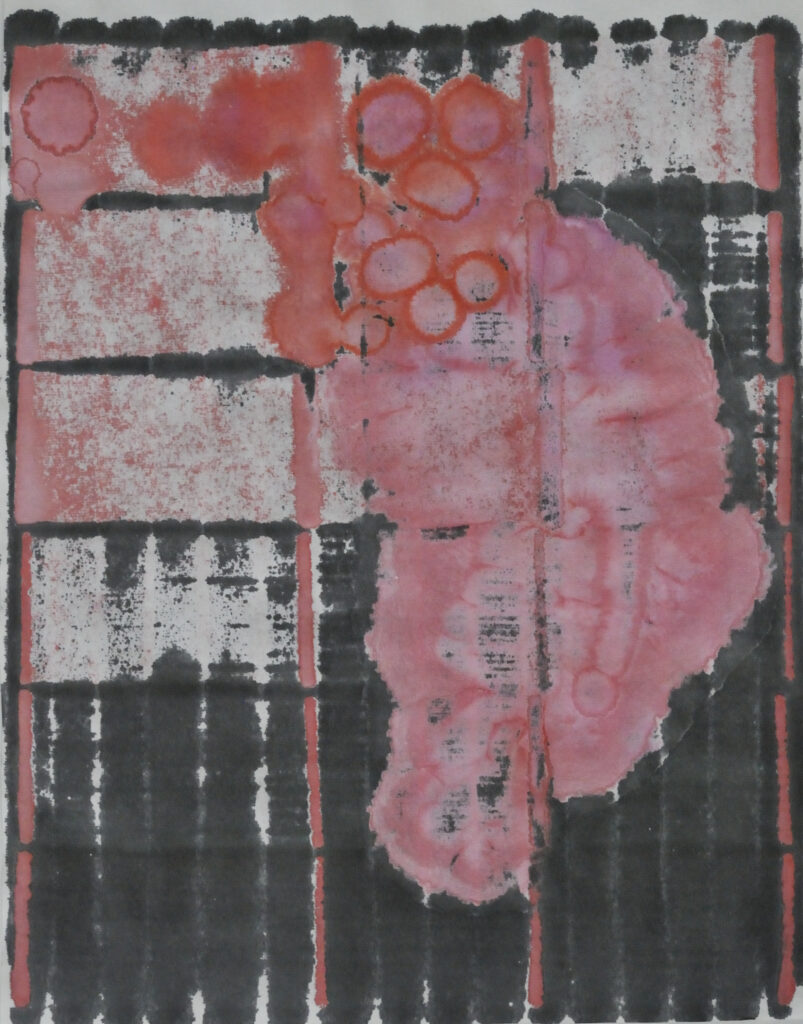
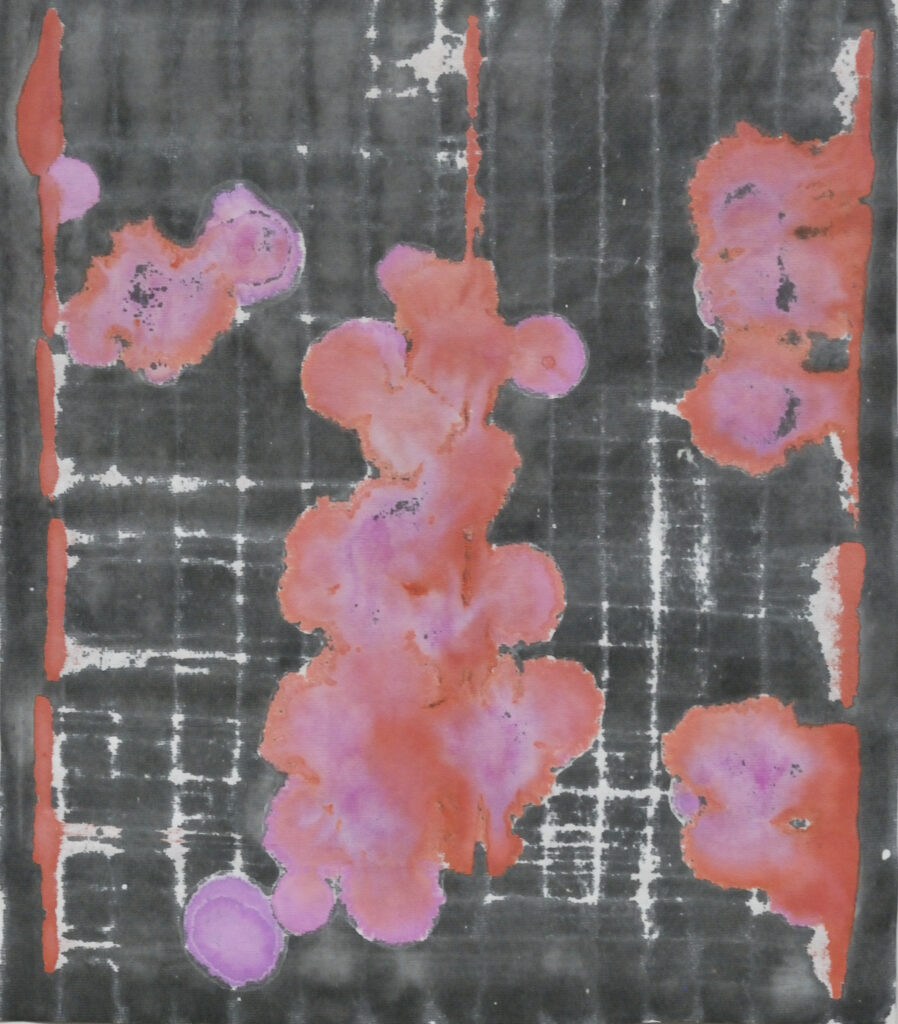

2022
REFLET – SCHWINGUNGEN – REFLECTIONS
SOLO Exhibition (Drawings, Paintings, Objects), France
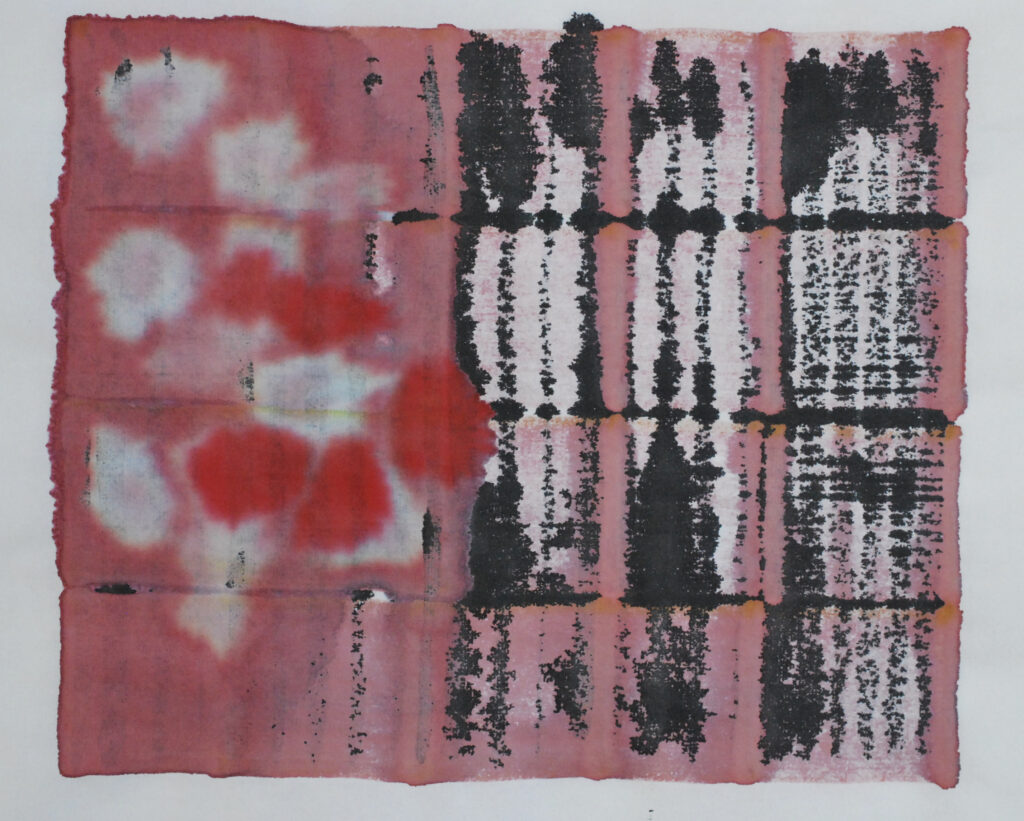
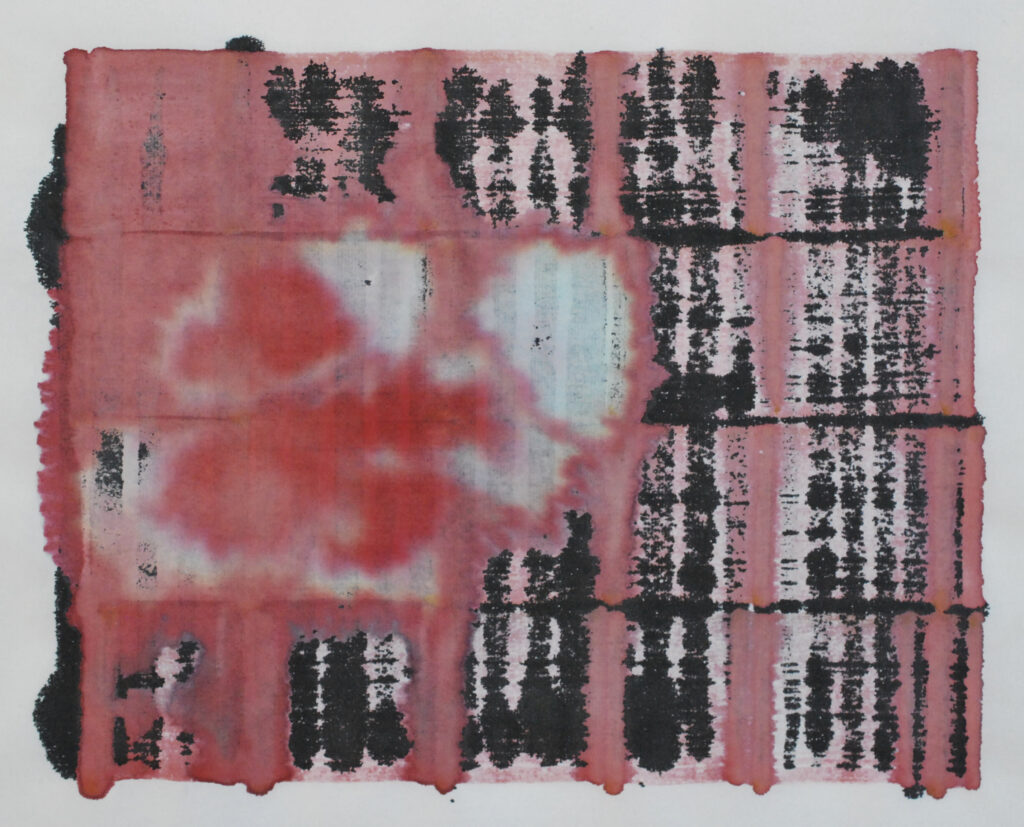
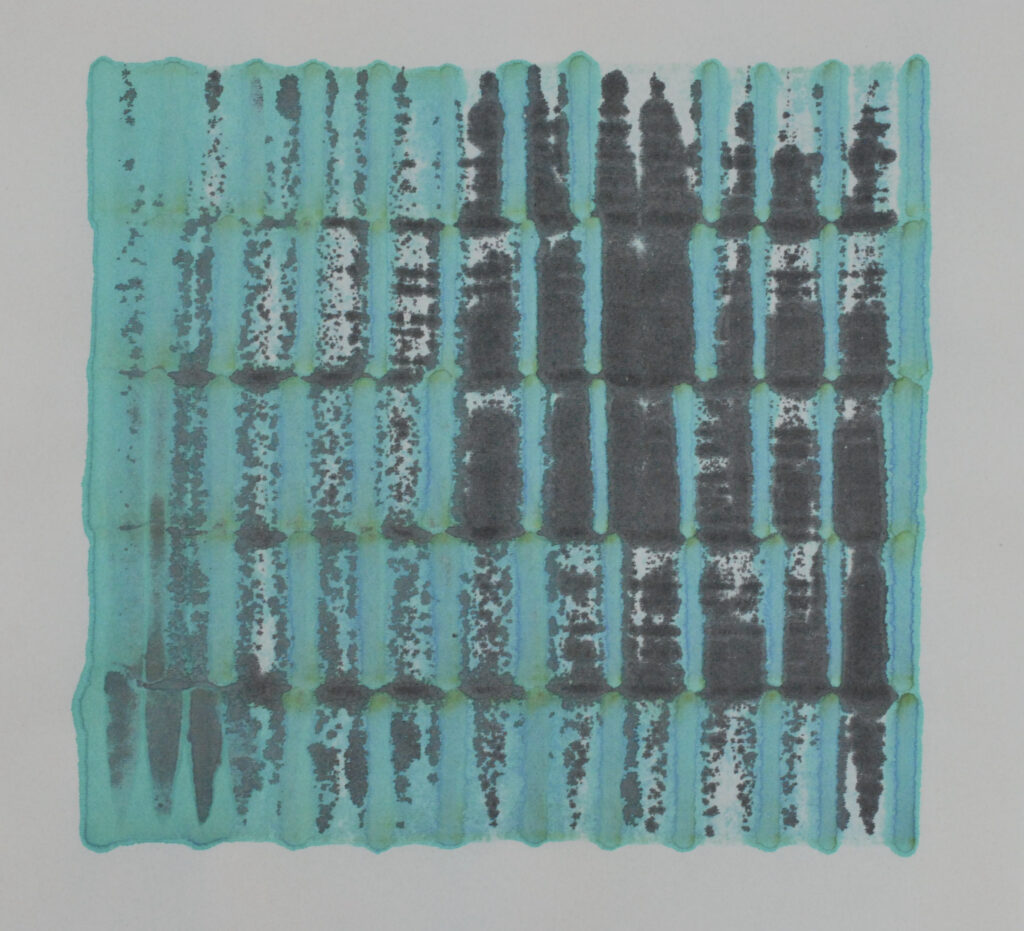
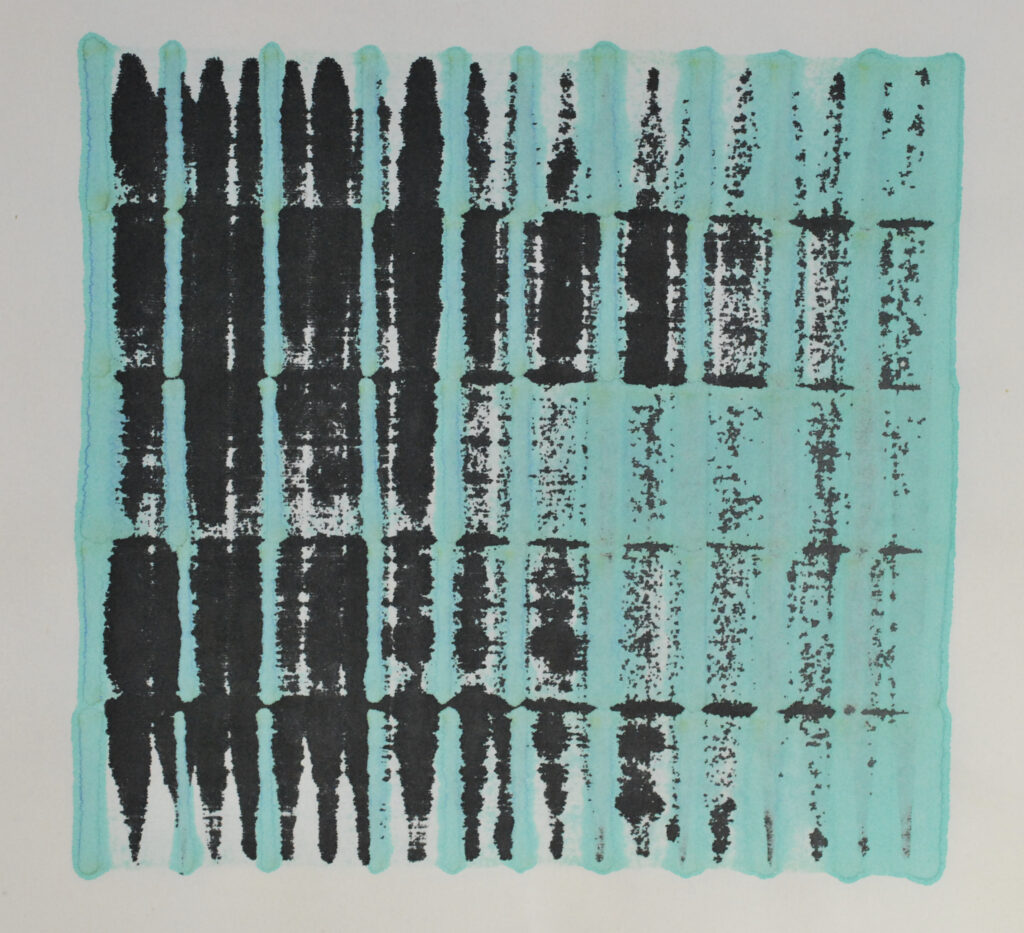

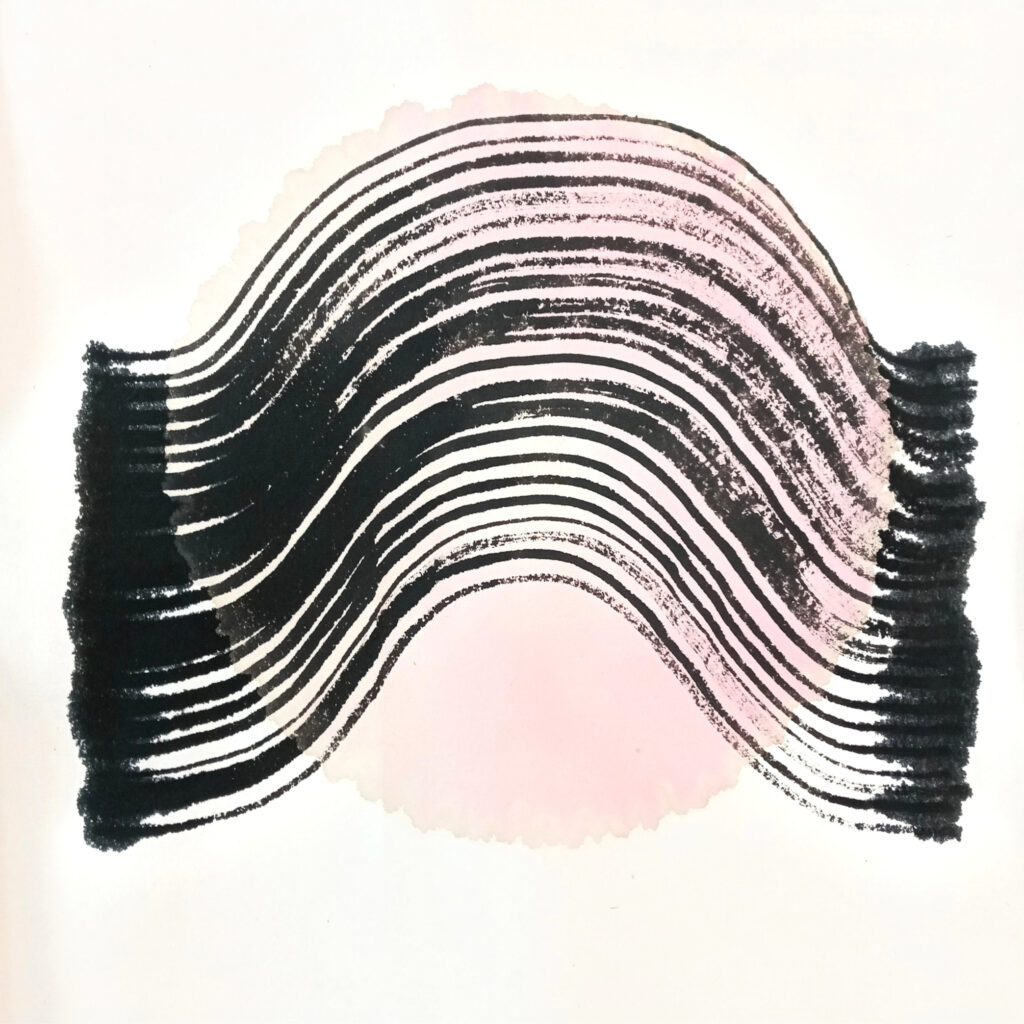
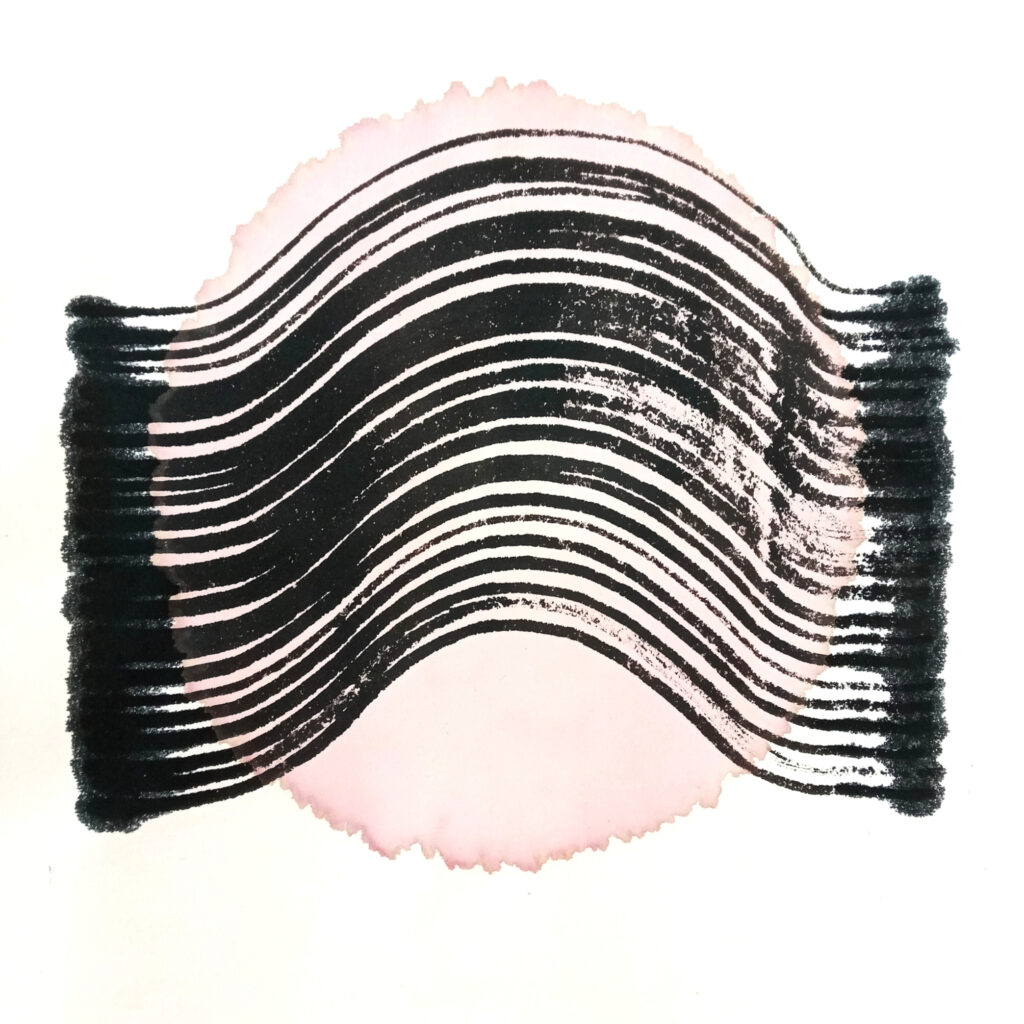
Alarm! Signale – Warnungen und Tendenzen
Anfang der 1980er-Jahre durchbrechen Kampfflugzeuge über deutschen Städten die Schallmauer, das empfohlene Verhalten bei einem Nuklearangriff kann gar im Telefonbuch nachgeschlagen werden, Reagan wird US-Präsident, Breschnew ist noch in Amt. Die Zeichen stehen auf Eskalation. Währenddessen verbreitet sich im Stillen ein neuartiges Virus – HIV.
Die Peter Brötzmann Group spielt im November 1981 ALARM ein. Den Ausgangspunkt für das Werk bilden die von den Musikern erschreckend real imitierten Warntöne eines Sirenenalarms.
Kriege, Grausamkeiten und Zerstörungen gibt es auch heute reichlich auf der Welt – und sie kommen immer näher. Ein neues Virus haben wir auch: ALARM.
Alarm! Signals – warnings and tendencies
At the beginning of the 1980s, jet fighters break the sound barrier over German cities, the recommended behaviour in the event of a nuclear attack can even be looked up in the telephone book, Reagan becomes US president, Brezhnev is still in power. Escalation is on the horizon. Meanwhile, a new type of Virus – HIV – is silently spreading.
The Peter Brötzmann Group records ALARM in November 1981. The work begins with the sounds of a siren alarm, which is mimicked by the musicians in a frighteningly realistic manner.
In today´s worlds, there are also wars, atrocities, and destruction, and they are getting closer. We also have a new virus: ALARM
Alerte! Signaux – Avertissements et tendances
Au début des années 1980, des avions de combat franchissent le mur du son au-dessus des villes allemandes, le comportement recommandé en cas d’attaque nucléaire peut même être consulté dans l’annuaire téléphonique, Reagan devient président des États-Unis, Brejnev est toujours en poste. Les signes indiquent une escalade. Pendant ce temps, un nouveau virus, le VIH, se propage tranquillement.
Le groupe Peter Brötzmann a enregistré ALARM en novembre 1981. Le point de départ de l’œuvre est constitué par l’imitation d’un réalisme alarmant des sons d’avertissement d’une sirène par les musiciens. Les guerres, les atrocités et la destruction abondent dans le monde aujourd’hui – et elles se rapprochent. Nous avons également un nouveau virus : ALARM.
Graphic interpretation of the 1st part of the piece `Alarm´ by Peter Brötzmann (LP: Alarm, part 1).
The lines indicate the wave-like unanimity of the wind instruments.
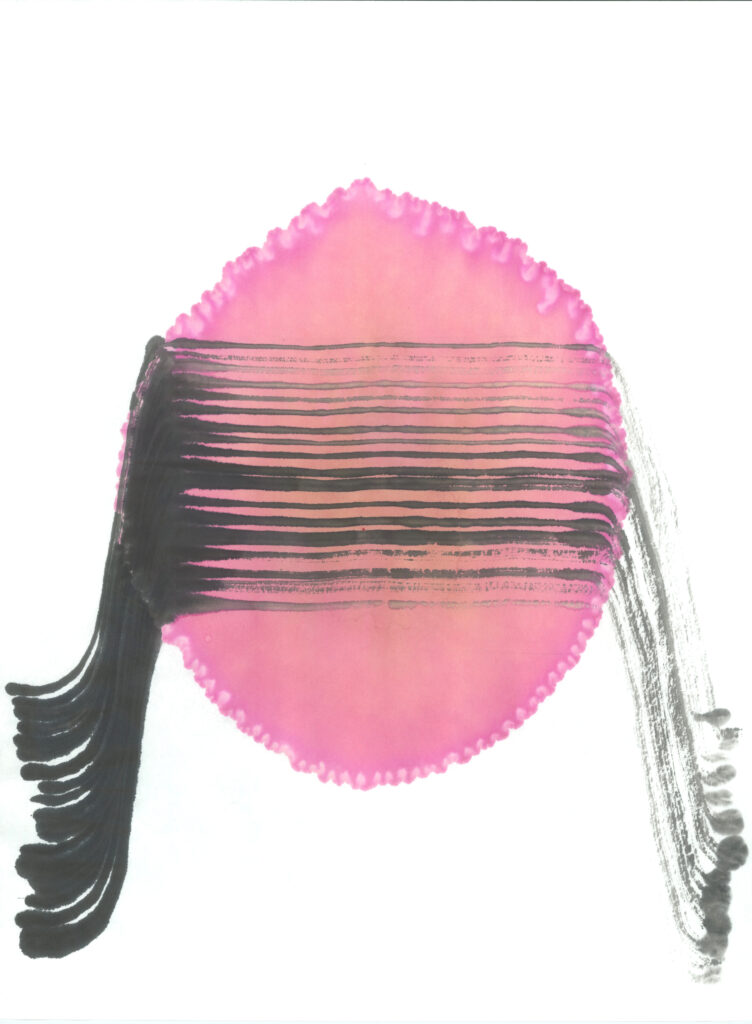
MG
Das Maschinengewehr gilt als die tödlichste aller Waffen. Tatsächlich wird bis heute die überwiegende Zahl aller in Kriegen und Bürgerkriegen umgekommenen Menschen nicht von Raketen oder Granaten, sondern durch den Beschuss von Maschinengewehren getötet. Machine Gun von dem Peter Brötzmann Octet wurde 1968 eingespielt. Damals waren mehr als eine halbe Million US-amerikanische Soldaten in Vietnam stationiert, um die nordvietnamesische Armee und die mit ihnen verbündeten Vietcong zu bekämpfen. Zeitgleich tobte der Biafra-Krieg in Nigeria, der weitaus weniger Aufmerksamkeit erhielt als der Krieg in Vietnam. Selbst Kriege haben eine Rangfolge.
Machine Gun beginnt ohne jede Einleitung mit ohrenbetäubenden Explosionen aus purem Sound, ist ein wildes Gemetzel, eine kollektive Energieproduktion, in die sich bis zur Erschöpfung immer wieder neue Lärmsalven mischen. Zwei Bassisten, zwei Schlagzeuger, drei Saxophonisten und ein Pianist erreichen einen derartigen Lärmpegel, dass die Mikrofone bei der Aufnahme mit Decken verhängt werden mussten. Peter Brötzmann kommentiert lakonisch: „Eine brutale Gesellschaft, die Biafra und Vietnam zulässt, provoziert natürlich eine brutale Musik.“
Machine gun
The machine gun is considered the deadliest of all weapons. To this day, most people who have died in wars and civil wars have been killed by machine guns rather than rockets or grenades. Machine gun from the Peter Brötzmann Octet was recorded in 1968. At the time, more than half a million US soldiers were stationed in Vietnam to fight the North Vietnamese army and its ally, the Viet Cong. In the meantime, the Biafra War was raging in Nigeria, which received far less attention than the Vietnam War. Even wars have a hierarchy.
Machine Gun starts without an intro and with deafening explosions of pure sound; it is a wild carnage, a collective energy production, in which new noise salvos mix again and again until exhaustion. During the recording, the two bass players, two drummers, three saxophonists and the pianist reached such a high noise level that the microphones had to be covered with blankets. The laconic remark of Peter Brötzmann: „A society that tolerates Biafra and Vietnam will naturally produce brutal music.“
La mitrailleuse
La mitrailleuse est considérée comme la plus meurtrière de toutes les armes. En fait, à ce jour, la grande majorité de toutes les personnes qui sont mortes dans les guerres et les guerres civiles ne sont pas tuées par des roquettes ou des grenades, mais par des tirs de mitrailleuses.
Machine Gun du Peter Brötzmann Octet a été enregistré en 1968. Machine Gun du Peter Brötzmann Octet a été enregistré en 1968. A cette époque, plus d’un demi-million de soldats américains étaient stationnés au Vietnam pour combattre l’armée nord-vietnamienne et son allié Viet Cong. Au même moment, la guerre du Biafra faisait rage au Nigeria, qui a reçu beaucoup moins d’attention que la guerre au Vietnam. Même les guerres ont une hiérarchie. Machine Gun débute sans aucune introduction avec des explosions assourdissantes de son pur, est un carnage sauvage, une production d’énergie collective, dans laquelle de nouvelles salves de bruit se mélangent encore et encore jusqu’à l’épuisement. Deux bassistes, deux batteurs, trois saxophonistes et un pianiste atteignent un niveau de bruit tel que les microphones ont dû être recouverts de couvertures pendant l’enregistrement.
Peter Brötzmann commente laconiquement : „Une société brutale qui autorise le Biafra et le Vietnam provoque naturellement la musique brutale.“
Machine gun – automatic gun for fast continous firing, nach Peter Brötzmann Octet (obere Hälfte), MG 34 (unten)

Different signals of everyday situations inspired the drawings in the series.
(you can listen to Soundclips in the VIDEO folder)

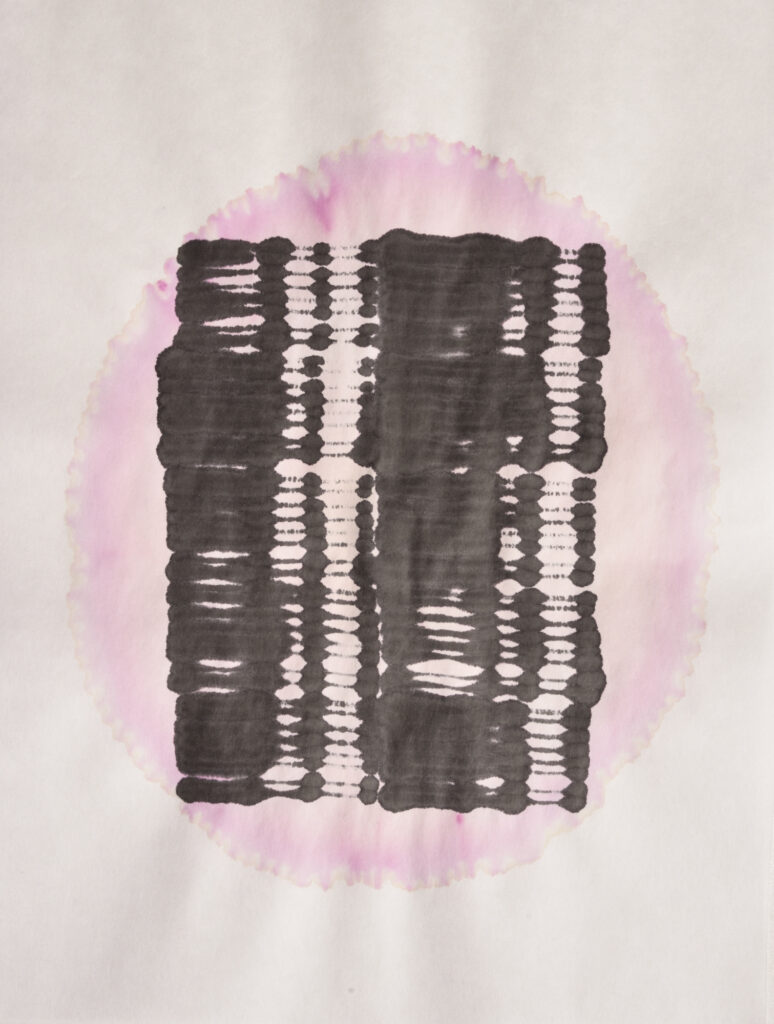

2021
Perlen am Wegesrand- pearls along the way
For me and my artistical research the fact of understanding is one of the most important engine. In my work I try to make things and processes visual. Its all about, what humans are doing, how we react, how we coping, surmounting, overcoming situations on one hand and on the other hand I´m interested to notice developing in evolution. While I was watching small cells on the microscope, I was fascinated how many different cells only the human body has and how they are connected to each other as the basic units of life. There are 37.2 trillion cells in our body. Their function and relationships are still in an analysis process of many scientists all over the world and they are writing the Human Cell Atlas. In these last drawings, I was working with different Inks and colours in combination to rhythms and layers. It imitates properties of adhesion, merging, splittin and mixing.


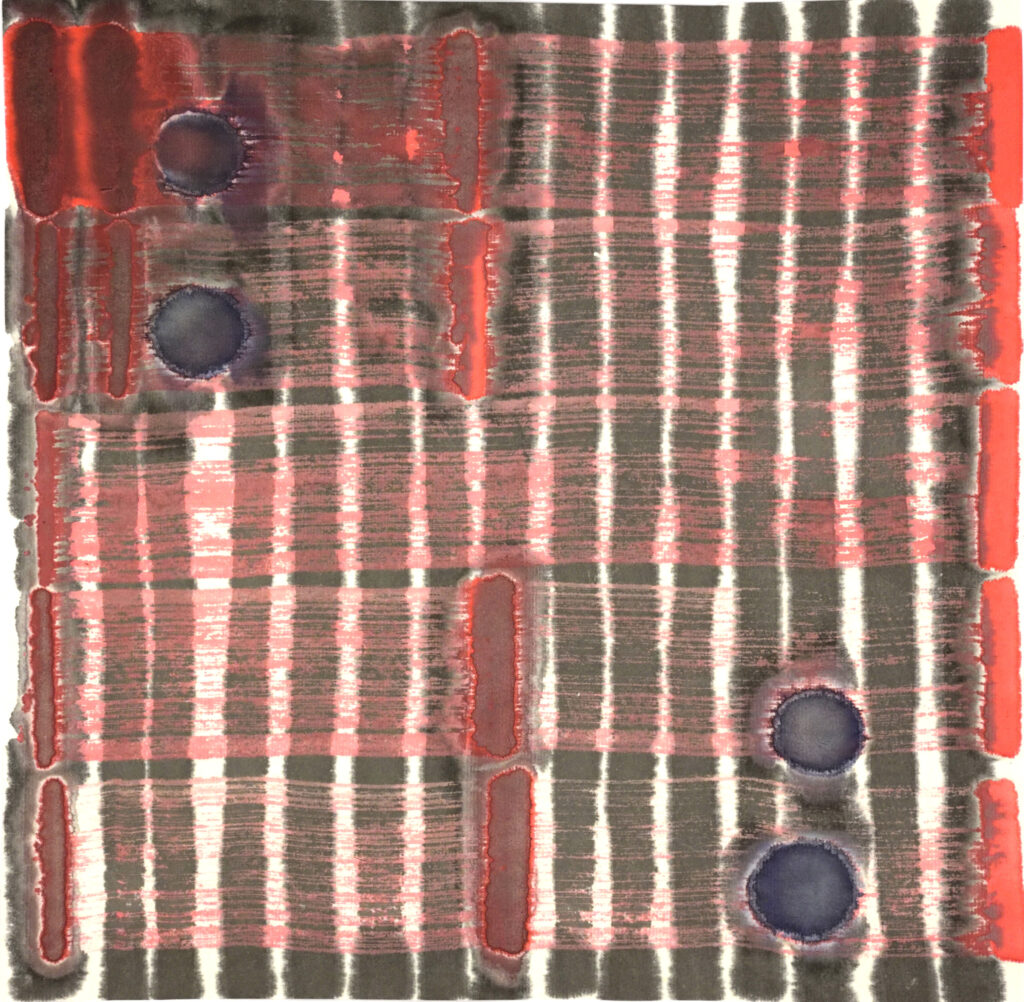
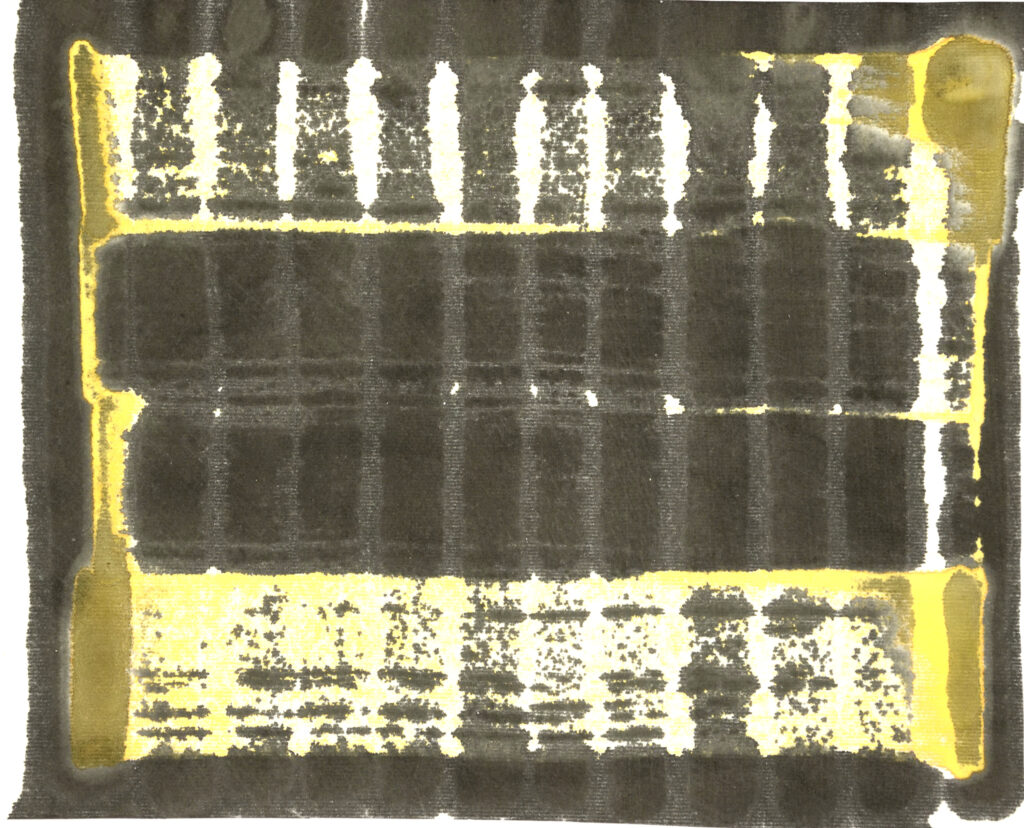
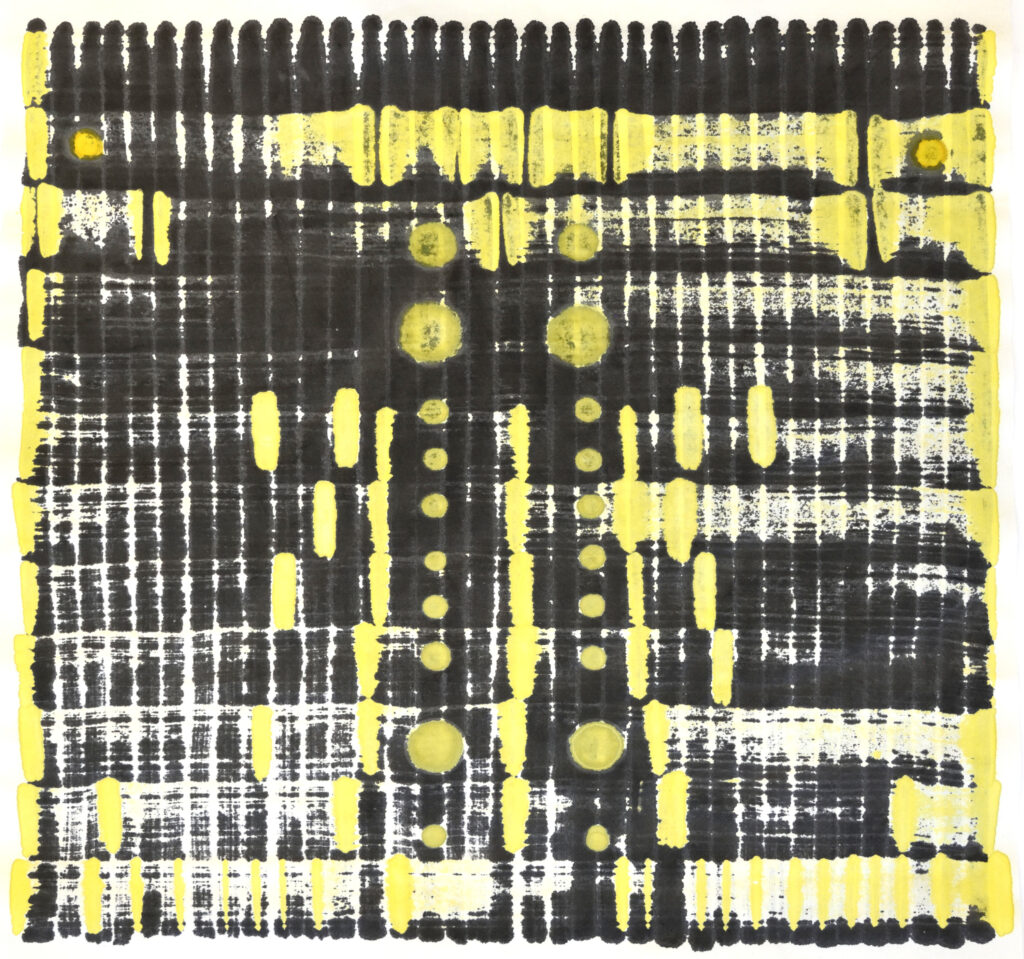
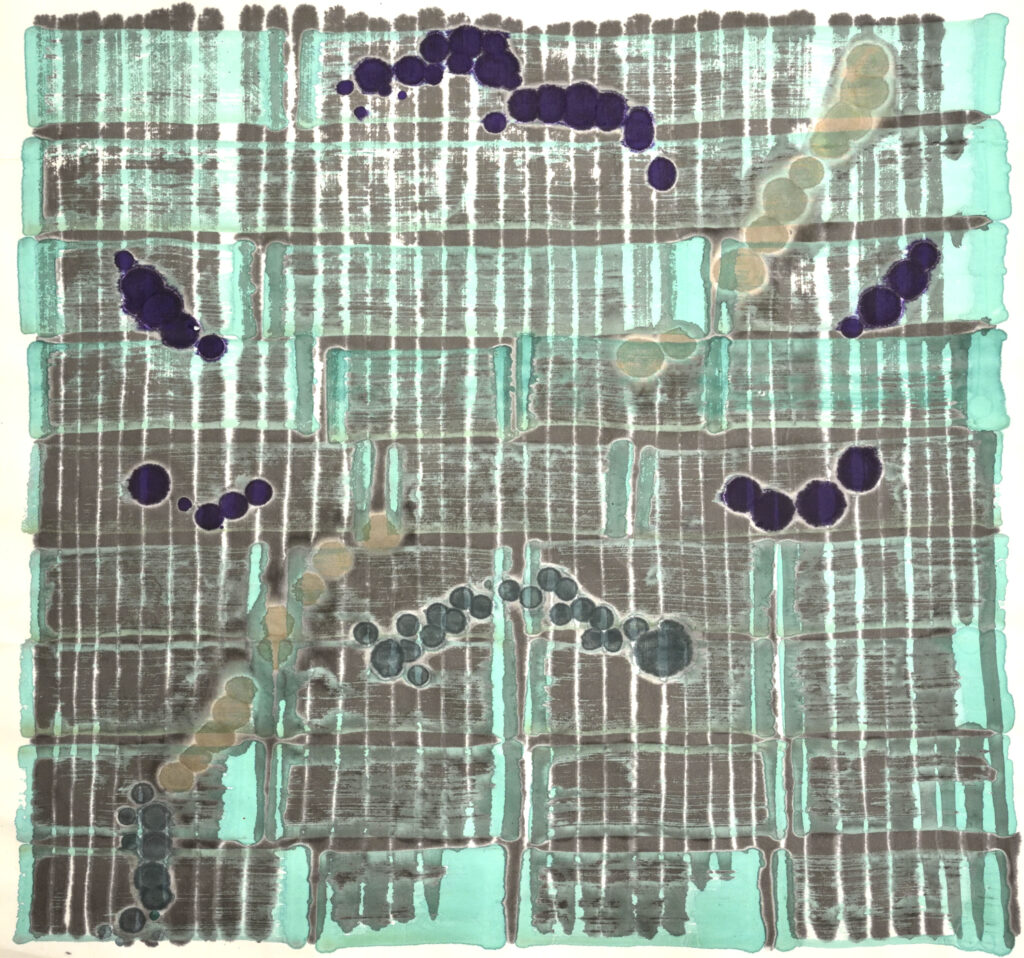

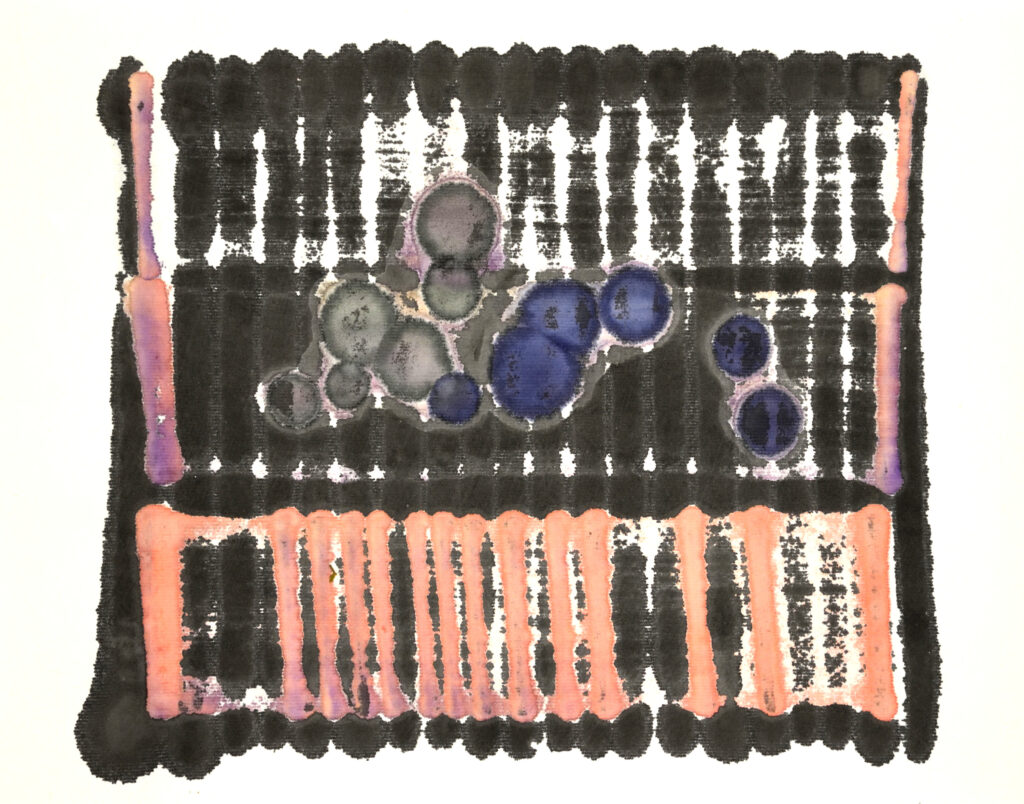
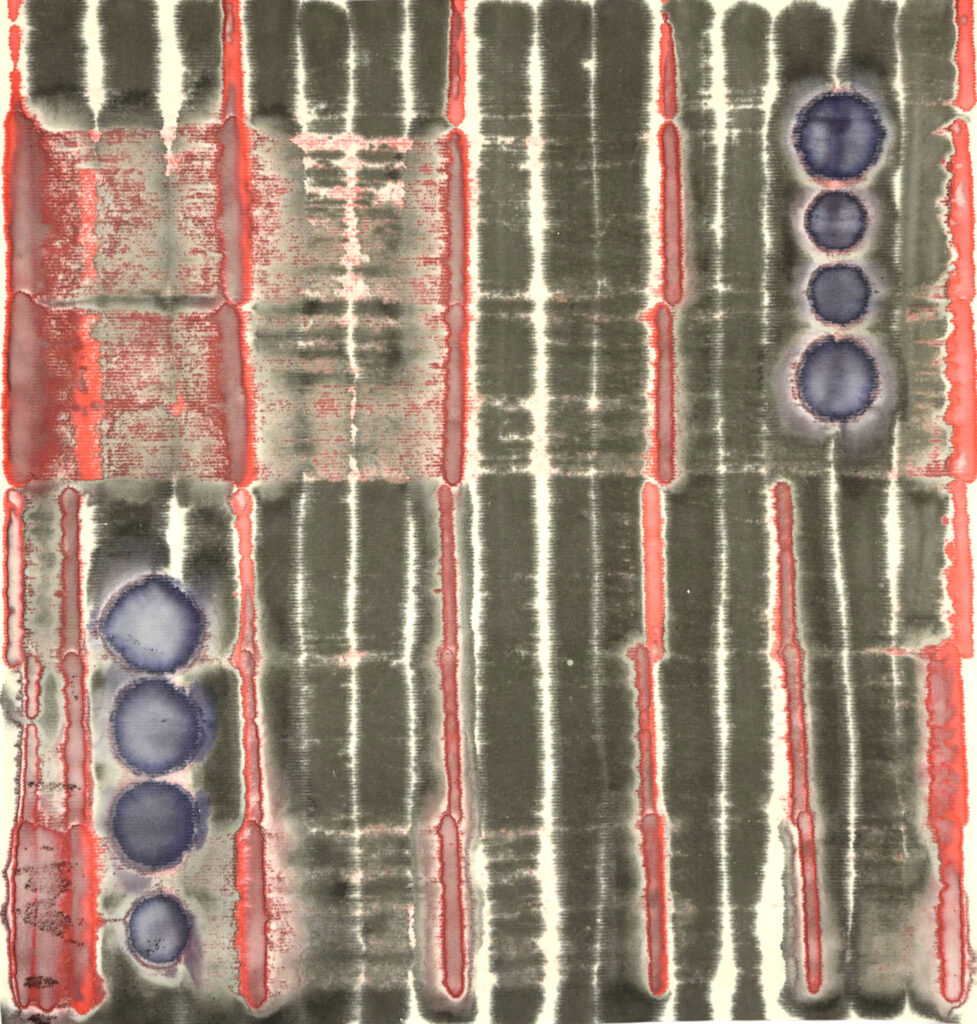
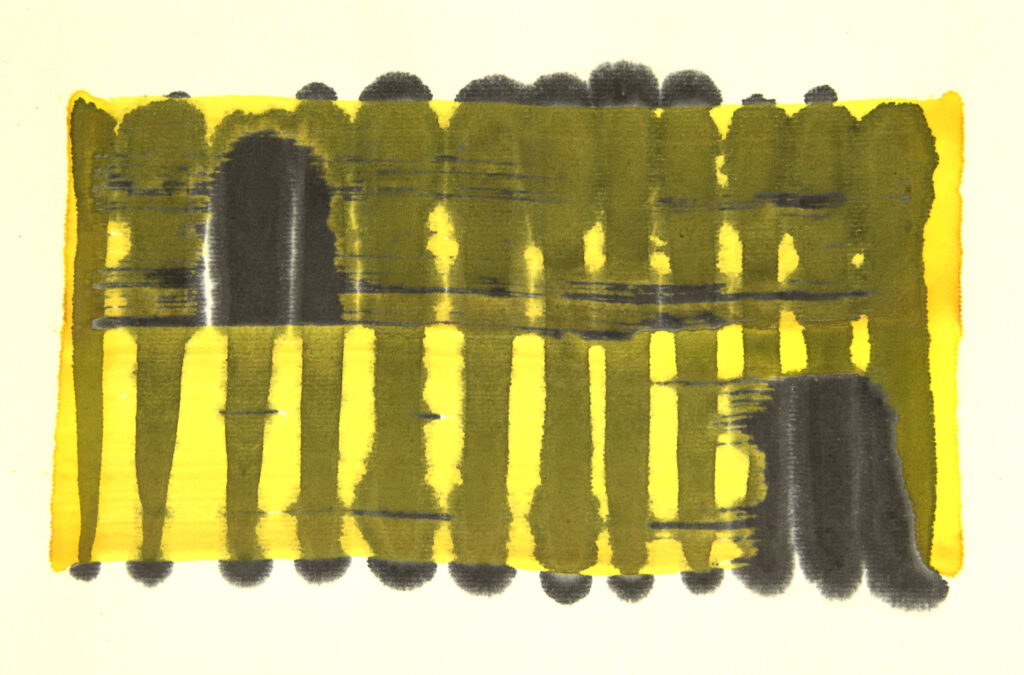
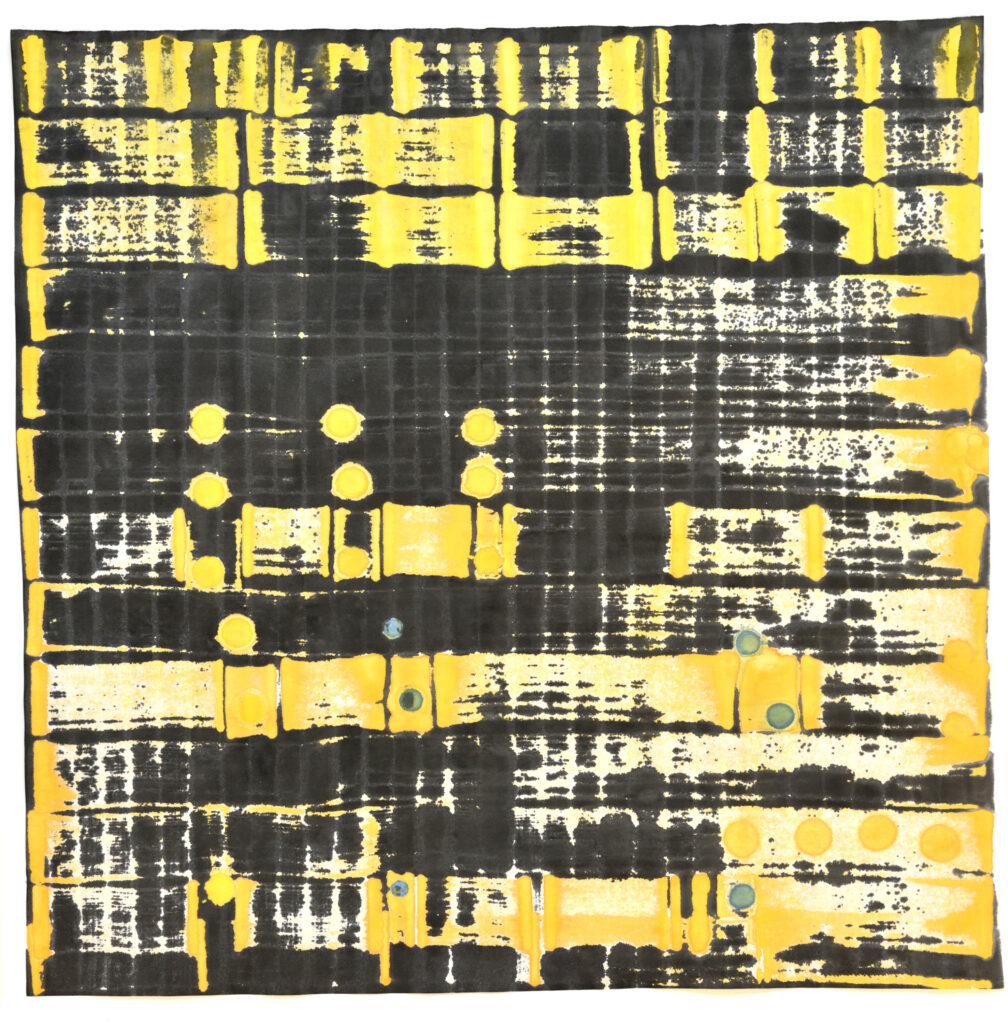


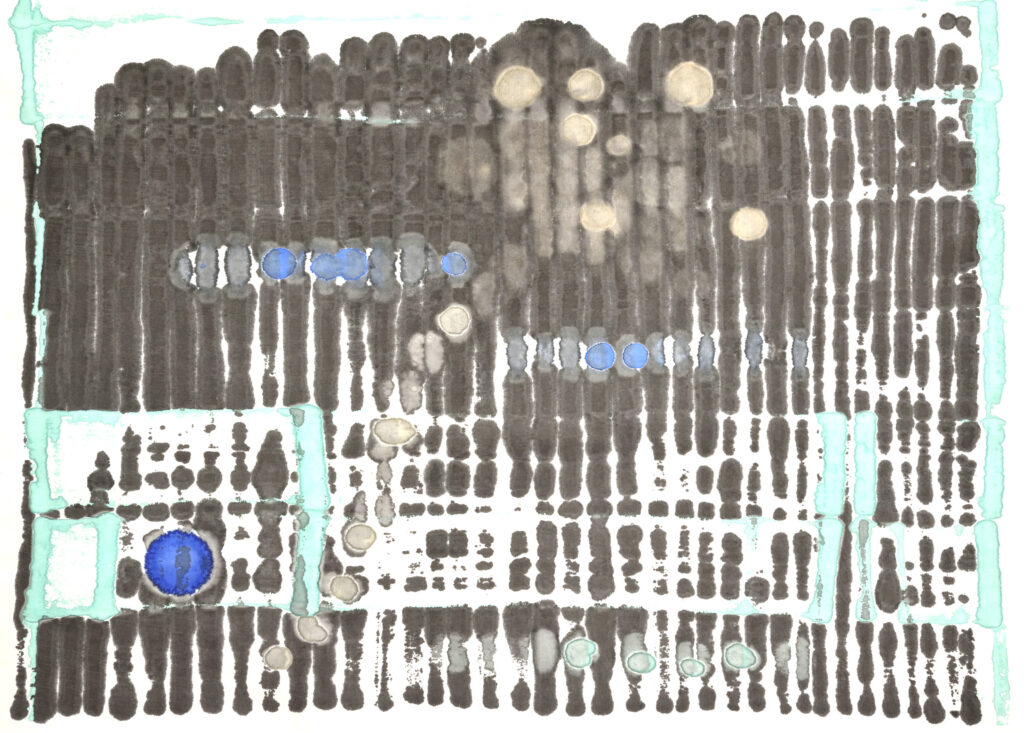
One drop only- the inner rhythm
Ink on ricepaper
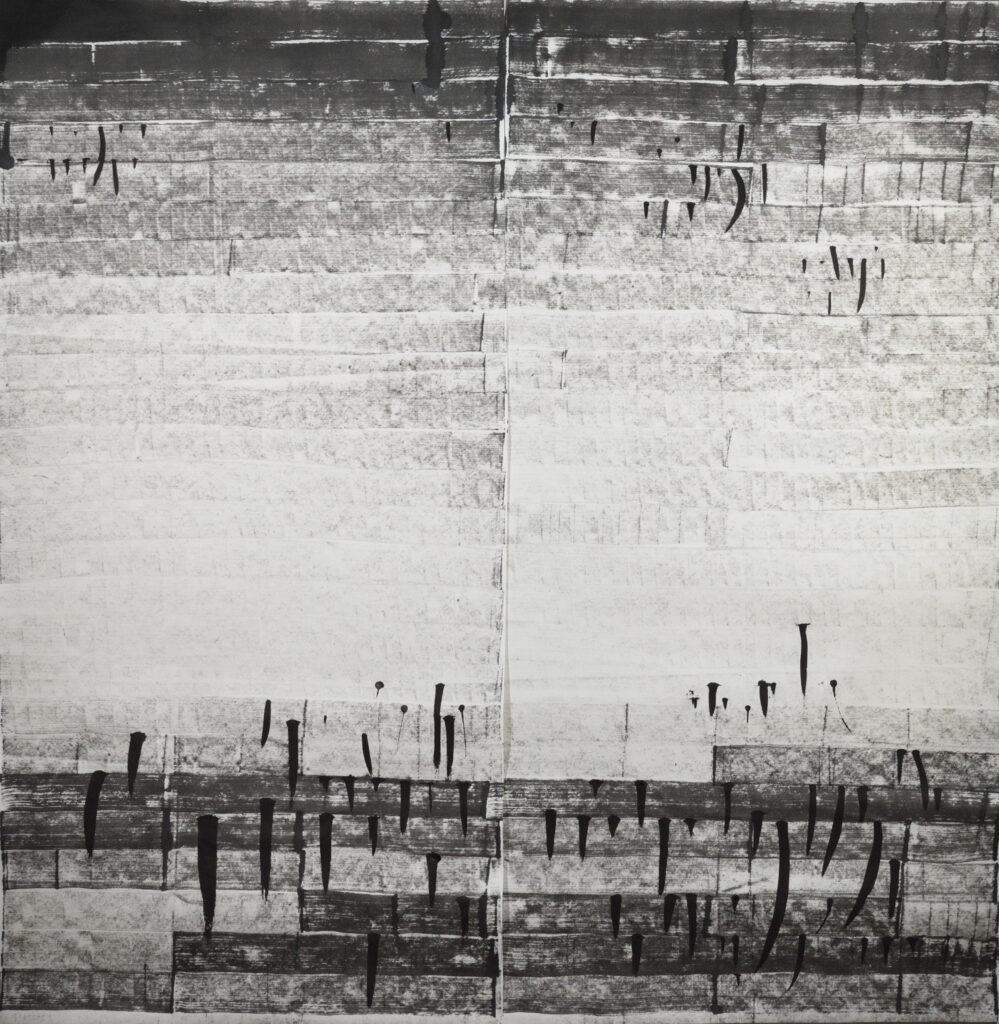
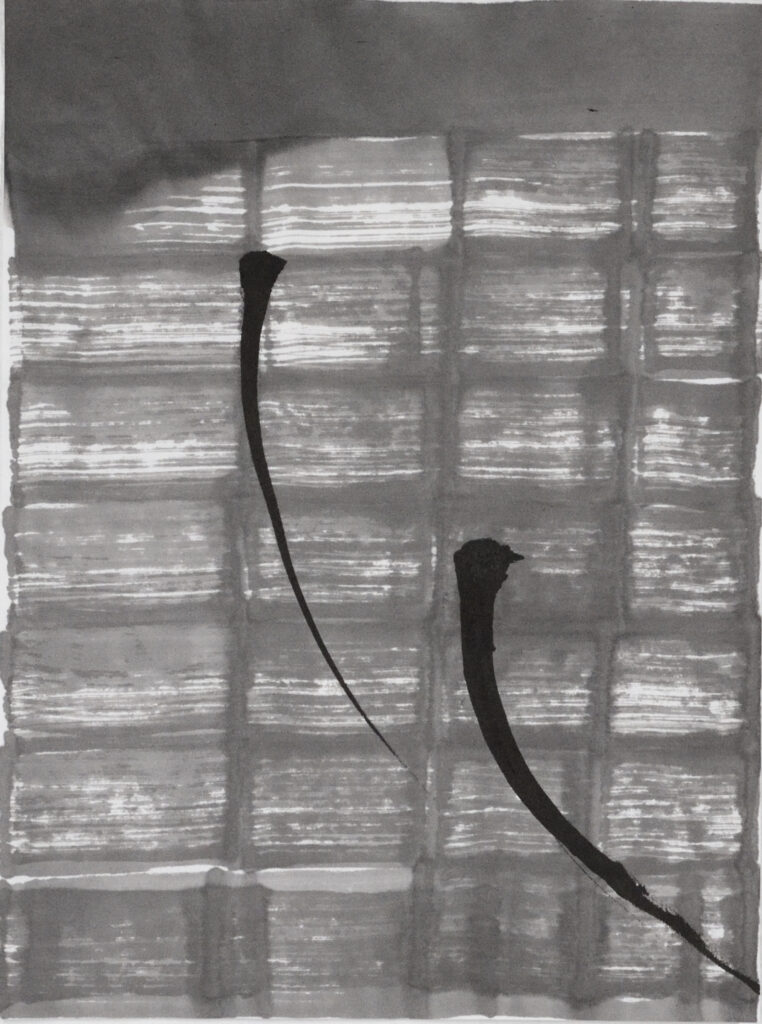

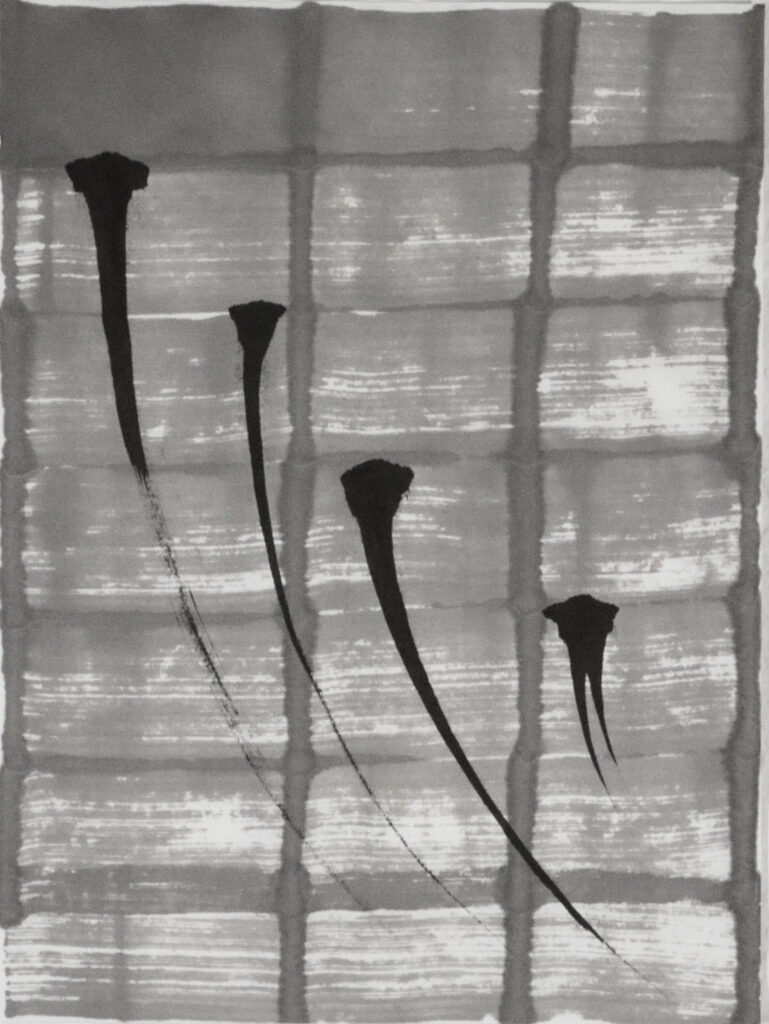




2020
Berührungspunkte – Stop and go
Tusche auf Reispapier



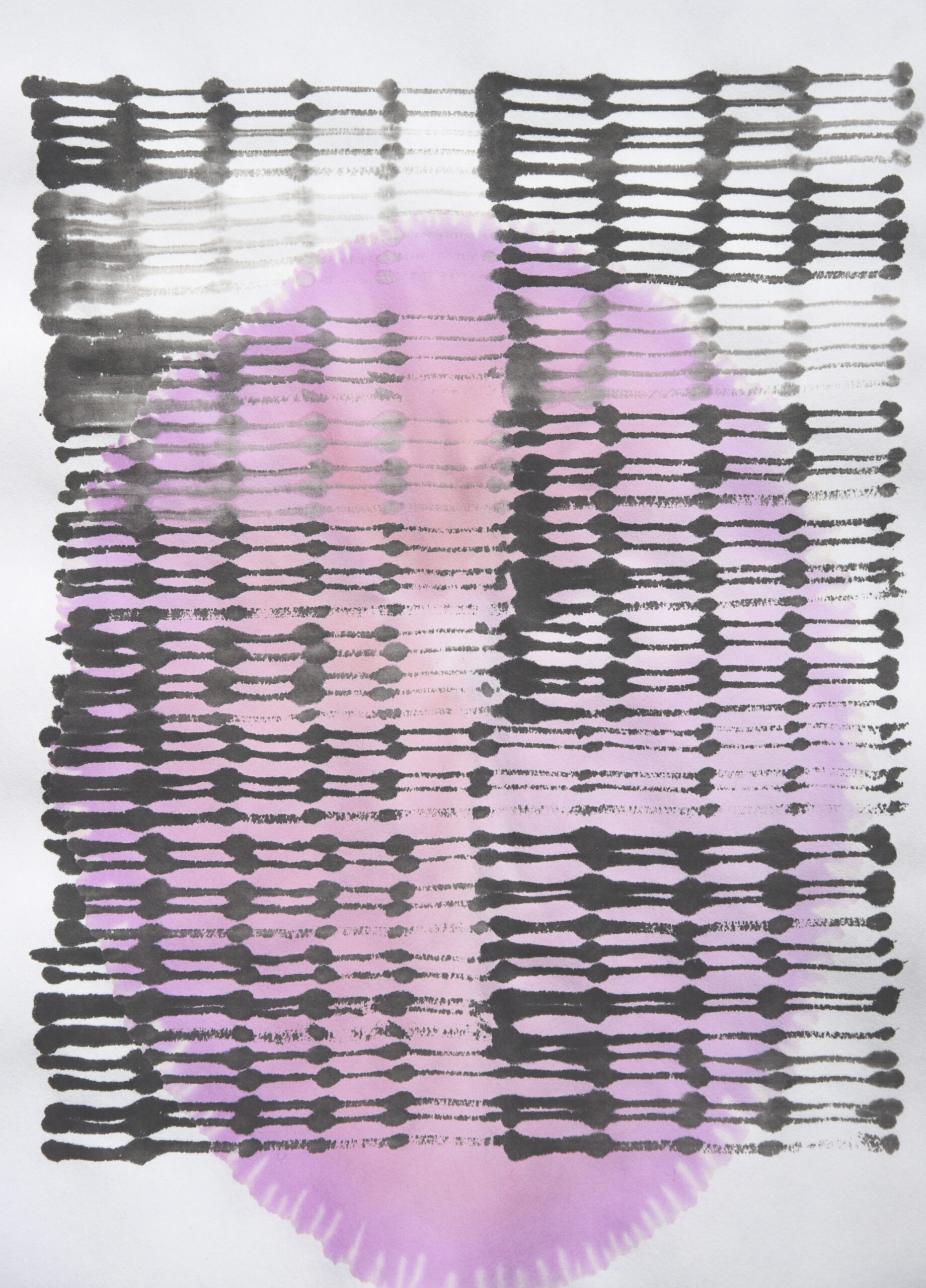
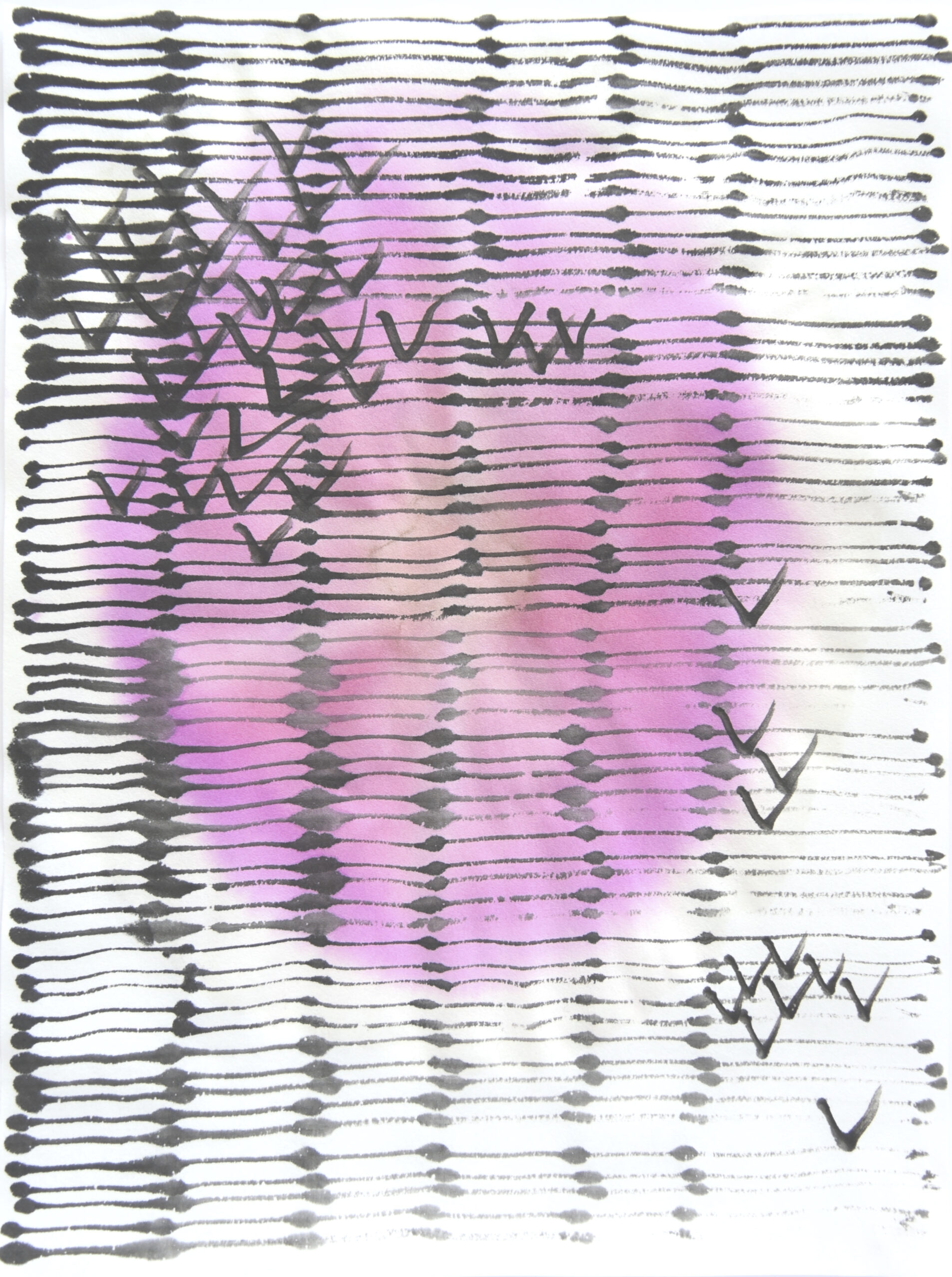

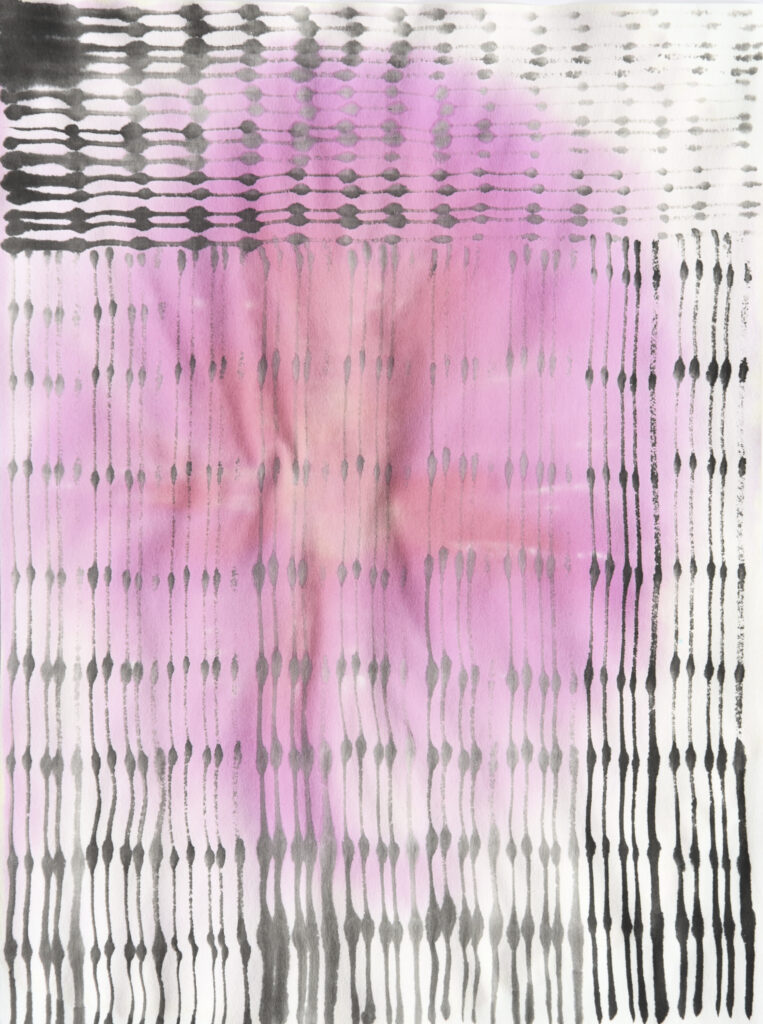

2019
„Free“, Shikechi Serie
Tusche auf Reispapier, aufgezogen auf Karton
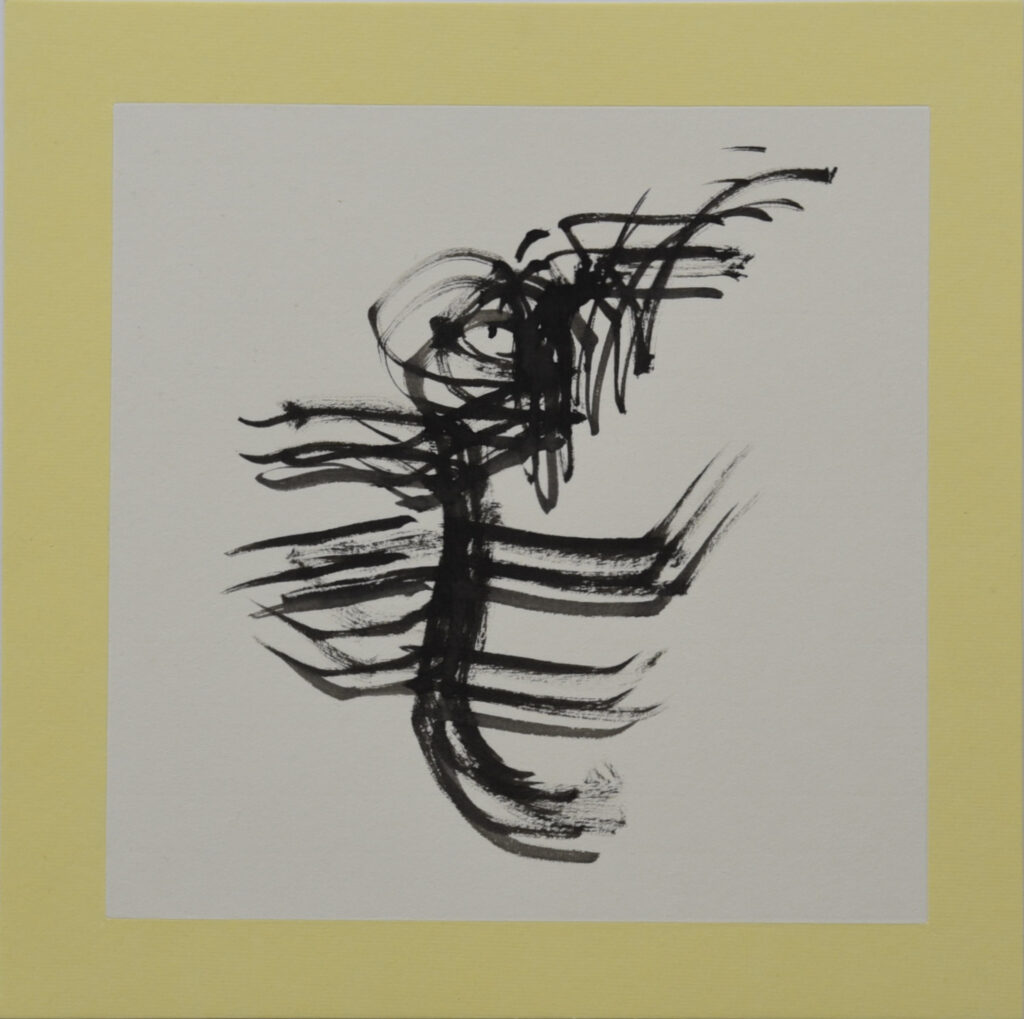
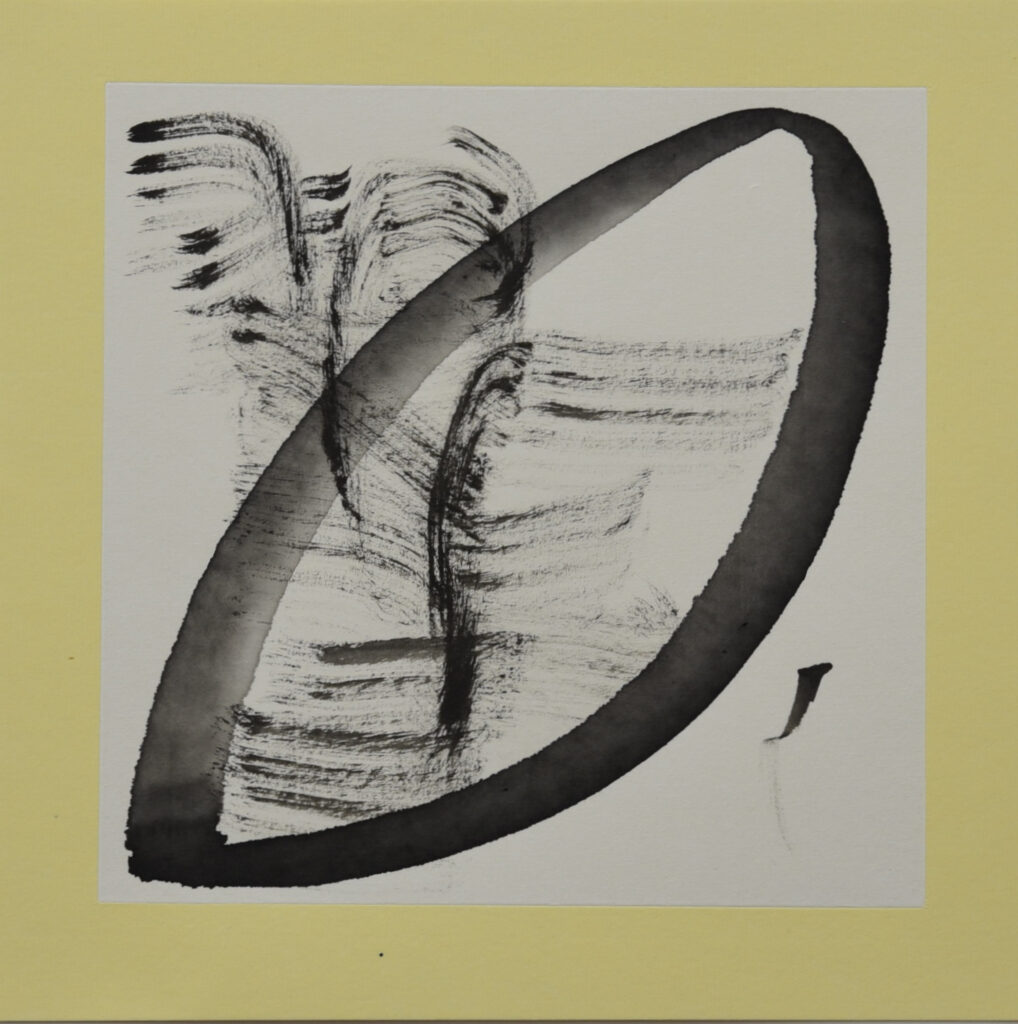

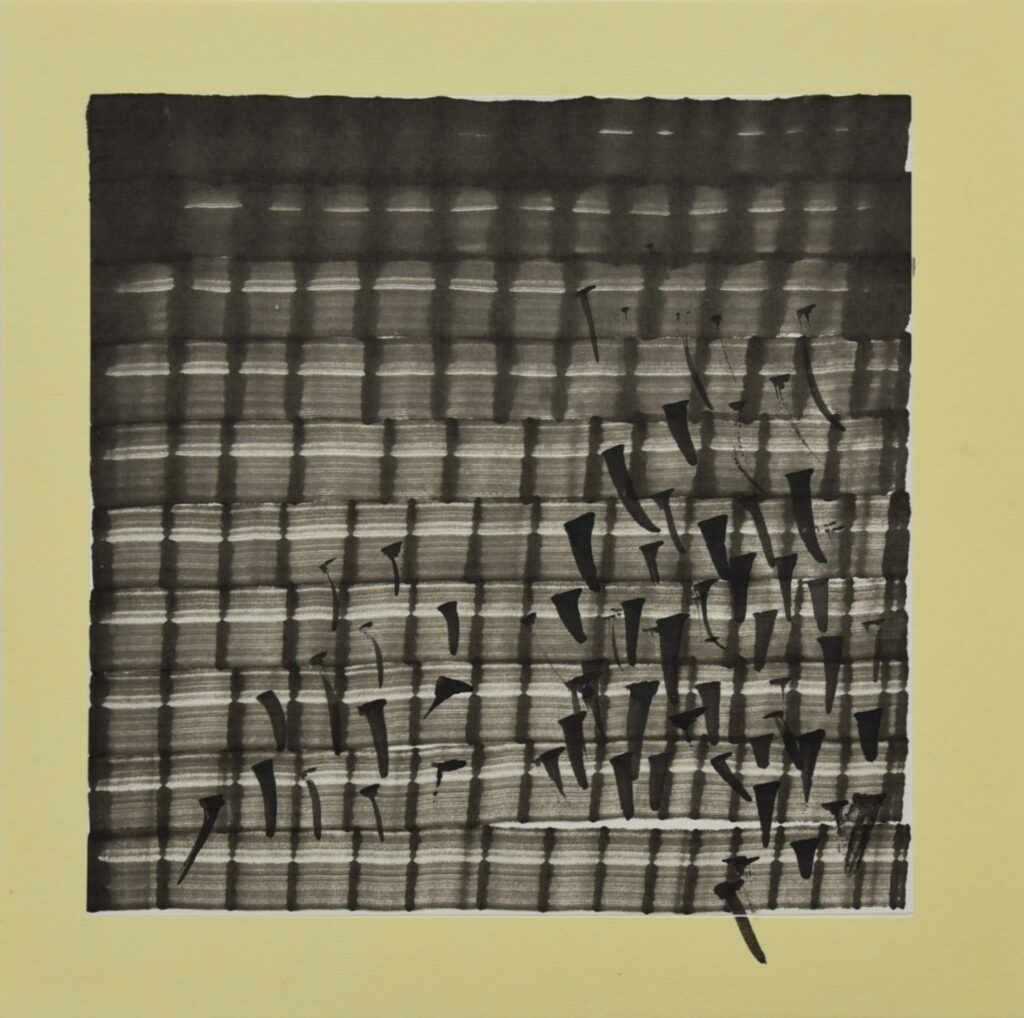
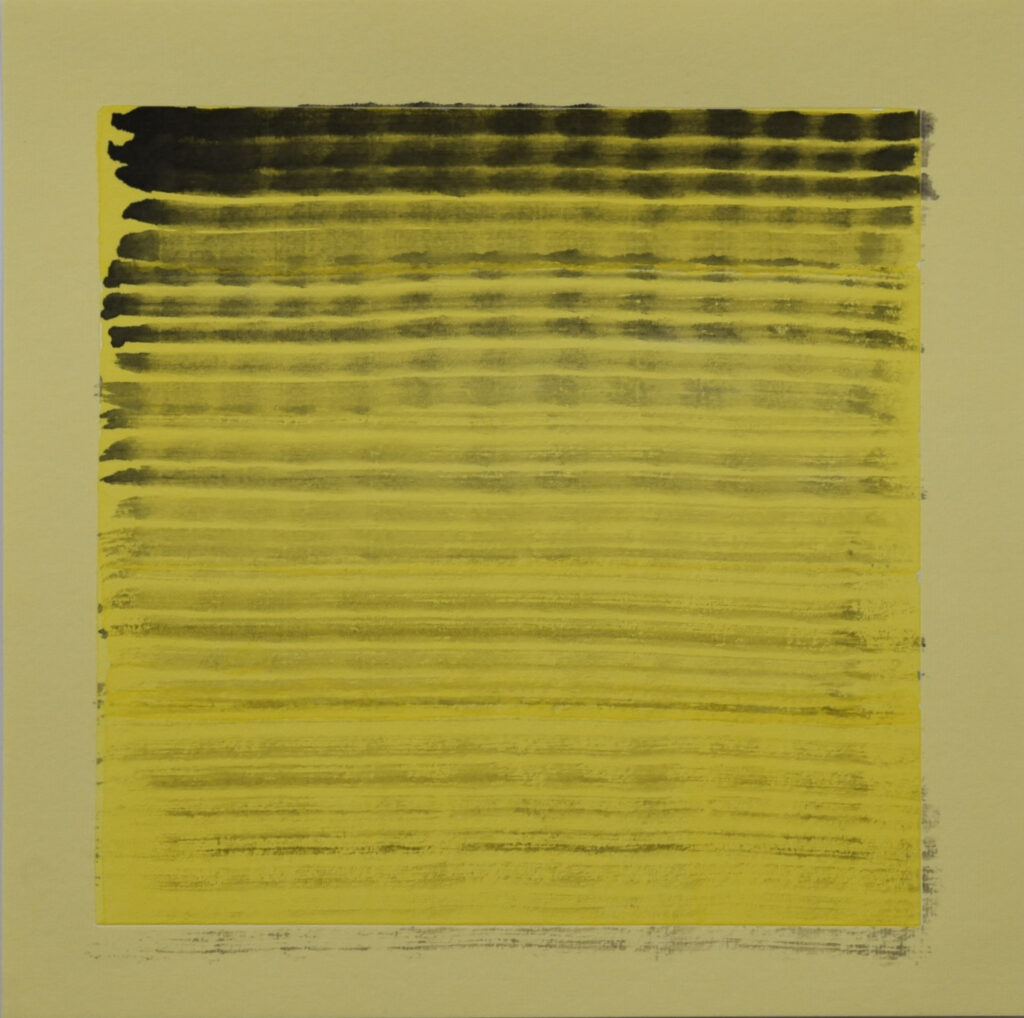
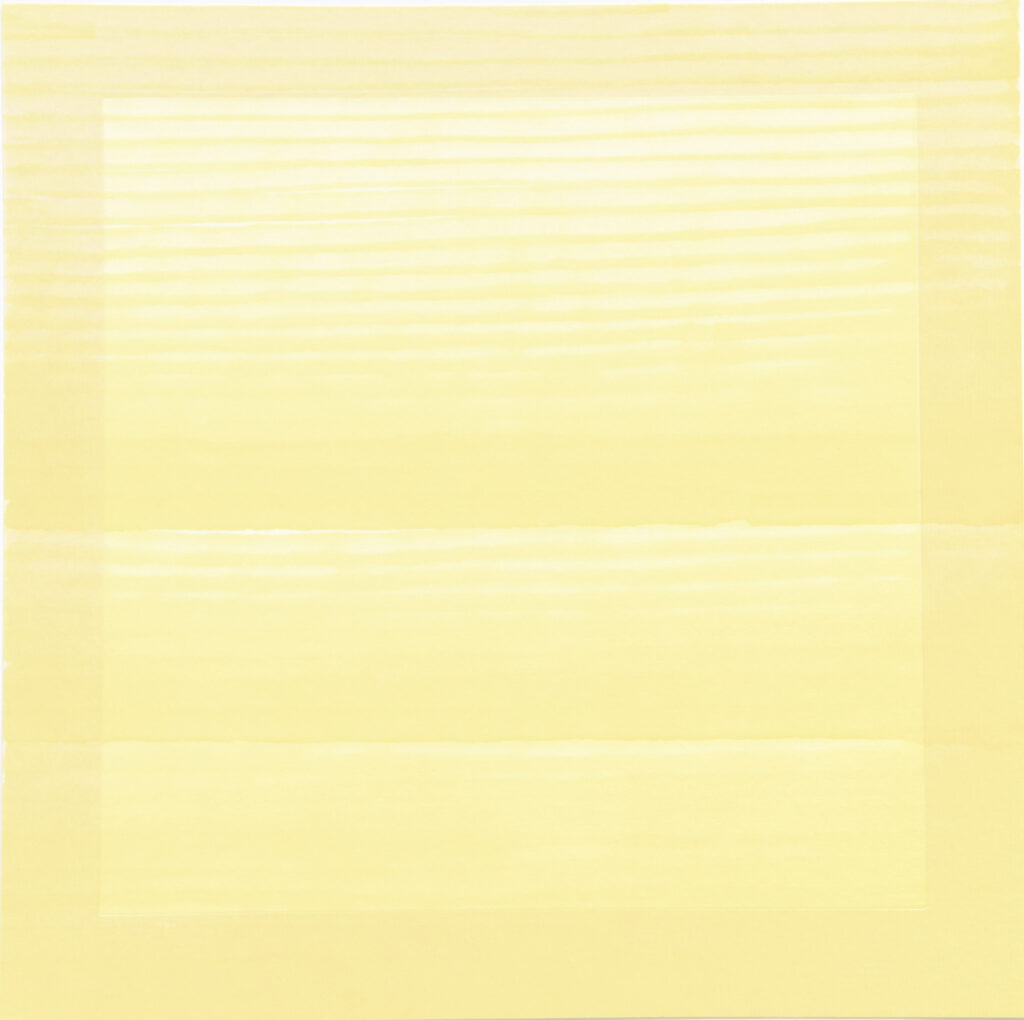
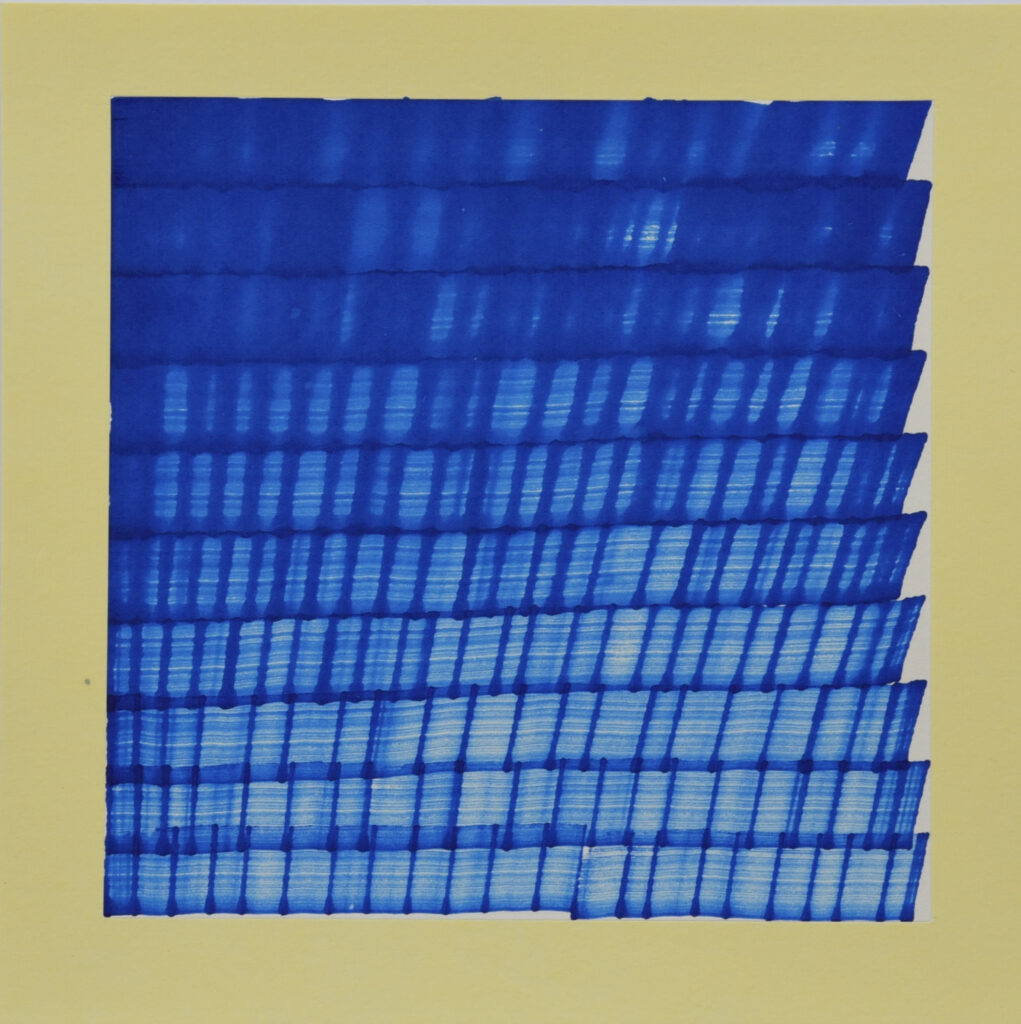

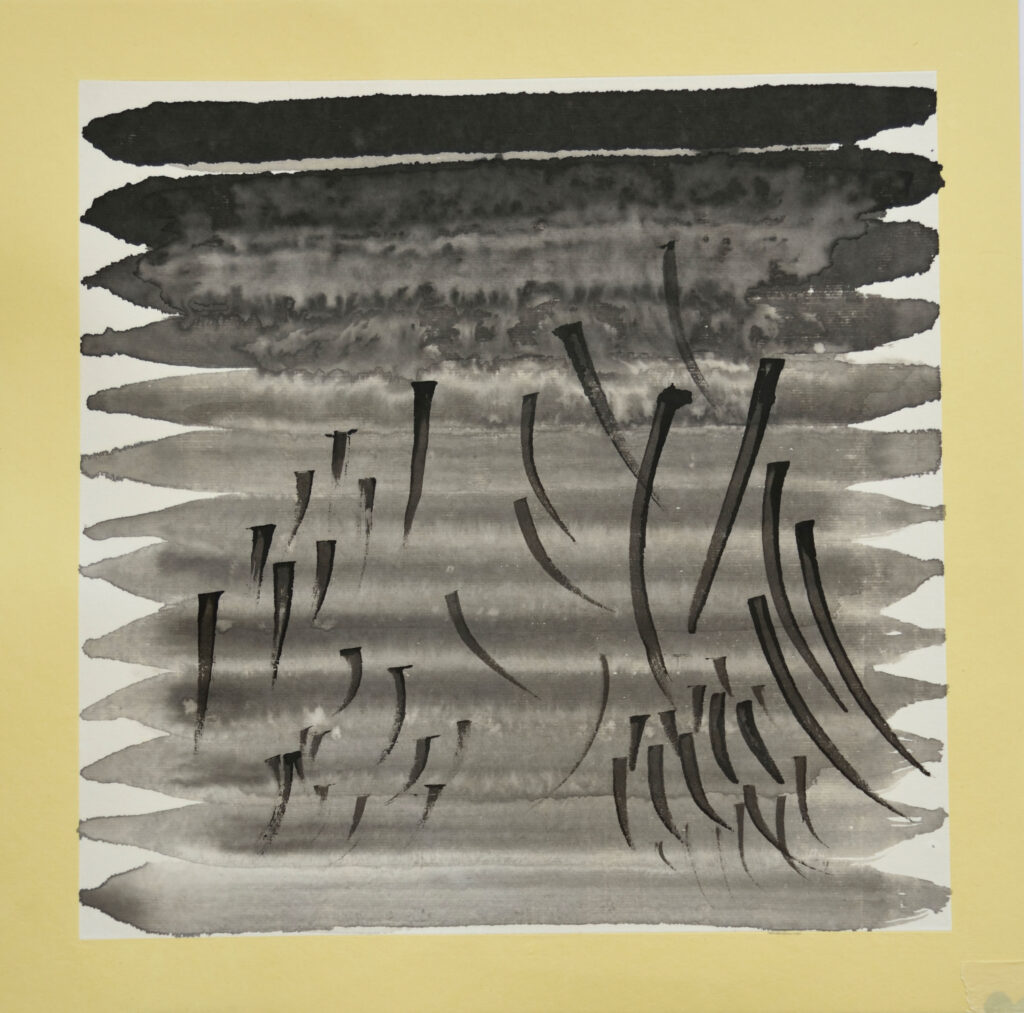

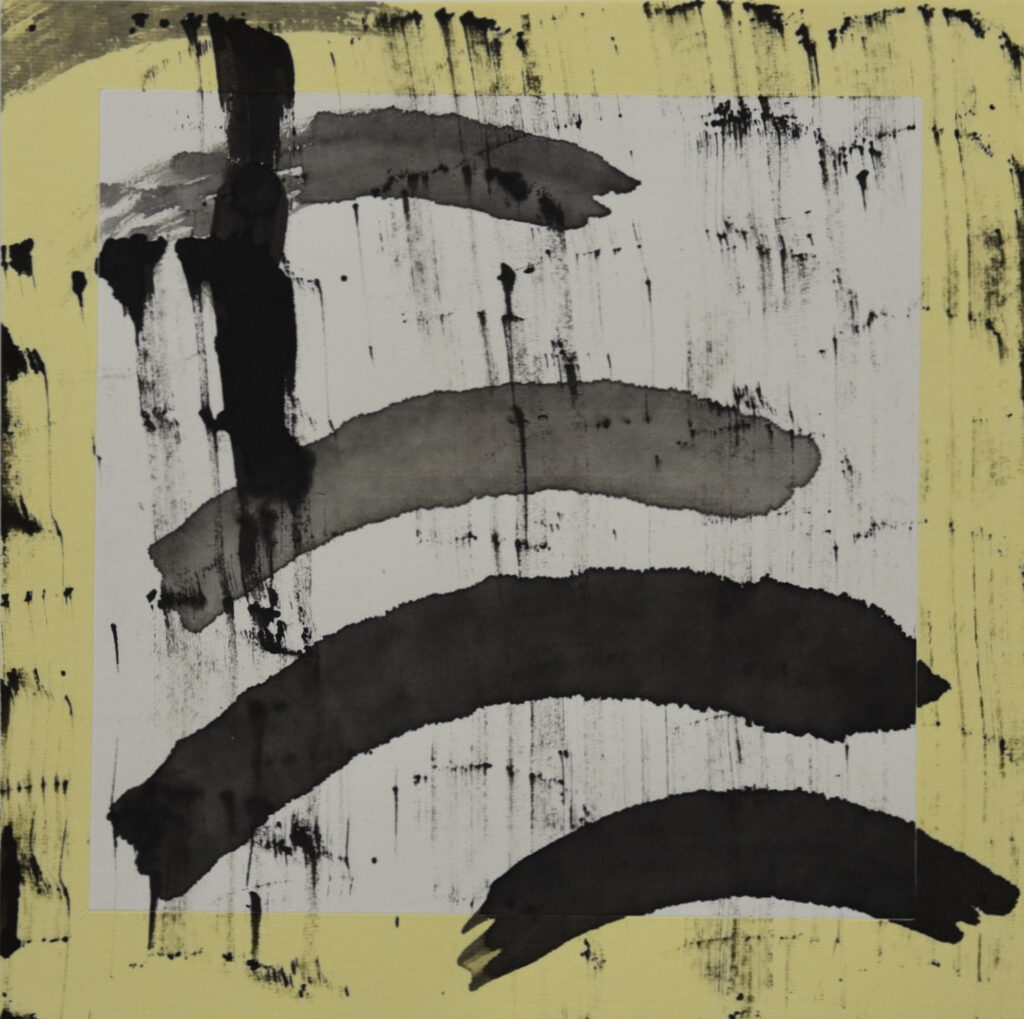
2018
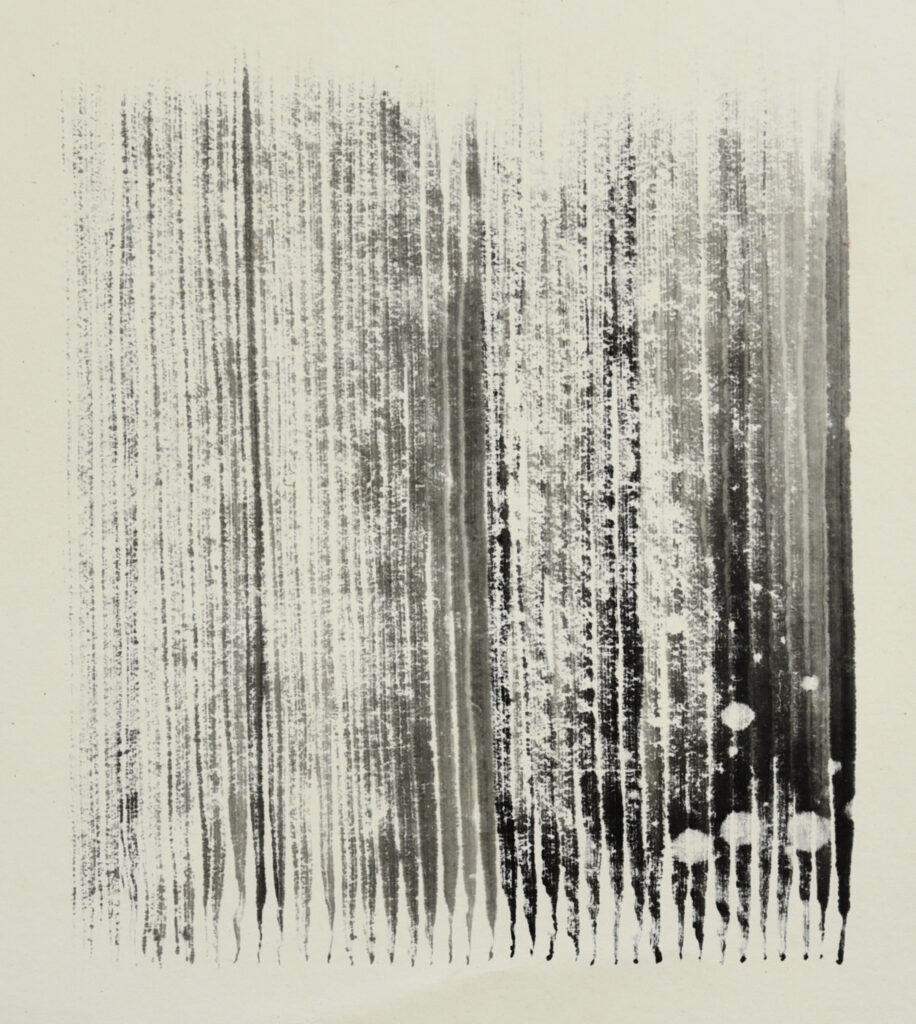
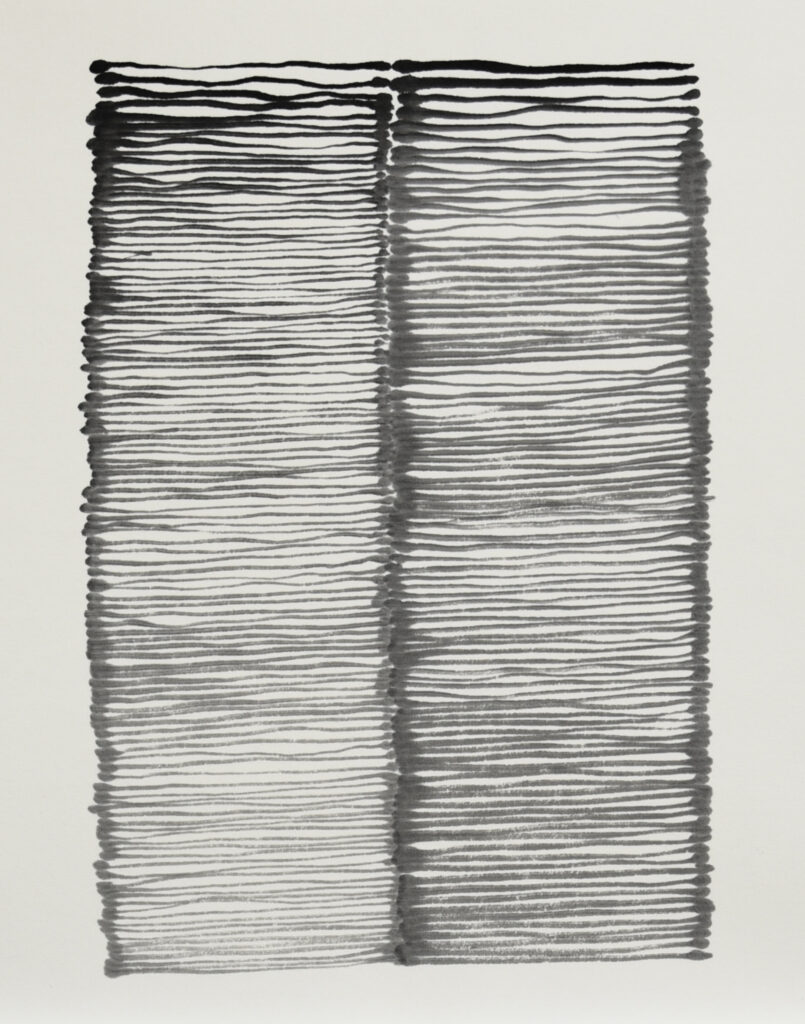



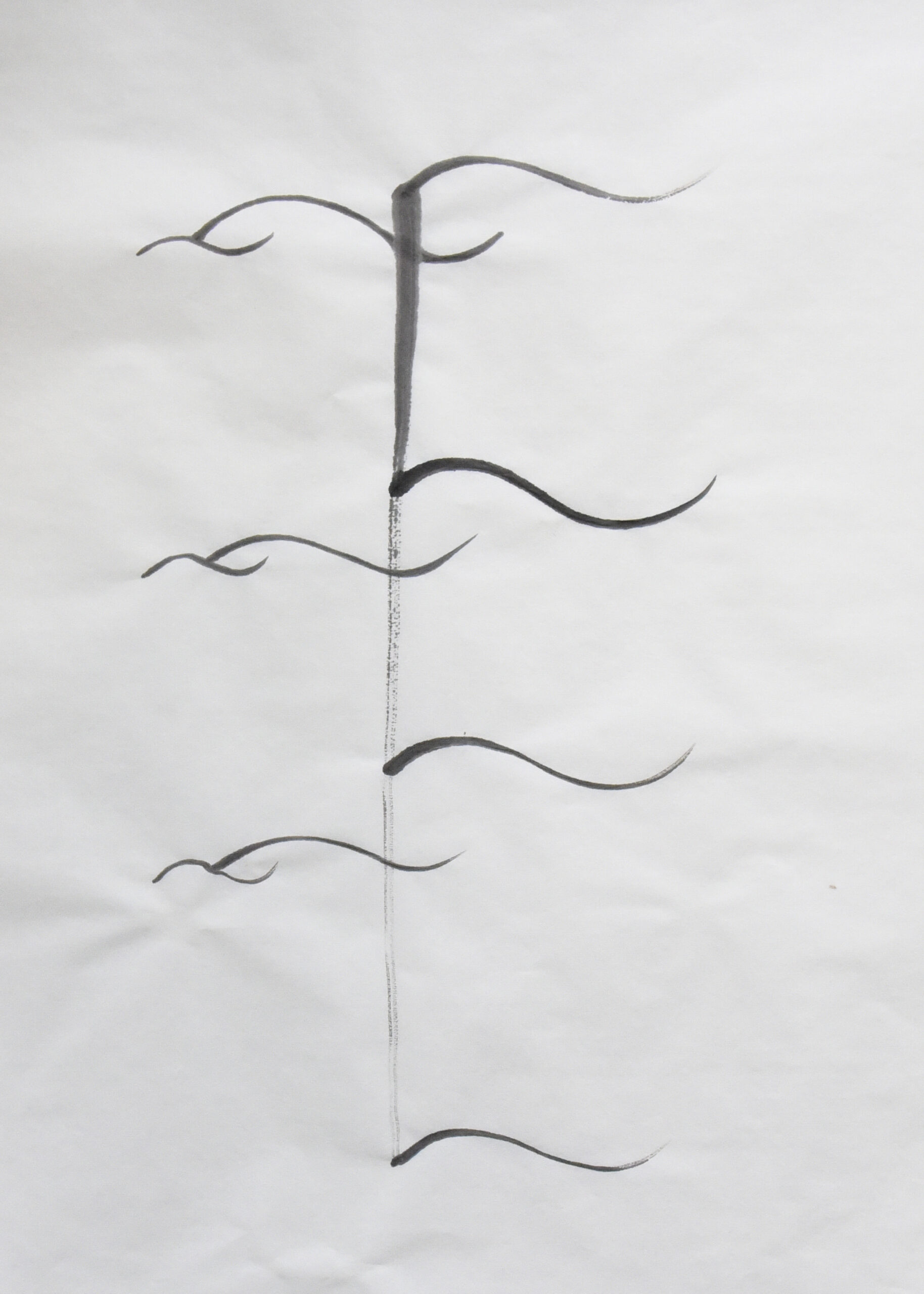
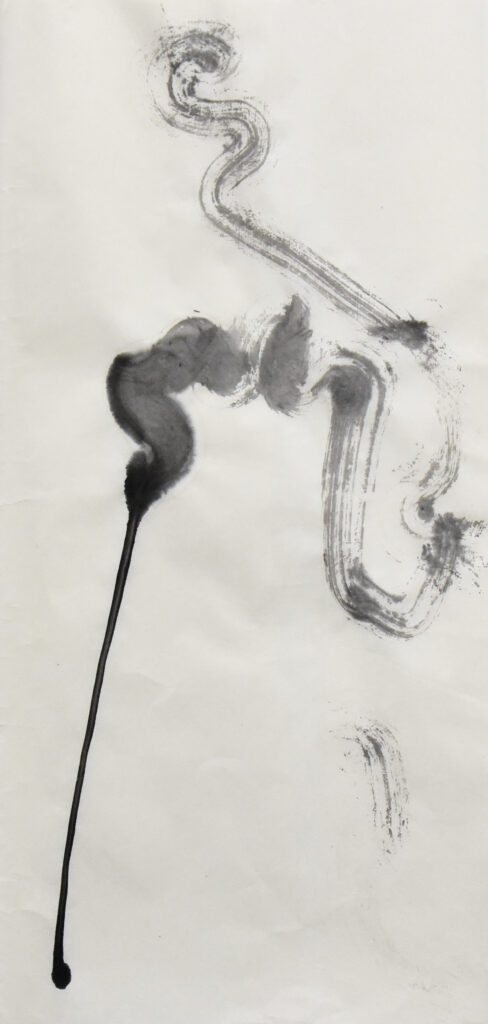
2017
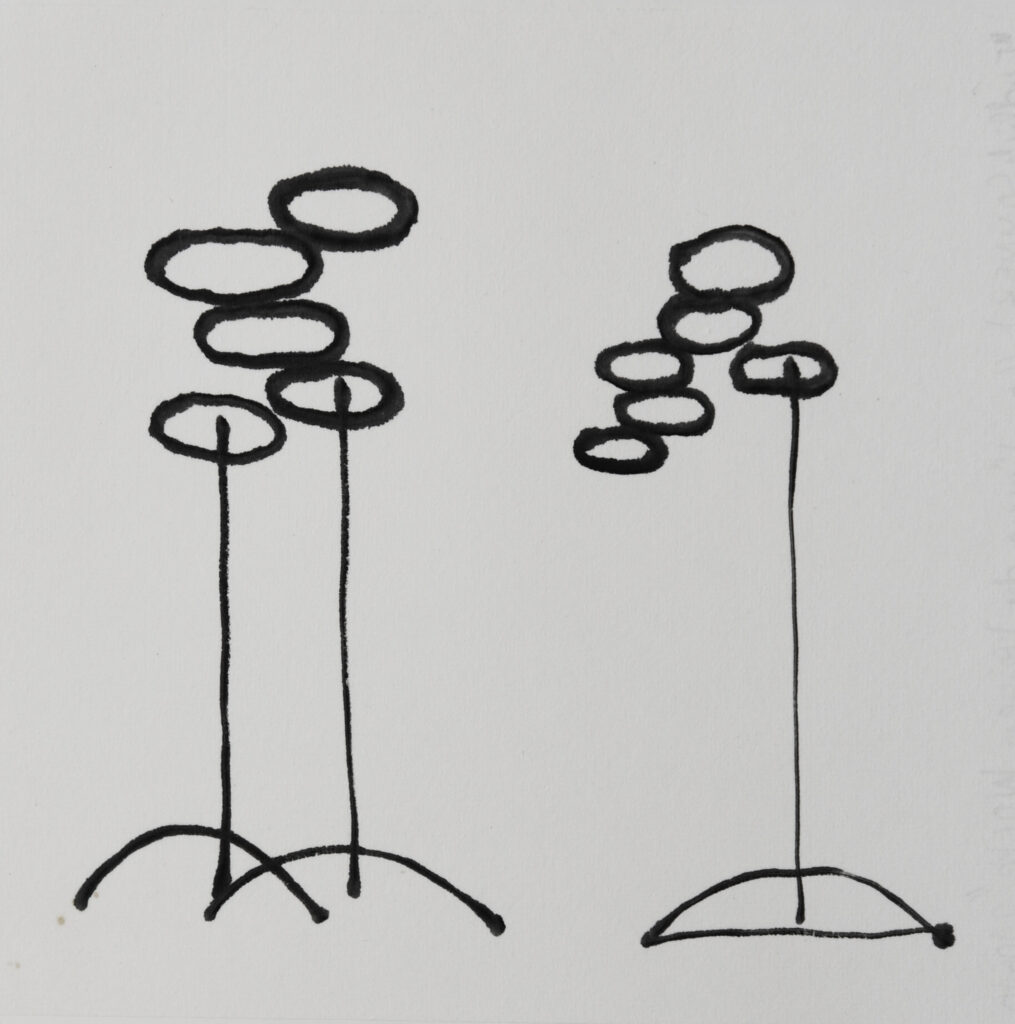
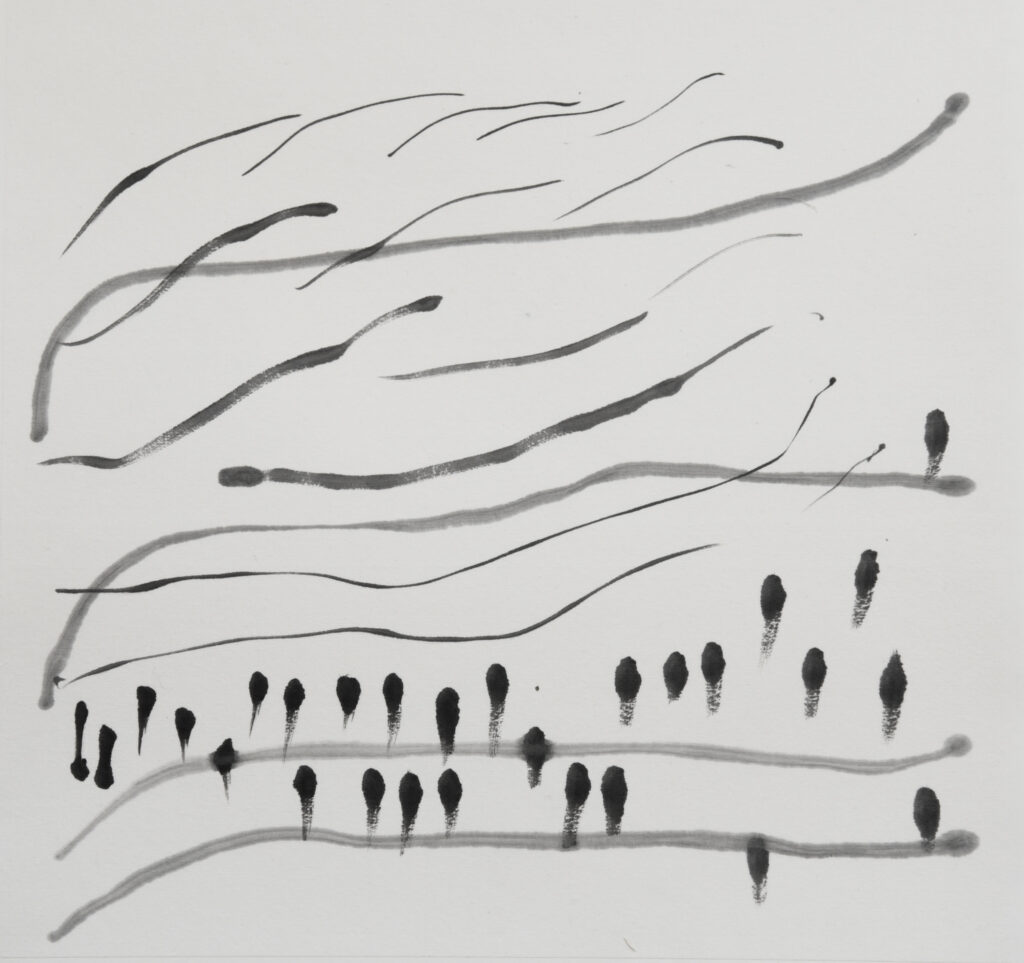

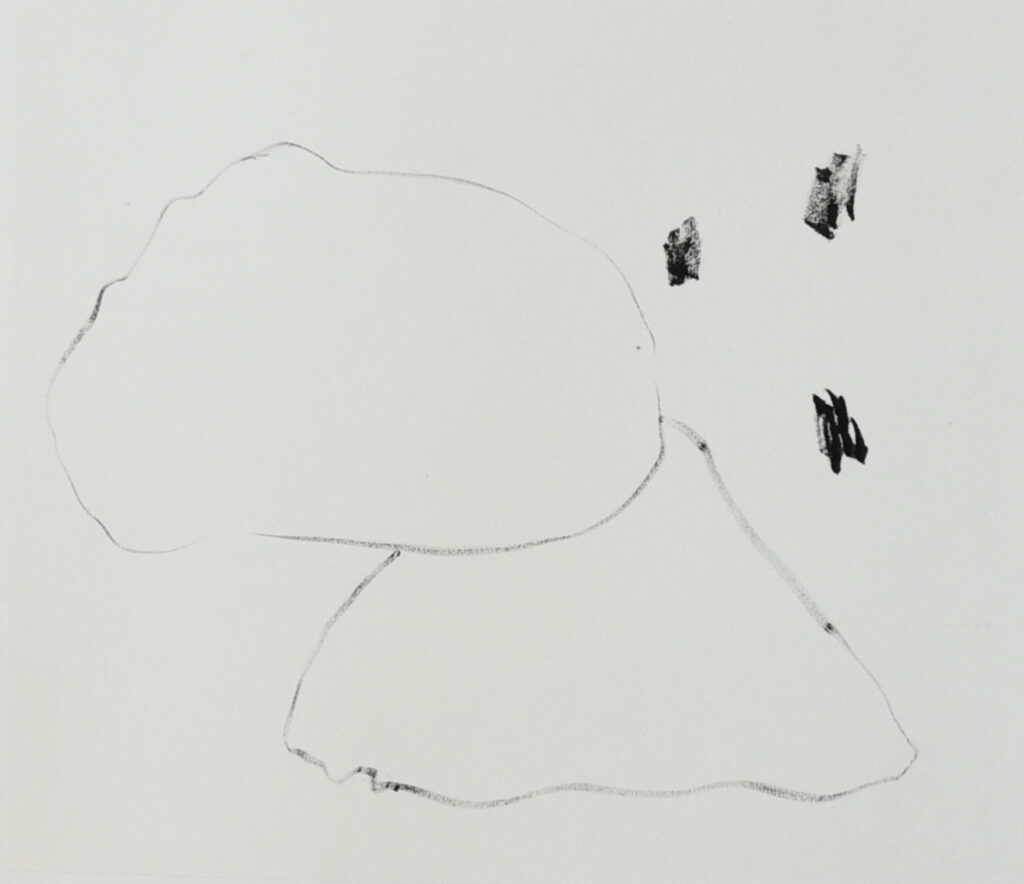
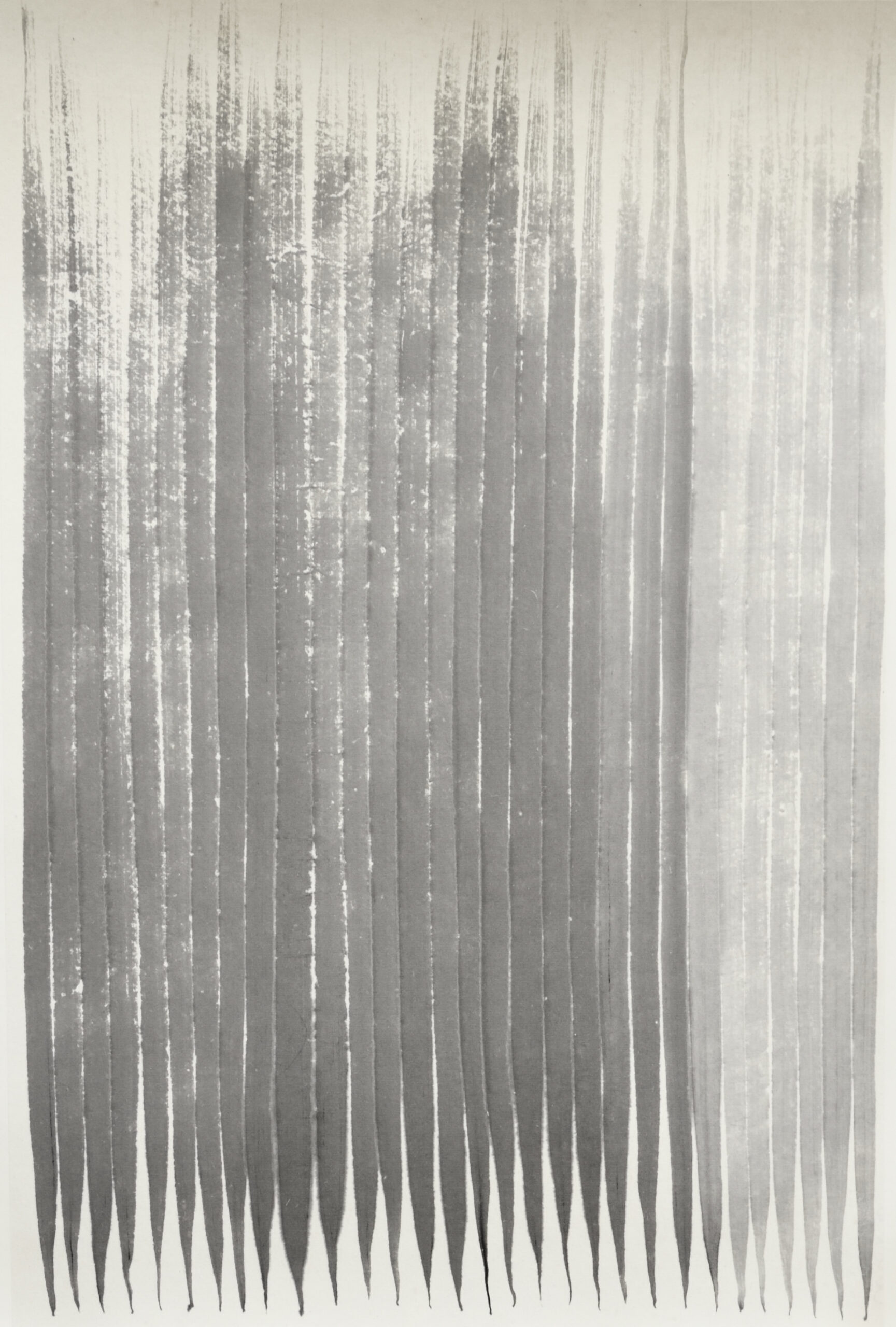
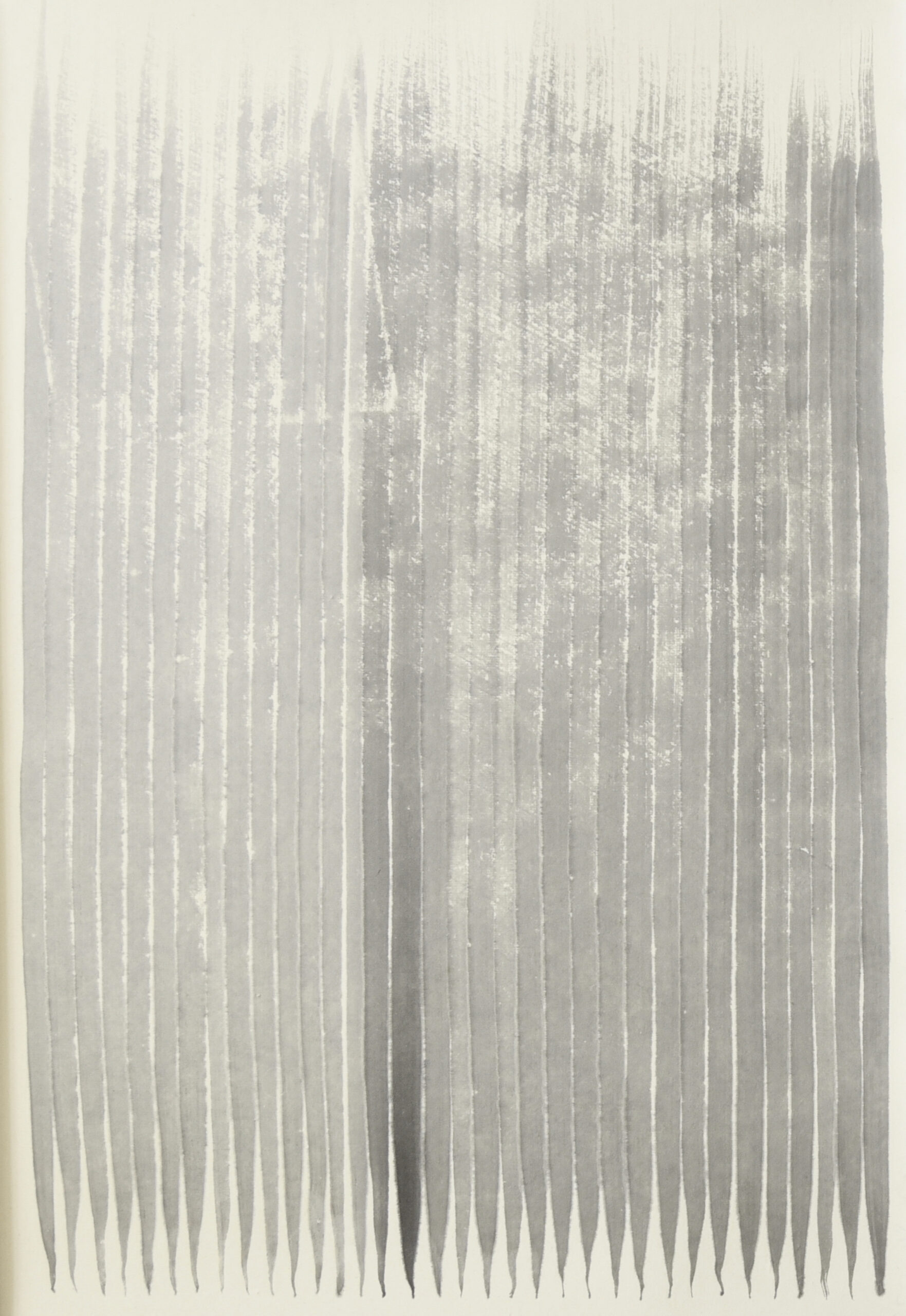
2016
„Duette“


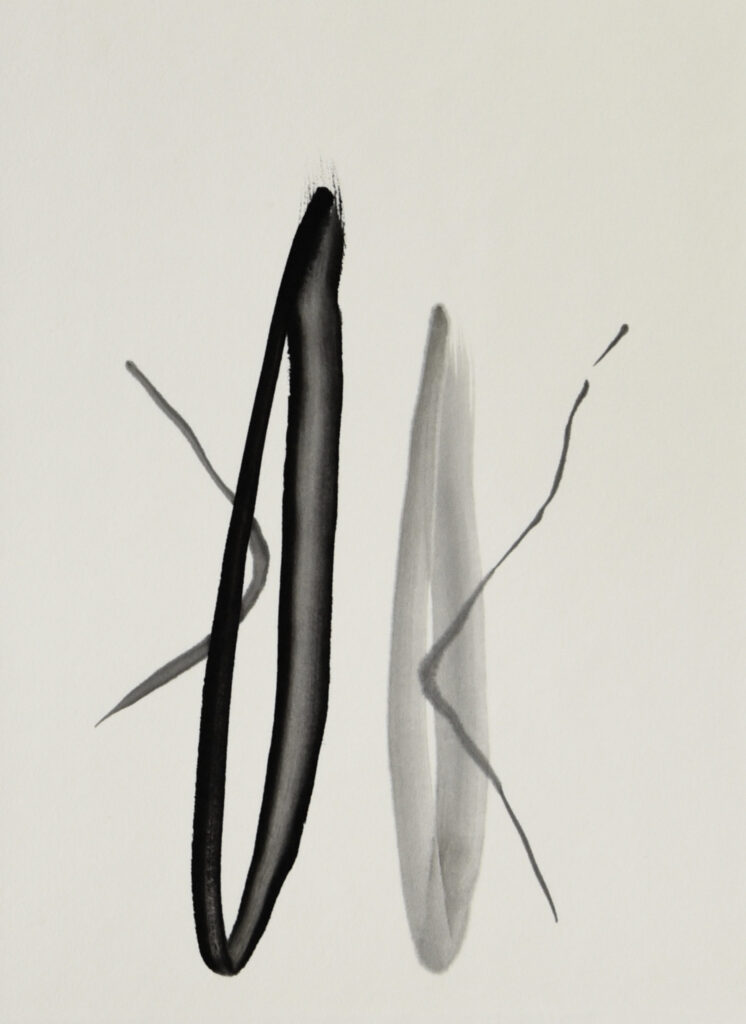

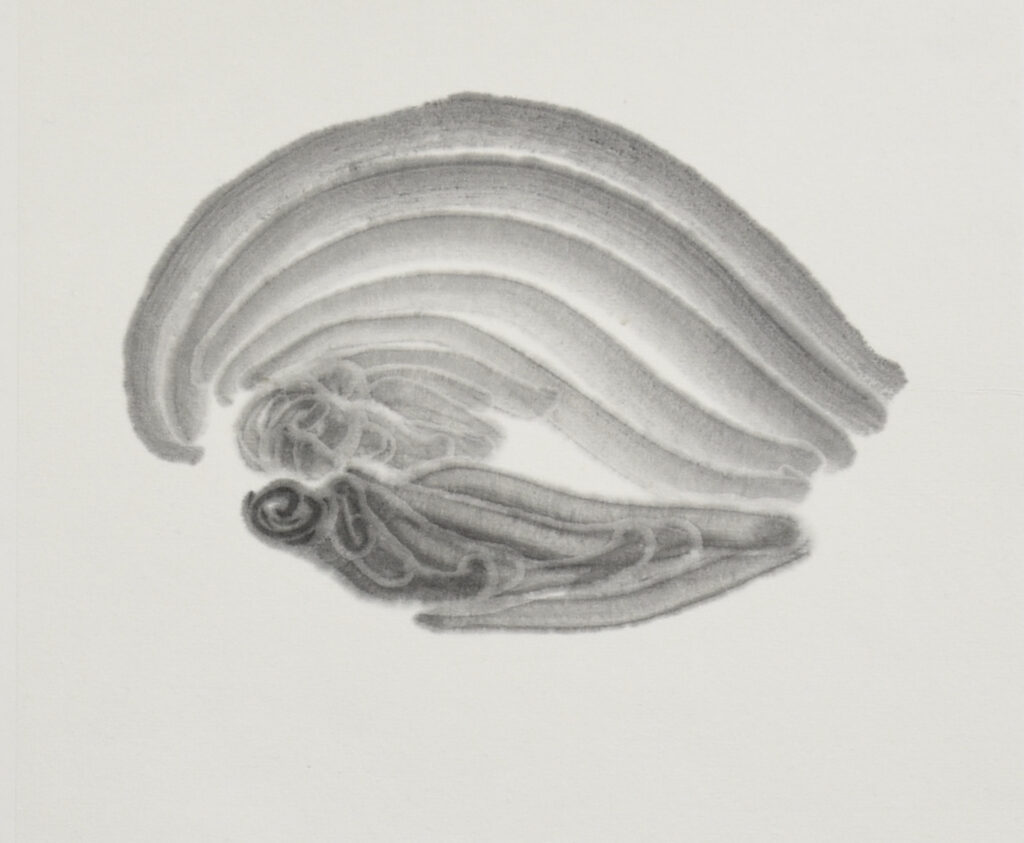
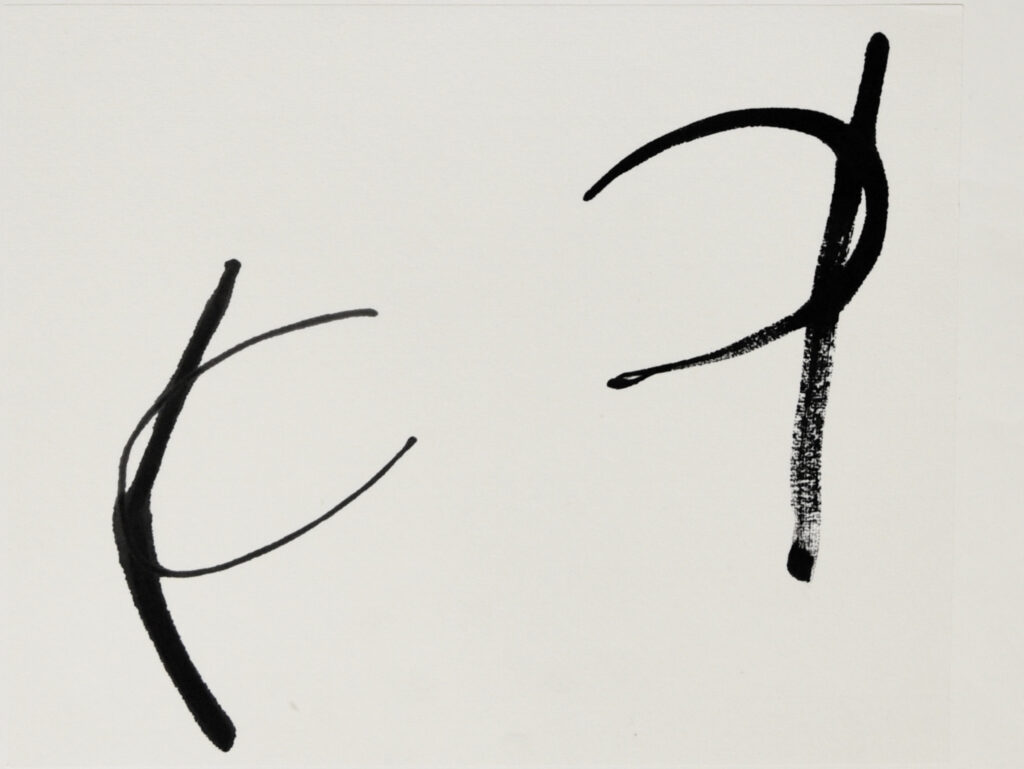
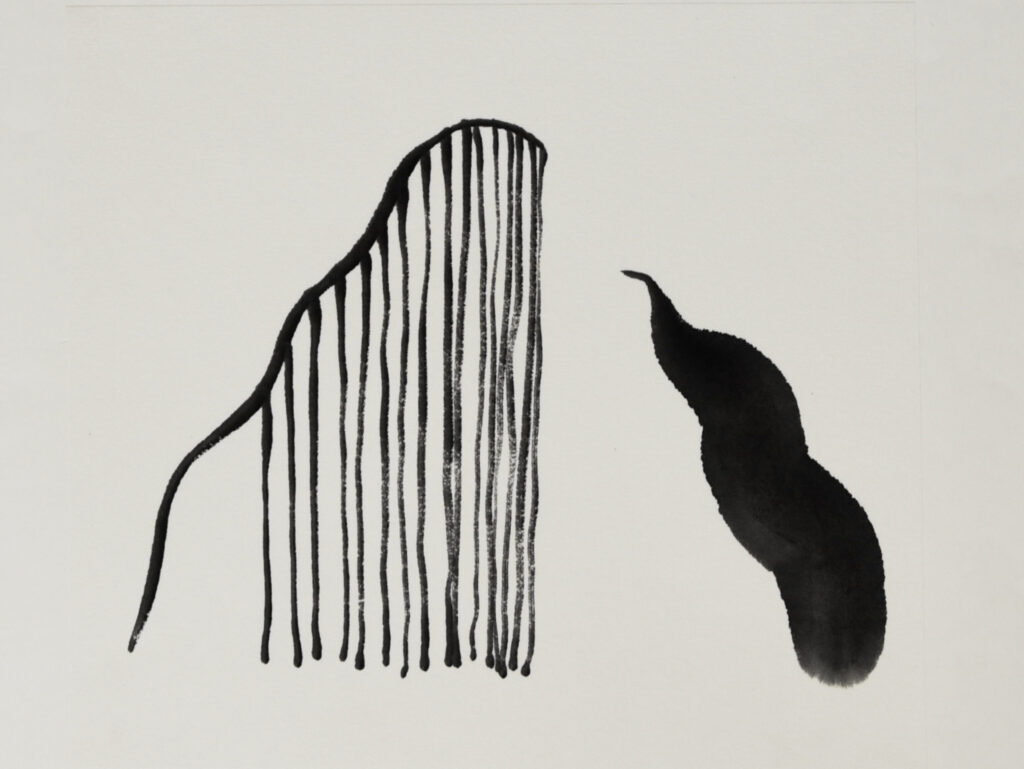
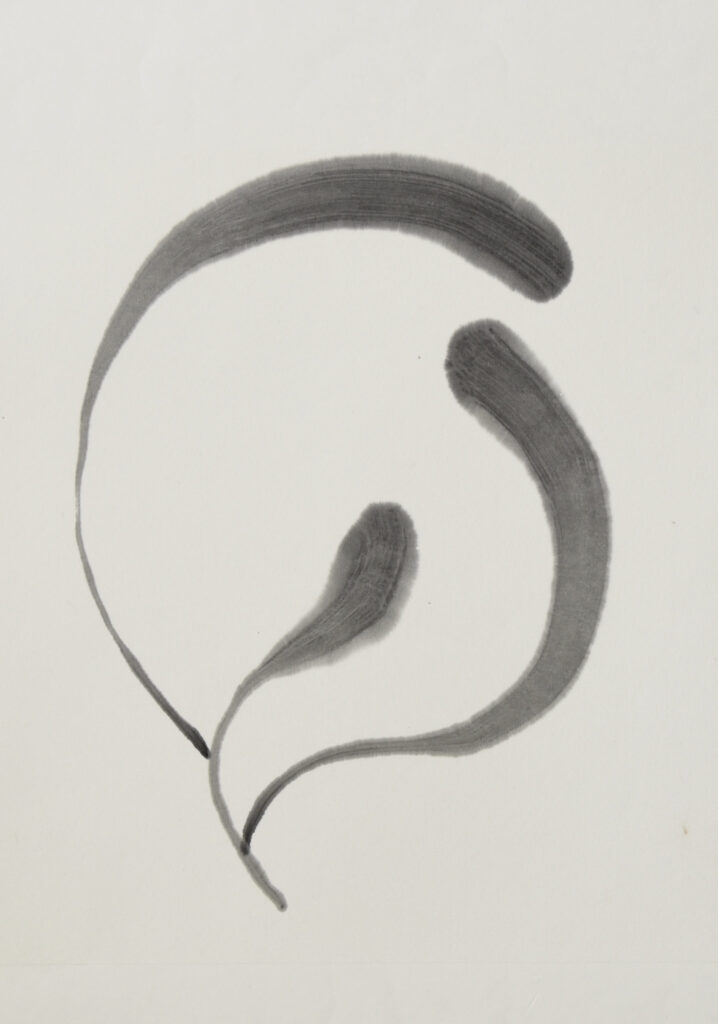
2015
Linienzüge – Linienflüge
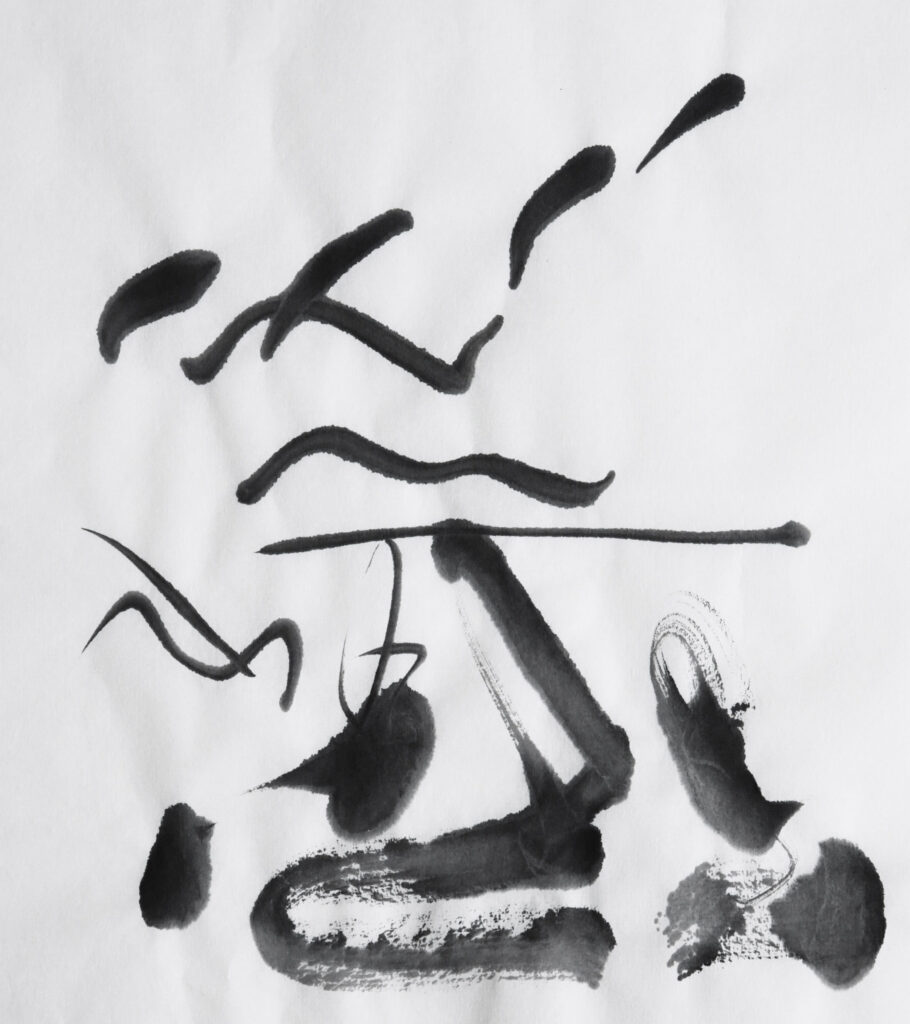
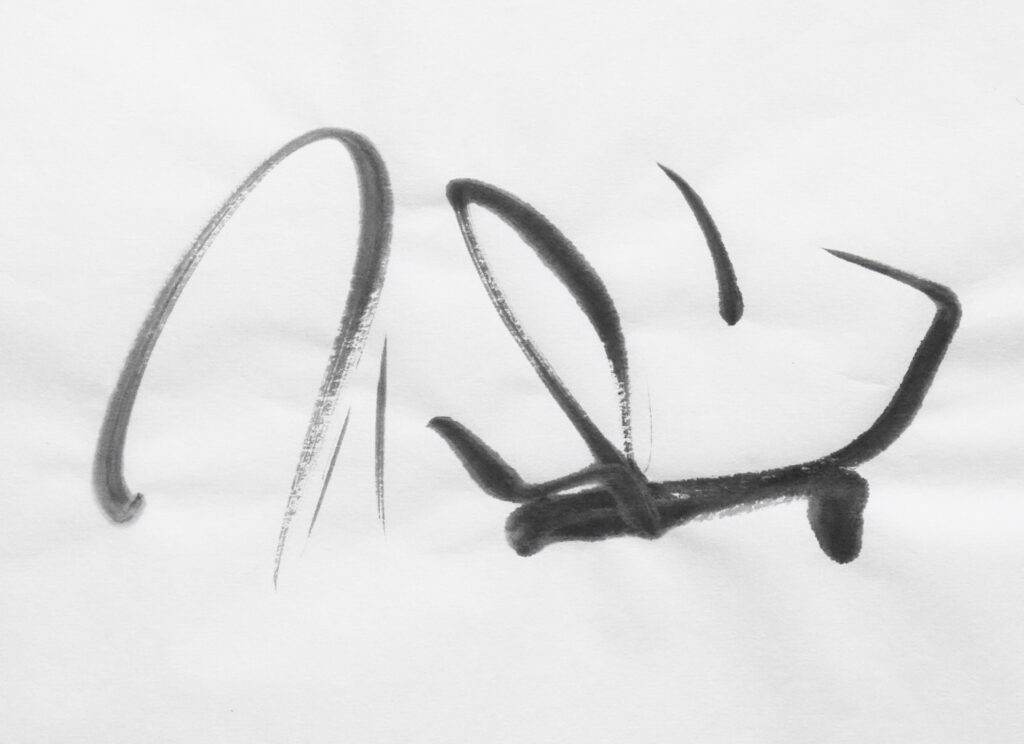
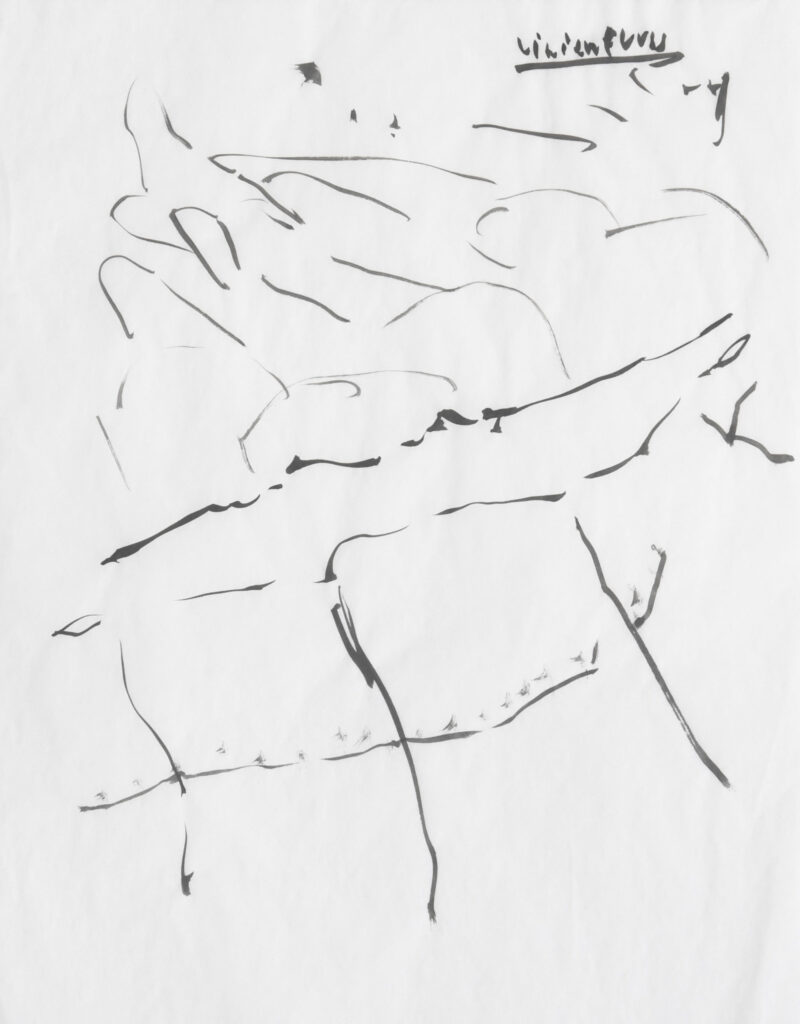

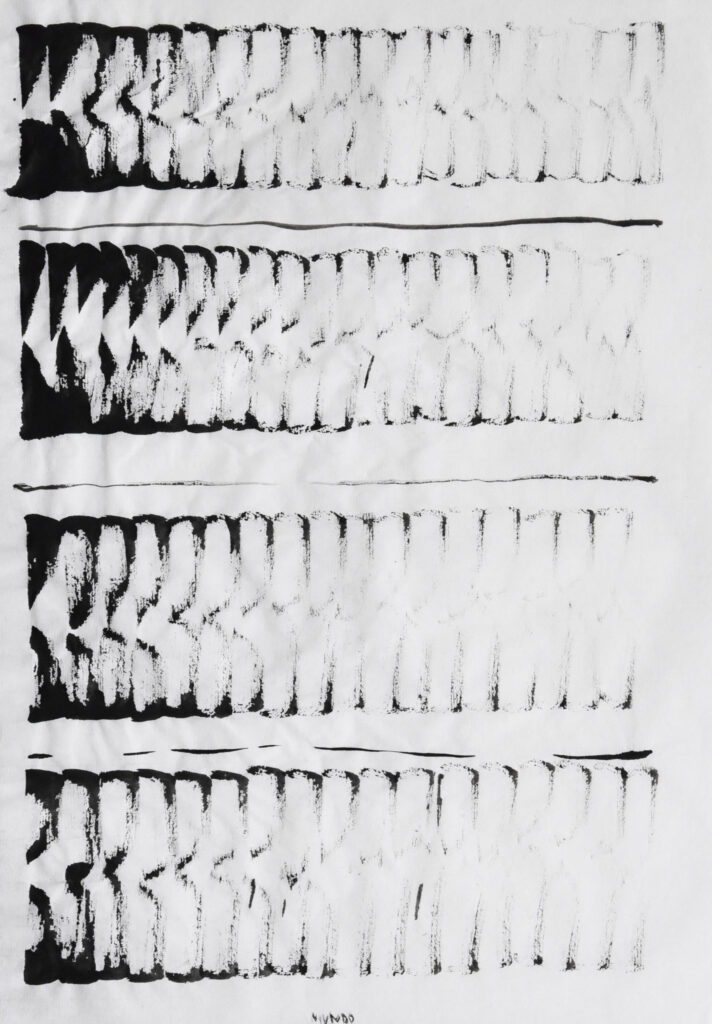
2014
„das Verblühen“, animals and lands
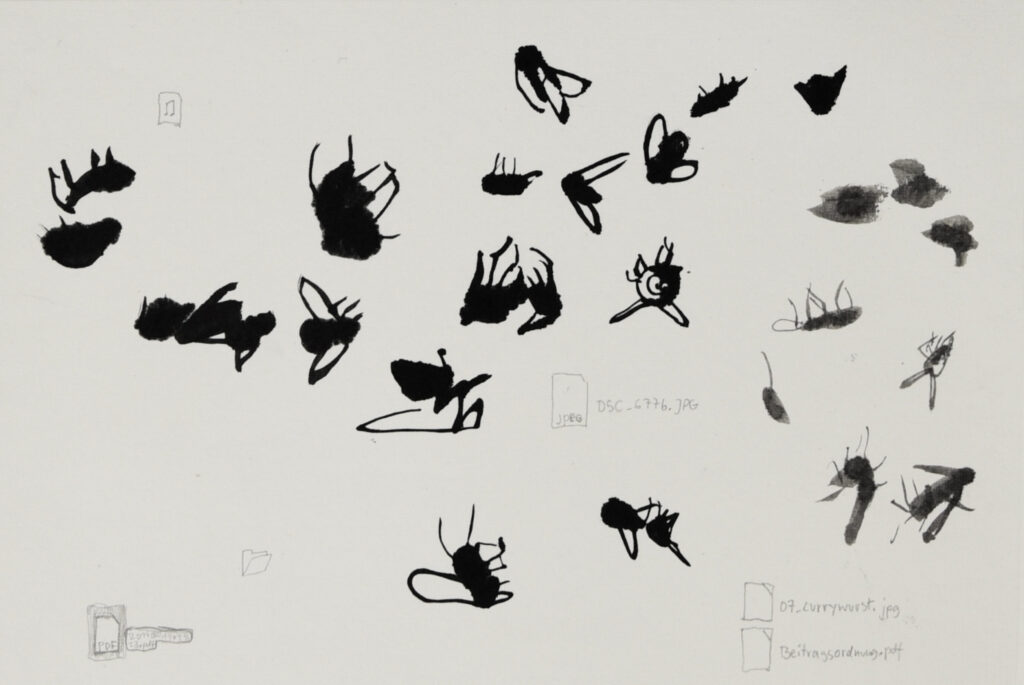


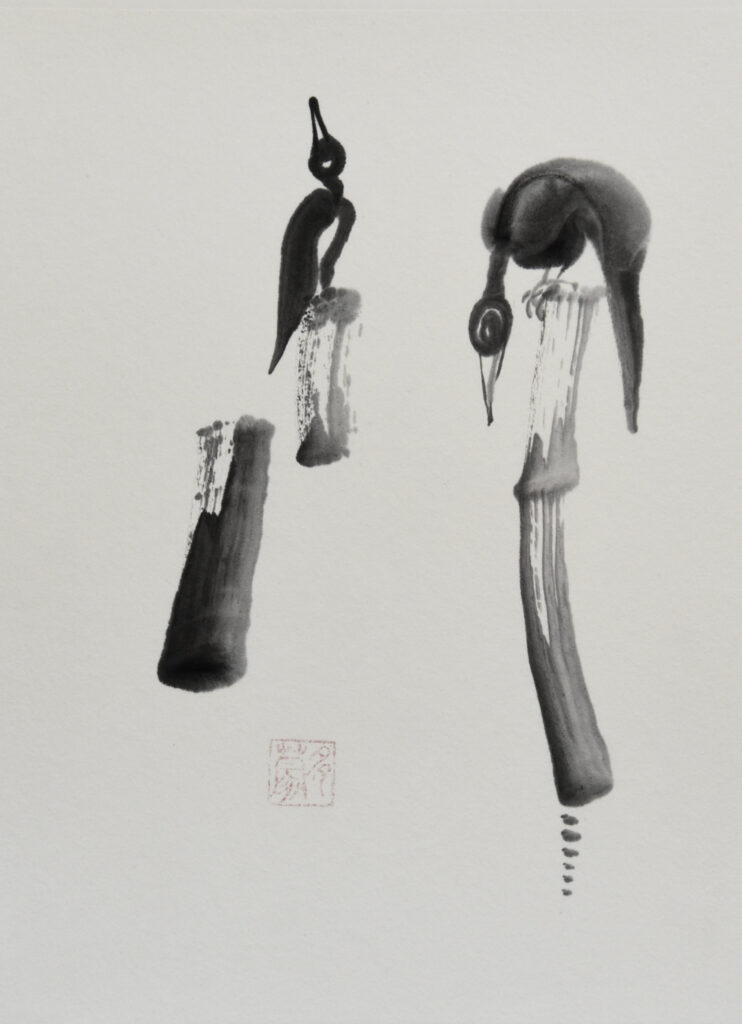
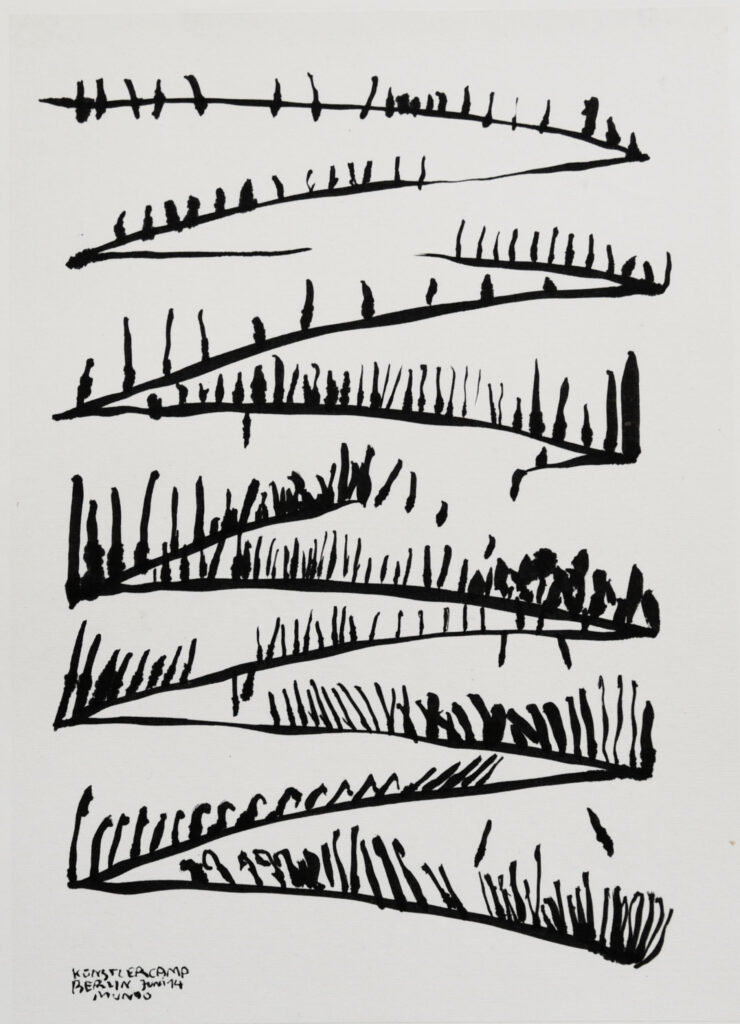
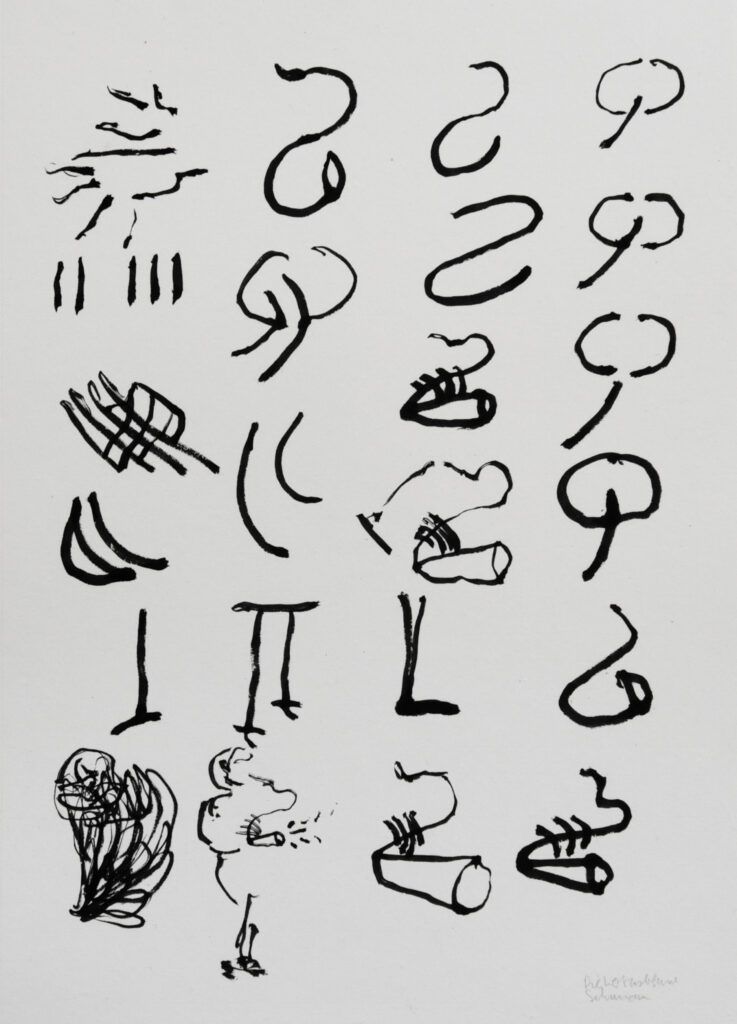

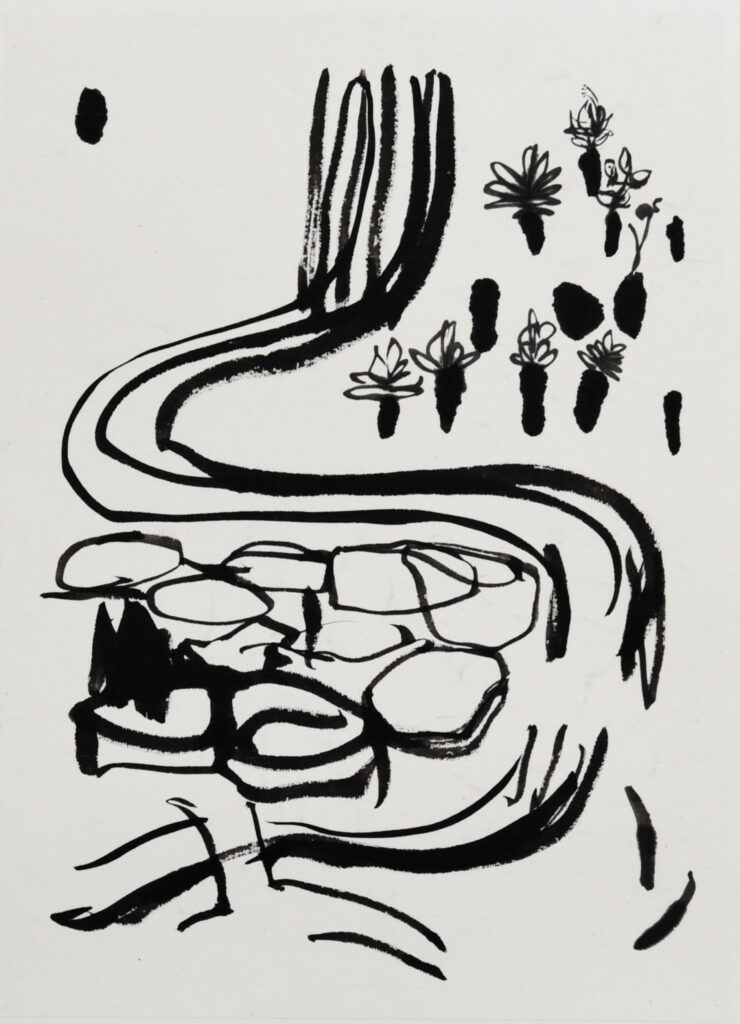
2012
„Abstrahieren Buchstabieren“ – Metamorphosen von Form und Linie bis zum Zeichen
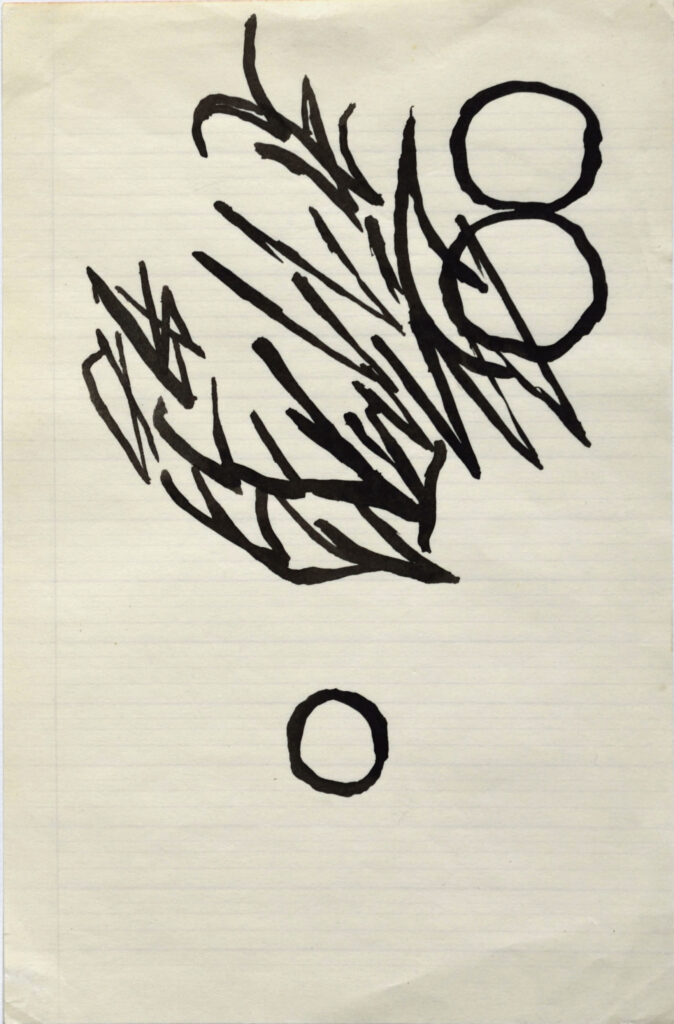
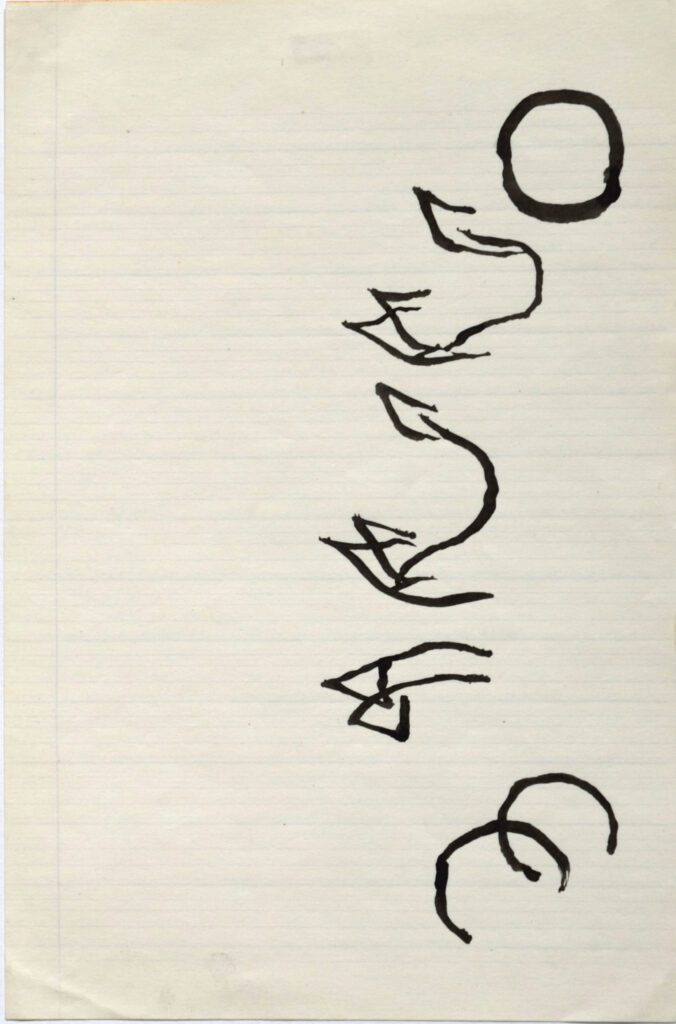
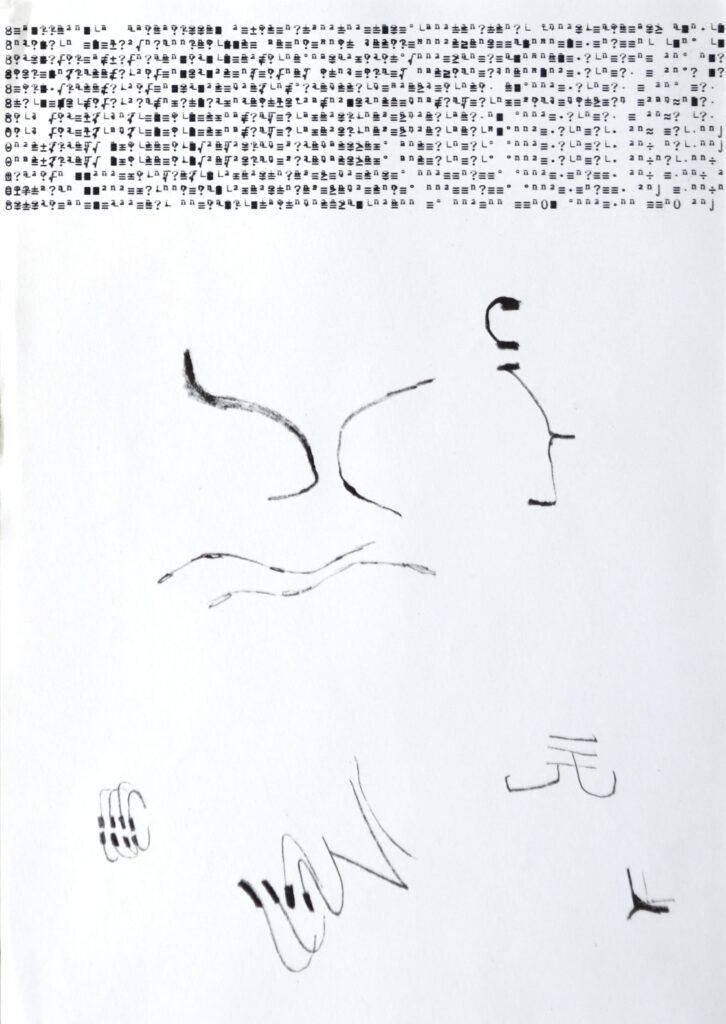
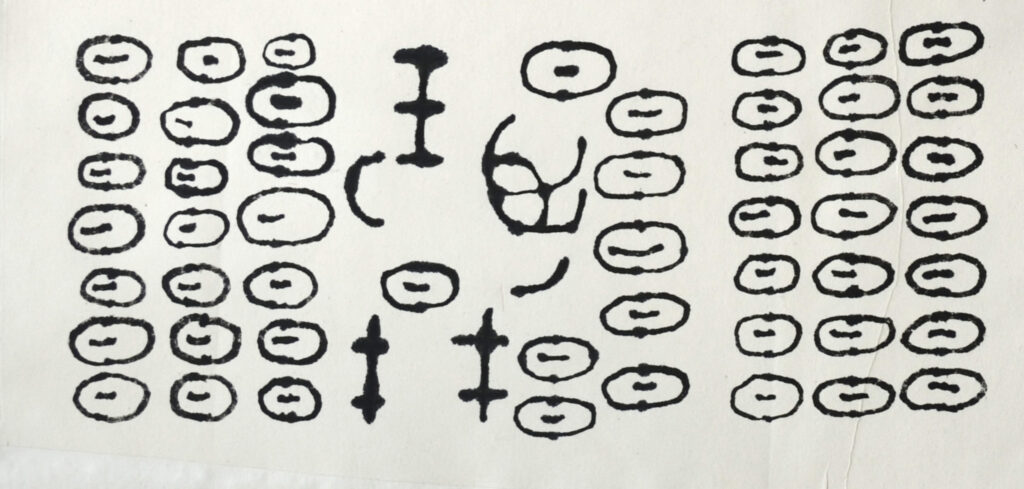
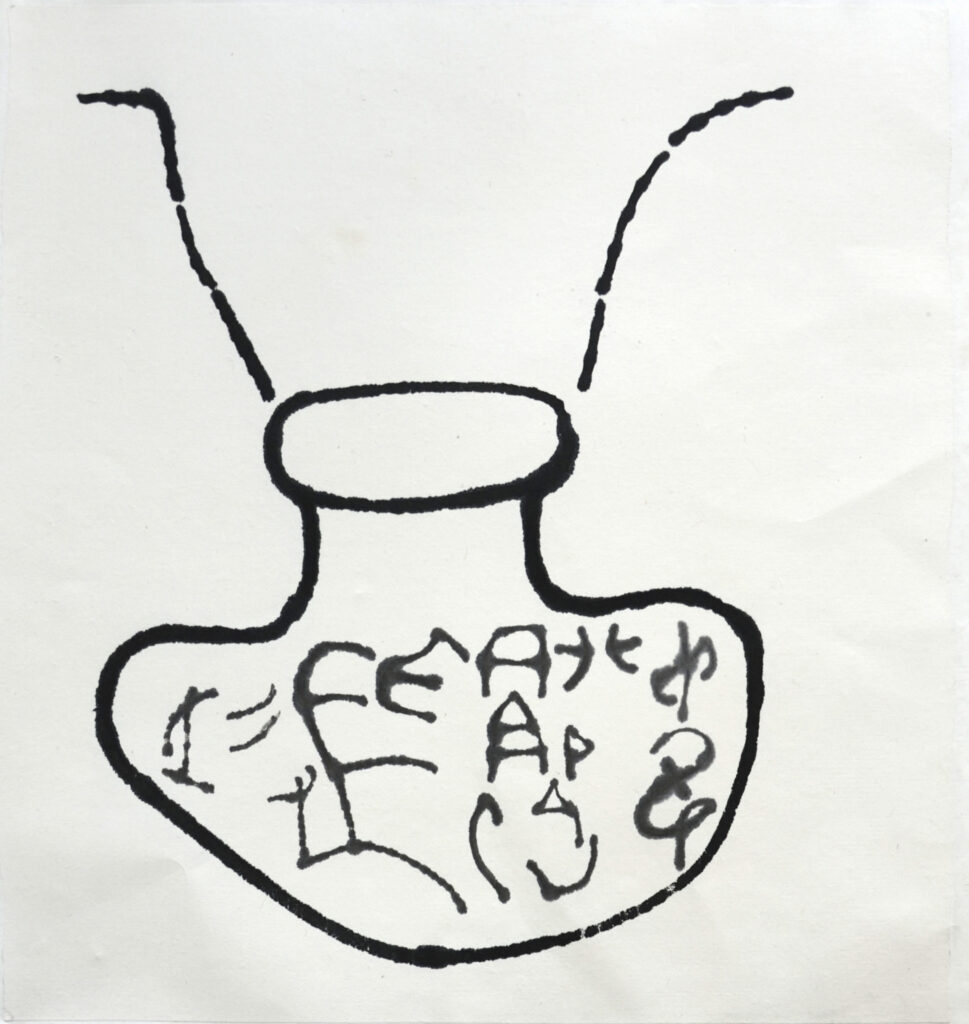
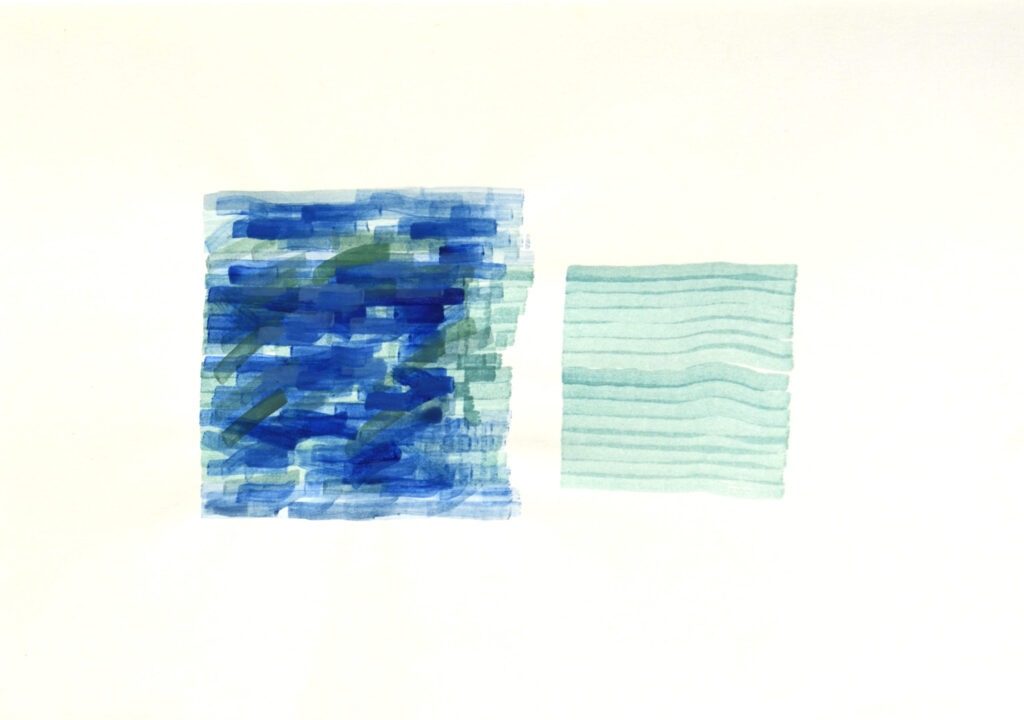

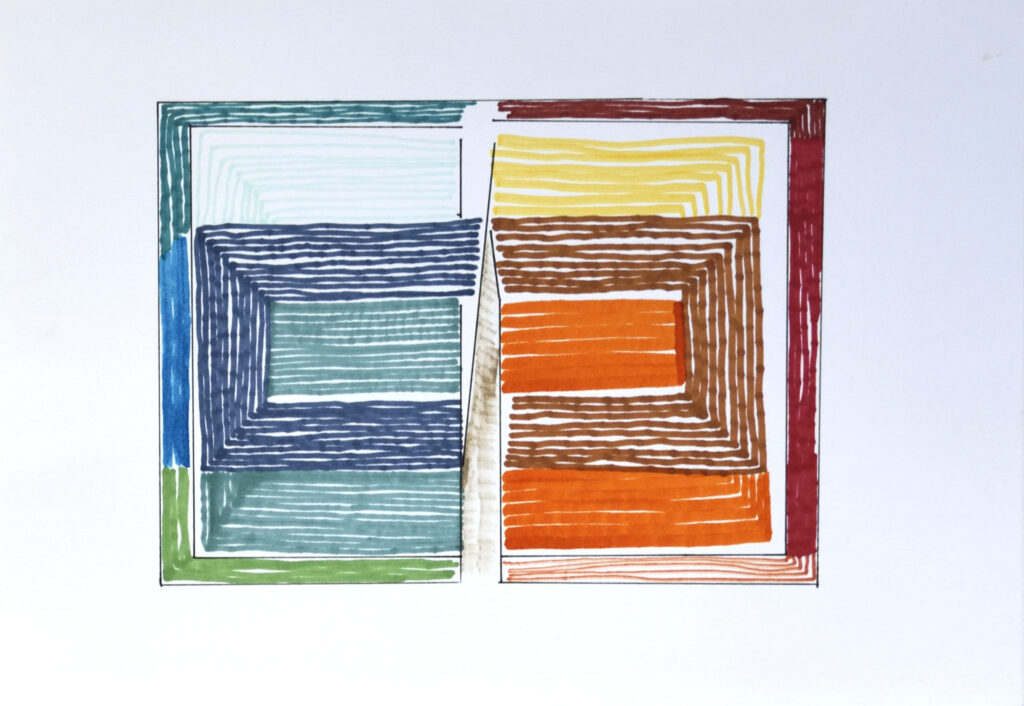

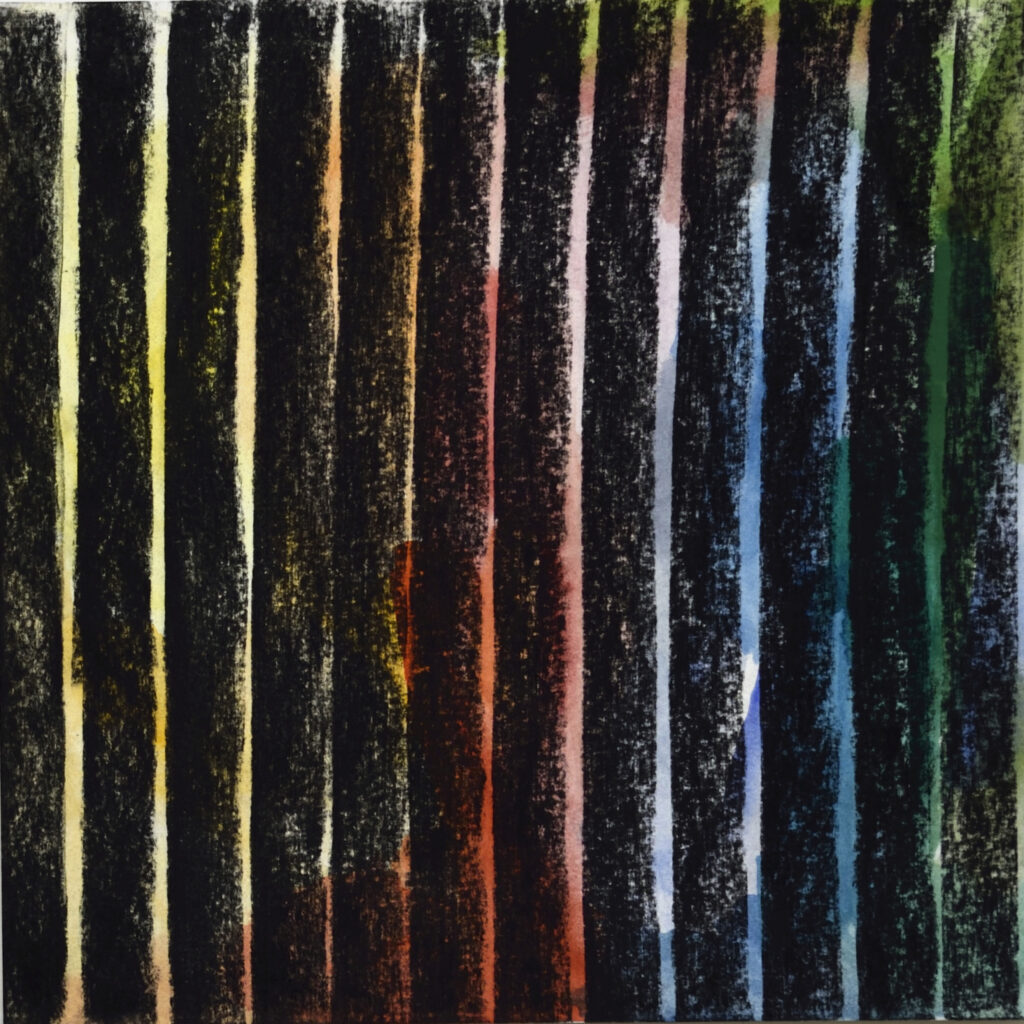

2011
„Abstrahieren Buchstabieren“ – Metamorphosen von Form und Linie

